Tag #what
753 papers:
 POPL-2020-MigeedP #decidability #question
POPL-2020-MigeedP #decidability #question- What is decidable about gradual types? (ZM, JP), p. 29.
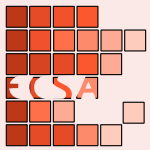 ECSA-2019-GalsterGG #machine learning #perspective #quality
ECSA-2019-GalsterGG #machine learning #perspective #quality- What Quality Attributes Can We Find in Product Backlogs? A Machine Learning Perspective (MG, FG, FG), pp. 88–96.
 EDM-2019-GitinabardBHL #analysis #online #platform #sequence #student
EDM-2019-GitinabardBHL #analysis #online #platform #sequence #student- What will you do next? A sequence analysis on the student transitions between online platforms in blended courses (NG, TB, SH, CFL).
 EDM-2019-WhitehillAH #crowdsourcing #learning #predict
EDM-2019-WhitehillAH #crowdsourcing #learning #predict- Do Learners Know What's Good for Them? Crowdsourcing Subjective Ratings of OERs to Predict Learning Gains (JW, CA, BH).
 EDM-2019-XuGLB #how #social
EDM-2019-XuGLB #how #social- What You Say is Relevant to How You Make Friends: Measuring the Effect of Content on Social Connection (YX, NG, CFL, TB).
 ICPC-2019-Weimer #question
ICPC-2019-Weimer #question- What goes on in your brain when you read and understand code? (WW), p. 1.
 ICSME-2019-AlsharifKM #automation #generative #sql #testing
ICSME-2019-AlsharifKM #automation #generative #sql #testing- What Factors Make SQL Test Cases Understandable for Testers? A Human Study of Automated Test Data Generation Techniques (AA, GMK, PM), pp. 437–448.
 ICSME-2019-JinCX #api #developer #question
ICSME-2019-JinCX #api #developer #question- What Do Developers Discuss about Biometric APIs? (ZJ, KYC, XX0), pp. 348–352.
 MSR-2019-BangashSCWHA #case study #developer #machine learning #ml #stack overflow
MSR-2019-BangashSCWHA #case study #developer #machine learning #ml #stack overflow- What do developers know about machine learning: a study of ML discussions on StackOverflow (AAB, HS, SAC, AWW, AH, KA0), pp. 260–264.
 MSR-2019-JinS #empirical #stack overflow
MSR-2019-JinS #empirical #stack overflow- What edits are done on the highly answered questions in stack overflow?: an empirical study (XJ, FS), pp. 225–229.
 MSR-2019-ManesB #developer #git #how #question #stack overflow
MSR-2019-ManesB #developer #git #how #question #stack overflow- How often and what StackOverflow posts do developers reference in their GitHub projects? (SSM, OB), pp. 235–239.
 SANER-2019-Whittle
SANER-2019-Whittle - Does your software value what you value? (Keynote) (JW), p. 2.
 Haskell-2019-SchrijversPWJ #algebra #composition #monad
Haskell-2019-SchrijversPWJ #algebra #composition #monad- Monad transformers and modular algebraic effects: what binds them together (TS, MP, NW, MJ), pp. 98–113.
 CoG-2019-AshlockS19a #automation #generative #representation
CoG-2019-AshlockS19a #automation #generative #representation- Automatic Generation of Level Maps with the Do What's Possible Representation (DA, CS), pp. 1–8.
 FDG-2019-YiLD
FDG-2019-YiLD - What if we were twice as close to the sun?: findings from a science summer camp serving underrepresented youth (SY, HCL, ÖD), p. 7.
 VS-Games-2019-Jercic #game studies #metric #performance #predict #set
VS-Games-2019-Jercic #game studies #metric #performance #predict #set- What could the baseline measurements predict about decision-making performance in serious games set in the financial context (PJ), pp. 1–4.
 CIKM-2019-BoutetG #privacy
CIKM-2019-BoutetG #privacy- Inspect What Your Location History Reveals About You: Raising user awareness on privacy threats associated with disclosing his location data (AB, SG), pp. 2861–2864.
 CIKM-2019-SunQYCCC #question
CIKM-2019-SunQYCCC #question- What Can History Tell Us? (KS, TQ, HY, TC, YC, LC0), pp. 1593–1602.
 CIKM-2019-ZhaoLZWJXWM #evaluation #matter #problem
CIKM-2019-ZhaoLZWJXWM #evaluation #matter #problem- What You Look Matters?: Offline Evaluation of Advertising Creatives for Cold-start Problem (ZZ, LL, BZ0, MW, YJ, LX, FW, WYM), pp. 2605–2613.
 ICML-2019-ByrdL #learning #question
ICML-2019-ByrdL #learning #question- What is the Effect of Importance Weighting in Deep Learning? (JB, ZCL), pp. 872–881.
 ICML-2019-JangLHS #learning
ICML-2019-JangLHS #learning- Learning What and Where to Transfer (YJ, HL, SJH, JS), pp. 3030–3039.
 KDD-2019-ChenZBXL #behaviour #predict
KDD-2019-ChenZBXL #behaviour #predict- Investment Behaviors Can Tell What Inside: Exploring Stock Intrinsic Properties for Stock Trend Prediction (CC, LZ, JB0, CX, TYL), pp. 2376–2384.
 Onward-2019-Smaragdakis #programming language #question
Onward-2019-Smaragdakis #programming language #question- Next-paradigm programming languages: what will they look like and what changes will they bring? (YS), pp. 187–197.
 PLATEAU-2019-HaoG #programming #question
PLATEAU-2019-HaoG #programming #question- Approaching Polyglot Programming: What Can We Learn from Bilingualism Studies? (RLH, ELG), p. 7.
 ASE-2019-ZhouSZ #named
ASE-2019-ZhouSZ #named- Lancer: Your Code Tell Me What You Need (SZ, BS, HZ), pp. 1202–1205.
 ESEC-FSE-2019-BagherzadehK #big data #developer #scalability
ESEC-FSE-2019-BagherzadehK #big data #developer #scalability- Going big: a large-scale study on what big data developers ask (MB, RK), pp. 432–442.
 ESEC-FSE-2019-ZhouVK #case study #performance #social
ESEC-FSE-2019-ZhouVK #case study #performance #social- What the fork: a study of inefficient and efficient forking practices in social coding (SZ, BV, CK), pp. 350–361.
 CASE-2019-MaggipintoSZM #case study #fault #multi #predict #process
CASE-2019-MaggipintoSZM #case study #fault #multi #predict #process- What are the Most Informative Data for Virtual Metrology? A use case on Multi-Stage Processes Fault Prediction (MM, GAS, FZ, SFM), pp. 1796–1801.
 CAV-2019-Siegel #on the fly #partial order #reduction
CAV-2019-Siegel #on the fly #partial order #reduction- What's Wrong with On-the-Fly Partial Order Reduction (SFS), pp. 478–495.
 ICST-2019-LiuKB0KT #automation #benchmark #bias #exclamation #fault #locality #metric #program repair
ICST-2019-LiuKB0KT #automation #benchmark #bias #exclamation #fault #locality #metric #program repair- You Cannot Fix What You Cannot Find! An Investigation of Fault Localization Bias in Benchmarking Automated Program Repair Systems (KL0, AK, TFB, DK0, JK, YLT), pp. 102–113.
 EDM-2018-CruesBAPBS #comprehension
EDM-2018-CruesBAPBS #comprehension- Who they are and what they want: Understanding the reasons for MOOC enrollment (RWC, NB, CJA, MP, SB, NS).
 EDM-2018-PytlarzPPP #network #predict #student #transaction
EDM-2018-PytlarzPPP #network #predict #student #transaction- What can we learn from college students' network transactions? Constructing useful features for student success prediction (IP, SP, MP, RP).
 ICPC-2018-0001LYC #comprehension #mobile
ICPC-2018-0001LYC #comprehension #mobile- What's inside my app?: understanding feature redundancy in mobile apps (YG0, YL, ZY, XC), pp. 266–276.
 ICPC-2018-TymchukGN #developer #feedback #jit #static analysis
ICPC-2018-TymchukGN #developer #feedback #jit #static analysis- JIT feedback: what experienced developers like about static analysis (YT, MG, ON), pp. 64–73.
 ICPC-2018-VivianiJFXM #design #developer #question #topic
ICPC-2018-VivianiJFXM #design #developer #question #topic- What design topics do developers discuss? (GV, CJJ, MF, XX0, GCM), pp. 328–331.
 MSR-2018-ArimaHK08 #case study #commit #how #java #question
MSR-2018-ArimaHK08 #case study #commit #how #java #question- A study on inappropriately partitioned commits: how much and what kinds of IP commits in Java projects? (RA, YH, SK), pp. 336–340.
 MSR-2018-CalciatiKBG #question
MSR-2018-CalciatiKBG #question- What did really change with the new release of the app? (PC, KK, XB, AG), pp. 142–152.
 MSR-2018-GeorgiouKLS #energy #programming language #question
MSR-2018-GeorgiouKLS #energy #programming language #question- What are your programming language's energy-delay implications? (SG, MK, PL, DS), pp. 303–313.
- ICFP-2018-BoisseauG #functional
- What you needa know about Yoneda: profunctor optics and the Yoneda lemma (functional pearl) (GB, JG), p. 27.
- ICFP-2018-YorgeyF #difference #functional
- What's the difference? a functional pearl on subtracting bijections (BAY, KF), p. 21.
 FDG-2018-KosaS #analysis #game studies
FDG-2018-KosaS #analysis #game studies- What tabletop players think about augmented tabletop games: a content analysis (MK, PS), p. 8.
 CIKM-2018-WuQLJ #named
CIKM-2018-WuQLJ #named- PARL: Let Strangers Speak Out What You Like (LW, CQ, CL, DJ), pp. 677–686.
 ICPR-2018-AbateNBM #question #smarttech
ICPR-2018-AbateNBM #question #smarttech- What are you doing while answering your smartphone? (AFA, MN, SB, MDM), pp. 3120–3125.
 ICPR-2018-VinayavekhinCMA #comprehension #learning #using
ICPR-2018-VinayavekhinCMA #comprehension #learning #using- Focusing on What is Relevant: Time-Series Learning and Understanding using Attention (PV, SC, AM, DJA, GDM, DK, RT), pp. 2624–2629.
 KDD-2018-ZhouNH #adaptation #education #memory management
KDD-2018-ZhouNH #adaptation #education #memory management- Unlearn What You Have Learned: Adaptive Crowd Teaching with Exponentially Decayed Memory Learners (YZ, ARN, JH), pp. 2817–2826.
 OOPSLA-2018-MathurK0 #concurrent #detection #power of #predict
OOPSLA-2018-MathurK0 #concurrent #detection #power of #predict- What happens-after the first race? enhancing the predictive power of happens-before based dynamic race detection (UM, DK, MV0), p. 29.
 POPL-2018-ChenCHLW #constraints #decidability #string
POPL-2018-ChenCHLW #constraints #decidability #string- What is decidable about string constraints with the ReplaceAll function (TC, YC, MH, AWL, ZW), p. 29.
 ESEC-FSE-2018-ChenSFMXLX #mobile #question
ESEC-FSE-2018-ChenSFMXLX #mobile #question- Are mobile banking apps secure? what can be improved? (SC, TS, LF, GM, MX, YL0, LX), pp. 797–802.
 ESEC-FSE-2018-RamSCB #empirical #overview
ESEC-FSE-2018-RamSCB #empirical #overview- What makes a code change easier to review: an empirical investigation on code change reviewability (AR, AAS, MC, AB), pp. 201–212.
- ICSE-2018-KalliamvakouB0B #question
- What makes a great manager of software engineers? (EK, CB, TZ0, AB, RD, DMG), p. 701.
 CAV-2018-AkshayCGKS #functional #question #synthesis
CAV-2018-AkshayCGKS #functional #question #synthesis- What's Hard About Boolean Functional Synthesis? (SA, SC, SG, SK, SS), pp. 251–269.
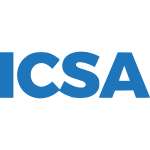 ICSA-2017-ErnstBON #automation #design #tool support
ICSA-2017-ErnstBON #automation #design #tool support- What to Fix? Distinguishing between Design and Non-design Rules in Automated Tools (NAE, SB, IO, RLN), pp. 165–168.
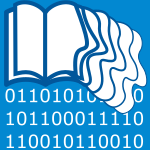 JCDL-2017-PoursardarS
JCDL-2017-PoursardarS - What Is Part of That Resource? User Expectations for Personal Archiving (FP, FS), pp. 229–232.
 CSEET-2017-GarySL #lessons learnt #online #re-engineering
CSEET-2017-GarySL #lessons learnt #online #re-engineering- It's Not What You Think: Lessons Learned Developing an Online Software Engineering Program (KAG, SS, TEL), pp. 236–240.
 ICPC-2017-AjamiWF #complexity #question #syntax
ICPC-2017-AjamiWF #complexity #question #syntax- Syntax, predicates, idioms: what really affects code complexity? (SA, YW, DGF), pp. 66–76.
 ICSME-2017-BlondeauEACCD #case study #developer #scalability #testing
ICSME-2017-BlondeauEACCD #case study #developer #scalability #testing- What are the Testing Habits of Developers? A Case Study in a Large IT Company (VB, AE, NA, SC, PC, SD), pp. 58–68.
 ICSME-2017-SilvaWGSG #how #question
ICSME-2017-SilvaWGSG #how #question- How Long and How Much: What to Expect from Summer of Code Participants? (JDOS, ISW, DMG, IFS, MAG), pp. 69–79.
 SANER-2017-ChatterjeeNDAPK #case study #documentation
SANER-2017-ChatterjeeNDAPK #case study #documentation- What information about code snippets is available in different software-related documents? An exploratory study (PC, MAN, KD, VA, LLP, NAK), pp. 382–386.
 SANER-2017-MoonSLK #analysis #behaviour #generative #how
SANER-2017-MoonSLK #analysis #behaviour #generative #how- Log generation for coding behavior analysis: For focusing on how kids are coding not what they are coding (RJM, KMS, HYL, HJK), pp. 575–576.
 CHI-PLAY-2017-Peddycord-LiuCK #game studies #question #student #using
CHI-PLAY-2017-Peddycord-LiuCK #game studies #question #student #using- Using Serious Game Analytics to Inform Digital Curricular Sequencing: What Math Objective Should Students Play Next? (ZPL, CC, SK, TB, CFL, TR), pp. 195–204.
 FDG-2017-Schrier #game studies #problem
FDG-2017-Schrier #game studies #problem- What's in a name?: naming games that solve real-world problems (KS), p. 4.
 FDG-2017-Smith #generative #question
FDG-2017-Smith #generative #question- What do we value in procedural content generation? (GS), p. 2.
 FDG-2017-Whitehead #design #question
FDG-2017-Whitehead #design #question- Art and science of engineered design: what kind of discipline is PCG? (JW), p. 3.
 ECIR-2017-Anand0P #detection #exclamation #network
ECIR-2017-Anand0P #detection #exclamation #network- We Used Neural Networks to Detect Clickbaits: You Won't Believe What Happened Next! (AA, TC0, NP), pp. 541–547.
 ICML-2017-BalduzziFLLMM #problem #question
ICML-2017-BalduzziFLLMM #problem #question- The Shattered Gradients Problem: If resnets are the answer, then what is the question? (DB, MF, LL, JPL, KWDM, BM), pp. 342–350.
 KDD-2017-Dwork #question
KDD-2017-Dwork #question- What's Fair? (CD), p. 1.
 KDD-2017-JohariKPW #matter #testing #why
KDD-2017-JohariKPW #matter #testing #why- Peeking at A/B Tests: Why it matters, and what to do about it (RJ, PK, LP, DW0), pp. 1517–1525.
 KDD-2017-PaulLTYF #analysis #exclamation #named #sentiment #twitter
KDD-2017-PaulLTYF #analysis #exclamation #named #sentiment #twitter- Compass: Spatio Temporal Sentiment Analysis of US Election What Twitter Says! (DP, FL0, MKT, XY, RF), pp. 1585–1594.
 ECOOP-2017-HuangR #concurrent #detection #performance #perspective #precise
ECOOP-2017-HuangR #concurrent #detection #performance #perspective #precise- What's the Optimal Performance of Precise Dynamic Race Detection? - A Redundancy Perspective (JH, AKR), p. 22.
 OOPSLA-2017-WuC #fault #how #question #student
OOPSLA-2017-WuC #fault #how #question #student- How type errors were fixed and what students did? (BW, SC0), p. 27.
 ESEC-FSE-2017-IvanovRSYZ #research
ESEC-FSE-2017-IvanovRSYZ #research- What do software engineers care about? gaps between research and practice (VI0, AR, GS, JY, VZ), pp. 890–895.
- ICSE-2017-JiangLYX #analysis #automation #integration #testing
- What causes my test alarm?: automatic cause analysis for test alarms in system and integration testing (HJ, XL, ZY, JX), pp. 712–723.
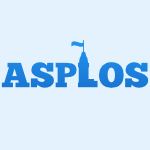 ASPLOS-2017-DelimitrouK #in the cloud #named
ASPLOS-2017-DelimitrouK #in the cloud #named- Bolt: I Know What You Did Last Summer... In The Cloud (CD, CK), pp. 599–613.
 ASPLOS-2017-NguyenP #memory management #scalability #source code #transaction
ASPLOS-2017-NguyenP #memory management #scalability #source code #transaction- What Scalable Programs Need from Transactional Memory (DN, KP), pp. 105–118.
 ECSA-2016-AngelovMG #agile #architecture #challenge #question
ECSA-2016-AngelovMG #agile #architecture #challenge #question- Architects in Scrum: What Challenges Do They Face? (SA, MM, MG), pp. 229–237.
 JCDL-2016-NishiokaS #matter #profiling #question #recommendation #twitter
JCDL-2016-NishiokaS #matter #profiling #question #recommendation #twitter- Profiling vs. Time vs. Content: What does Matter for Top-k Publication Recommendation based on Twitter Profiles? (CN, AS), pp. 171–180.
 CSEET-2016-Bass #education #question #re-engineering
CSEET-2016-Bass #education #question #re-engineering- Software Engineering Education in the New World: What Needs to Change? (MB), pp. 213–221.
 EDM-2016-BaikadiELS #analysis
EDM-2016-BaikadiELS #analysis- Redefining “What” in Analyses of Who Does What in MOOCs (AB, CDE, YL, CS), pp. 569–570.
 EDM-2016-StanhopeR16a #education
EDM-2016-StanhopeR16a #education- Educational Technology: What 49 Schools Discovered about Usage when the Data were Uncovered (DS, KR), pp. 644–645.
 ICSME-2016-AbdouSBN #fault #question
ICSME-2016-AbdouSBN #fault #question- What is the Cause for a Defect to be Re-Assigned? (TA, BS, AB, AN), pp. 502–508.
 SANER-2016-NayebiAR #developer #mobile #question
SANER-2016-NayebiAR #developer #mobile #question- Release Practices for Mobile Apps - What do Users and Developers Think? (MN, BA, GR), pp. 552–562.
 CHI-PLAY-2016-TyackW0 #game studies #people
CHI-PLAY-2016-TyackW0 #game studies #people- The Appeal of MOBA Games: What Makes People Start, Stay, and Stop (AT, PW, DMJ0), pp. 313–325.
 CHI-PLAY-2016-Yee #motivation
CHI-PLAY-2016-Yee #motivation- The Gamer Motivation Profile: What We Learned From 250, 000 Gamers (NY), p. 2.
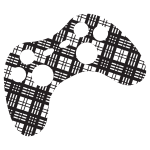 DiGRA-FDG-2016-BergstromCJ #game studies #multi #online #question
DiGRA-FDG-2016-BergstromCJ #game studies #multi #online #question- Digital Detritus: What Can We Learn From Abandoned Massively Multiplayer Online Game Avatars? (KB, SdC, JJ).
 DiGRA-FDG-2016-Jonne #challenge
DiGRA-FDG-2016-Jonne #challenge- What Does it Mean to be Orlanthi? Hermeneutic Challenge in King of Dragon Pass (JA).
 ECIR-2016-FlaesRW #analysis #multi #sentiment
ECIR-2016-FlaesRW #analysis #multi #sentiment- What Multimedia Sentiment Analysis Says About City Liveability (JBF, SR, MW), pp. 824–829.
 ECIR-2016-XuGWZL #social #social media
ECIR-2016-XuGWZL #social #social media- Do Your Social Profiles Reveal What Languages You Speak? Language Inference from Social Media Profiles (YX, MRG, ZW, DZ, SL), pp. 561–574.
 ICPR-2016-Ohn-BarT16b #question
ICPR-2016-Ohn-BarT16b #question- What makes an on-road object important? (EOB, MMT), pp. 3392–3397.
 ICPR-2016-UchidaS #question
ICPR-2016-UchidaS #question- What does scene text tell us? (SU, YS), pp. 4047–4052.
 PLATEAU-2016-Ko #programming language #question
PLATEAU-2016-Ko #programming language #question- What is a programming language, really? (AJK0), pp. 32–33.
 PLATEAU-2016-Salvaneschi #data flow #question
PLATEAU-2016-Salvaneschi #data flow #question- What do we really know about data flow languages? (GS), pp. 30–31.
 ASE-2016-ChristakisB #developer #empirical #program analysis
ASE-2016-ChristakisB #developer #empirical #program analysis- What developers want and need from program analysis: an empirical study (MC, CB), pp. 332–343.
 ASE-2016-Visser
ASE-2016-Visser - What makes killing a mutant hard (WV), pp. 39–44.
 FSE-2016-Burnett
FSE-2016-Burnett - “Womenomics” and gender-inclusive software: what software engineers need to know (invited talk) (MMB), p. 1.
 FSE-2016-SorboPASVCG #recommendation
FSE-2016-SorboPASVCG #recommendation- What would users change in my app? summarizing app reviews for recommending software changes (ADS, SP, CVA, JS, CAV, GC, HCG), pp. 499–510.
- ICSE-2016-RaghothamanWH #code search #named #synthesis
- SWIM: synthesizing what i mean: code search and idiomatic snippet synthesis (MR, YW, YH), pp. 357–367.
 ICST-2016-Gao #interactive #question #testing
ICST-2016-Gao #interactive #question #testing- Making System User Interactive Tests Repeatable: When and What Should we Control? (ZG), pp. 379–380.
 TAP-2016-Slama #automation #certification #exclamation #testing
TAP-2016-Slama #automation #certification #exclamation #testing- Automatic Predicate Testing in Formal Certification - You've only Proven What You've Said, Not What You Meant! (FS), pp. 191–198.
 DocEng-2015-AtenciaDG #linked data #open data #question
DocEng-2015-AtenciaDG #linked data #open data #question- What Is This Thing Called Linked Data? (MA, JD, PG), pp. 233–234.
 DocEng-2015-Paoli #documentation
DocEng-2015-Paoli #documentation- Documents as Data, Data as Documents: What we learned about Semi-Structured Information for our Open World of Cloud & Devices (JP), p. 1.
 JCDL-2015-BarthelTKSB #twitter
JCDL-2015-BarthelTKSB #twitter- What does Twitter Measure?: Influence of Diverse User Groups in Altmetrics (SB, ST, BK, PS, WTB), pp. 119–128.
 SIGMOD-2015-CSKZYRPAKDRD #big data #industrial #why
SIGMOD-2015-CSKZYRPAKDRD #big data #industrial #why- Why Big Data Industrial Systems Need Rules and What We Can Do About It (PSGC, CS, KGK, HZ, FY, NR, SP, EA, GK, RD, VR, AD), pp. 265–276.
 EDM-2015-JiangZLL #analysis #network #question
EDM-2015-JiangZLL #analysis #network #question- Influence Analysis by Heterogeneous Network in MOOC Forums: What can We Discover? (ZJ, YZ, CL, XL), pp. 242–249.
 ICPC-2015-MinelliML #developer #how
ICPC-2015-MinelliML #developer #how- I know what you did last summer: an investigation of how developers spend their time (RM, AM, ML), pp. 25–35.
 ICSME-2015-KhadkaSKSHJDB #analysis #case study #delivery #legacy
ICSME-2015-KhadkaSKSHJDB #analysis #case study #delivery #legacy- Does software modernization deliver what it aimed for? A post modernization analysis of five software modernization case studies (RK, PS, BK, AS, JH, SJ, EvD, MB), pp. 477–486.
 ICSME-2015-SharmaTL #question #re-engineering #twitter
ICSME-2015-SharmaTL #question #re-engineering #twitter- What’s hot in software engineering Twitter space? (AS, YT, DL), pp. 541–545.
 ICSME-2015-TianNLH #android #case study
ICSME-2015-TianNLH #android #case study- What are the characteristics of high-rated apps? A case study on free Android Applications (YT, MN, DL, AEH), pp. 301–310.
 MSR-2015-WangPWG #comprehension #git #using
MSR-2015-WangPWG #comprehension #git #using- What Is the Gist? Understanding the Use of Public Gists on GitHub (WW, GPC, EW, DMG), pp. 314–323.
 SANER-2015-Mirakhorli #architecture #how #question #re-engineering #why
SANER-2015-Mirakhorli #architecture #how #question #re-engineering #why- Software architecture reconstruction: Why? What? How? (MM), p. 595.
 ICALP-v1-2015-BienvenuDS #question #source code
ICALP-v1-2015-BienvenuDS #question #source code- What Percentage of Programs Halt? (LB, DD, AS), pp. 219–230.
 CHI-PLAY-2015-HarpsteadZNGCSG #game studies #people
CHI-PLAY-2015-HarpsteadZNGCSG #game studies #people- What Drives People: Creating Engagement Profiles of Players from Game Log Data (EH, TZ0, NN, JJG, RC, TS, DG), pp. 369–379.
 FDG-2015-CookESSTTZ #game studies #question
FDG-2015-CookESSTTZ #game studies #question- AI-based Games: Contrabot and What Did You Do? (MC0, ME, AMS, GS, TT, JT, AZ).
 FDG-2015-KnauerM #artificial reality #game studies #question
FDG-2015-KnauerM #artificial reality #game studies #question- Augmented Reality Games: What Do We Know and Where Should We Go? (MK, JM).
 FDG-2015-Lu #case study #game studies #video
FDG-2015-Lu #case study #game studies #video- What kind of stories do children like in an active video game (AVG)? An exploratory study (AL).
 CHI-2015-AbbarMW #twitter
CHI-2015-AbbarMW #twitter- You Tweet What You Eat: Studying Food Consumption Through Twitter (SA, YM, IW), pp. 3197–3206.
 CHI-2015-AmmariKLS #how #online
CHI-2015-AmmariKLS #how #online- Managing Children’s Online Identities: How Parents Decide what to Disclose about their Children Online (TA, PK, CL, SYS), pp. 1895–1904.
 CHI-2015-BorstTR #problem
CHI-2015-BorstTR #problem- What Makes Interruptions Disruptive?: A Process-Model Account of the Effects of the Problem State Bottleneck on Task Interruption and Resumption (JPB, NAT, HvR), pp. 2971–2980.
 CHI-2015-CramerJ #communication #question #why
CHI-2015-CramerJ #communication #question #why- Couples’ Communication Channels: What, When & Why? (HC, MLJ), pp. 709–712.
 CHI-2015-GanglbauerFG #why
CHI-2015-GanglbauerFG #why- Why and what did we throw out?: Probing on Reflection through the Food Waste Diary (EG, GF, FG), pp. 1105–1114.
 CHI-2015-GruningBO #question
CHI-2015-GruningBO #question- Medium, Access, and Obsolescence: What Kinds of Objects are Lasting Objects? (JG, JB, MO), pp. 3433–3442.
 CHI-2015-HangLH #authentication #exclamation #security #smarttech
CHI-2015-HangLH #authentication #exclamation #security #smarttech- I Know What You Did Last Week! Do You?: Dynamic Security Questions for Fallback Authentication on Smartphones (AH, ADL, HH), pp. 1383–1392.
 CHI-2015-LapidesCCG #question
CHI-2015-LapidesCCG #question- News Feed: What’s in it for Me? (PL, AC, MSTC, SG), pp. 163–172.
 CHI-2015-PanS #human-computer #question
CHI-2015-PanS #human-computer #question- What if HCI Becomes a Fashion Driven Discipline? (YP, ES), pp. 2565–2568.
 CHI-2015-ZhangAK #how #question #why
CHI-2015-ZhangAK #how #question #why- Mailing Lists: Why Are They Still Here, What’s Wrong With Them, and How Can We Fix Them? (AXZ, MSA, DRK), pp. 4009–4018.
 CSCW-2015-Anya #design #exclamation #question
CSCW-2015-Anya #design #exclamation #question- Bridge the Gap!: What Can Work Design in Crowdwork Learn from Work Design Theories? (OA), pp. 612–627.
 CSCW-2015-MatthewsMCMHB #community
CSCW-2015-MatthewsMCMHB #community- They Said What?: Exploring the Relationship Between Language Use and Member Satisfaction in Communities (TM, JUM, JC, MM, EMH, HB), pp. 819–825.
 CSCW-2015-OlteanuVC #social #social media
CSCW-2015-OlteanuVC #social #social media- What to Expect When the Unexpected Happens: Social Media Communications Across Crises (AO, SV, CC), pp. 994–1009.
 CSCW-2015-TrainerCKH #community #question
CSCW-2015-TrainerCKH #community #question- From Personal Tool to Community Resource: What’s the Extra Work and Who Will Do It? (EHT, CC, AK, JDH), pp. 417–430.
 DUXU-DD-2015-HertleinHVSW #human-computer #usability
DUXU-DD-2015-HertleinHVSW #human-computer #usability- Practice What We Preach — Checking the Usability of HCI Conference Websites (FH, BH, MV, TS, CW), pp. 295–305.
 DUXU-IXD-2015-CookBGK #quote
DUXU-IXD-2015-CookBGK #quote- “Keep What You’ve Earned”: Encouraging Sailors to Drink Responsibly (KC, EB, CG, TK), pp. 575–586.
 DUXU-IXD-2015-LinC15a
DUXU-IXD-2015-LinC15a - What Travelers Want: An Investigation into User Needs and User Wants on Display (TSL, CNC), pp. 496–504.
 DUXU-IXD-2015-WalterKWAB #adaptation #question #recommendation
DUXU-IXD-2015-WalterKWAB #adaptation #question #recommendation- What Are the Expectations of Users of an Adaptive Recommendation Service Which Aims to Reduce Driver Distraction? (NW, BK, CW, TA, KB), pp. 517–528.
 HCI-DE-2015-BevanCH #question #usability
HCI-DE-2015-BevanCH #question #usability- ISO 9241-11 Revised: What Have We Learnt About Usability Since 1998? (NB, JC, SH), pp. 143–151.
 HCI-DE-2015-ChamunZMOS #approach #design #documentation
HCI-DE-2015-ChamunZMOS #approach #design #documentation- What About Document Folding? User Impressions and a Design Approach (RC, AdCAZ, IHM, JBSdO, MSS), pp. 307–319.
 HCI-IT-2015-JeongS #case study #how #smarttech #user interface
HCI-IT-2015-JeongS #case study #how #smarttech #user interface- It’s not What It Speaks, but It’s How It Speaks: A Study into Smartphone Voice-User Interfaces (VUI) (JJ, DHS), pp. 284–291.
 HCI-UC-2015-ClarkeBK #experience #question #using
HCI-UC-2015-ClarkeBK #experience #question #using- What Learnability Issues Do Primary Care Physicians Experience When Using CPOE? (MAC, JLB, MSK), pp. 373–383.
 HIMI-IKC-2015-AhangamaP15a #empirical
HIMI-IKC-2015-AhangamaP15a #empirical- What Methodological Attributes Are Essential for Novice Users to Analytics? — An Empirical Study (SA, DCCP), pp. 77–88.
 HIMI-IKC-2015-BrunsVGZS #personalisation #recommendation #visual notation
HIMI-IKC-2015-BrunsVGZS #personalisation #recommendation #visual notation- What Should I Read Next? A Personalized Visual Publication Recommender System (SB, ACV, CG, MZ, US), pp. 89–100.
 HIMI-IKC-2015-GotzeB #comparison
HIMI-IKC-2015-GotzeB #comparison- Urban Driving: Where to Present What Types of Information — Comparison of Head-Down and Head-Up Displays (MG, KB), pp. 190–200.
 HIMI-IKD-2015-GareauKW #documentation #effectiveness #question #visualisation
HIMI-IKD-2015-GareauKW #documentation #effectiveness #question #visualisation- An Exploration of the Effectiveness of Infographics in Contrast to Text Documents for Visualizing Census Data: What Works? (MG, RK, LW), pp. 161–171.
 LCT-2015-ValdezBGSZ #complexity #visualisation
LCT-2015-ValdezBGSZ #complexity #visualisation- What Do My Colleagues Know? Dealing with Cognitive Complexity in Organizations Through Visualizations (ACV, SB, CG, US, MZ), pp. 449–459.
 ICEIS-v1-2015-AlmeidaHC #multi #question
ICEIS-v1-2015-AlmeidaHC #multi #question- What if Multiusers Wish to Reconcile Their Data? (DSdA, CSH, CDdAC), pp. 184–195.
 ICEIS-v2-2015-DutraPC #development #performance #question
ICEIS-v2-2015-DutraPC #development #performance #question- What Are the Main Characteristics of High Performance Teams for Software Development? (ACSD, RP, TC), pp. 145–152.
 CIKM-2015-KiselevaKNM #behaviour #how #question
CIKM-2015-KiselevaKNM #behaviour #how #question- Behavioral Dynamics from the SERP's Perspective: What are Failed SERPs and How to Fix Them? (JK, JK, VN, NM), pp. 1561–1570.
 CIKM-2015-MiyauchiK #algorithm #community #detection #network #novel #quality
CIKM-2015-MiyauchiK #algorithm #community #detection #network #novel #quality- What Is a Network Community?: A Novel Quality Function and Detection Algorithms (AM0, YK), pp. 1471–1480.
 CIKM-2015-VolskeBHLS #query
CIKM-2015-VolskeBHLS #query- What Users Ask a Search Engine: Analyzing One Billion Russian Question Queries (MV, PB, MH, GL, BS0), pp. 1571–1580.
 KDD-2015-Koller #named #question
KDD-2015-Koller #named #question- MOOCS: What Have We Learned? (DK), p. 3.
 SIGIR-2015-Hawking #question
SIGIR-2015-Hawking #question- If SIGIR had an Academic Track, What Would Be In It? (DH), p. 1077.
 AMT-2015-SalayZC #question #reuse
AMT-2015-SalayZC #question #reuse- Transformation Reuse: What is the Intent? (RS, SZ, MC), pp. 7–15.
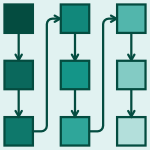 PLEASE-2015-ChitchyanNG #product line #re-engineering
PLEASE-2015-ChitchyanNG #product line #re-engineering- What Can Software Engineering Do for Sustainability: Case of Software Product Lines (RC, JN, IG), pp. 11–14.
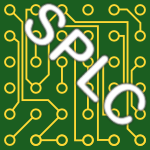 SPLC-2015-BergerLRGS0CC #industrial #product line
SPLC-2015-BergerLRGS0CC #industrial #product line- What is a feature?: a qualitative study of features in industrial software product lines (TB, DL, JR, PG, AS, MB, MC, KC), pp. 16–25.
 POPL-2015-VafeiadisBCMN #compilation #memory management #optimisation
POPL-2015-VafeiadisBCMN #compilation #memory management #optimisation- Common Compiler Optimisations are Invalid in the C11 Memory Model and what we can do about it (VV, TB, SC, RM, FZN), pp. 209–220.
 ASE-2015-GuK #question
ASE-2015-GuK #question- What Parts of Your Apps are Loved by Users? (XG, SK), pp. 760–770.
 ESEC-FSE-2015-GuJSZL #concurrent #thread
ESEC-FSE-2015-GuJSZL #concurrent #thread- What change history tells us about thread synchronization (RG, GJ, LS, LZ, SL), pp. 426–438.
 ICSE-v1-2015-GaoLCMW #interactive #question #testing
ICSE-v1-2015-GaoLCMW #interactive #question #testing- Making System User Interactive Tests Repeatable: When and What Should We Control? (ZG, YL, MBC, AMM, ZW), pp. 55–65.
 ICSE-v1-2015-LiKZ #question
ICSE-v1-2015-LiKZ #question- What Makes a Great Software Engineer? (PLL, AJK, JZ), pp. 700–710.
 ICSE-v2-2015-PetersM #re-engineering
ICSE-v2-2015-PetersM #re-engineering- Educating Software Engineering Managers — Revisited What Software Project Managers Need to Know Today (LP, AMM), pp. 353–359.
 DAC-2015-WolfF #architecture #continuation #question
DAC-2015-WolfF #architecture #continuation #question- What don’t we know about CPS architectures? (MW, EF), p. 4.
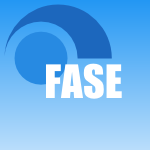 FASE-2015-CzechJW #exclamation #verification
FASE-2015-CzechJW #exclamation #verification- Just Test What You Cannot Verify! (MC, MCJ, HW), pp. 100–114.
 CSL-2015-Klein0 #game studies #lookahead
CSL-2015-Klein0 #game studies #lookahead- What are Strategies in Delay Games? Borel Determinacy for Games with Lookahead (FK, MZ), pp. 519–533.
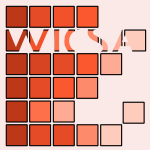 WICSA-2014-CostaPDM #architecture #question #rest
WICSA-2014-CostaPDM #architecture #question #rest- Evaluating a Representational State Transfer (REST) Architecture: What is the Impact of REST in My Architecture? (BC, PFP, FCD, PM), pp. 105–114.
 DocEng-2014-FranzeMW
DocEng-2014-FranzeMW - What academics want when reading digitally (JF, KM, MW), pp. 199–202.
 DocEng-2014-HailpernVD #how #named
DocEng-2014-HailpernVD #how #named- Pagination: it’s what you say, not how long it takes to say it (JMH, NDV, MD), pp. 147–156.
 JCDL-2014-ChoiLD #automation #classification #using
JCDL-2014-ChoiLD #automation #classification #using- What is this song about anyway?: Automatic classification of subject using user interpretations and lyrics (KC, JHL, JSD), pp. 453–454.
 JCDL-2014-KanhabuaNN #analysis #memory management #scalability #wiki
JCDL-2014-KanhabuaNN #analysis #memory management #scalability #wiki- What triggers human remembering of events? A large-scale analysis of catalysts for collective memory in Wikipedia (NK, TNN, CN), pp. 341–350.
 JCDL-2014-KoopmanW #detection #similarity
JCDL-2014-KoopmanW #detection #similarity- Where should I publish? Detecting journal similarity based on what have been published there (RK, SW), pp. 483–484.
 PODS-2014-Libkin #how #semistructured data
PODS-2014-Libkin #how #semistructured data- Incomplete data: what went wrong, and how to fix it (LL), pp. 1–13.
 VLDB-2014-MottinLVP #query
VLDB-2014-MottinLVP #query- Exemplar Queries: Give me an Example of What You Need (DM, ML, YV, TP), pp. 365–376.
 EDM-2014-WenYR #analysis #question #sentiment
EDM-2014-WenYR #analysis #question #sentiment- Sentiment Analysis in MOOC Discussion Forums: What does it tell us? (MW, DY, CPR), pp. 130–137.
 ITiCSE-2014-EricssonW #mining
ITiCSE-2014-EricssonW #mining- Mining job ads to find what skills are sought after from an employers’ perspective on IT graduates (ME, AW), p. 354.
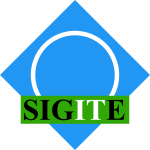 SIGITE-2014-Fulbright
SIGITE-2014-Fulbright - What is the next big thing?: fulbright’s half-life theory (RF), pp. 93–94.
 ICPC-2014-StefikHMAYS #design #empirical #programming language
ICPC-2014-StefikHMAYS #design #empirical #programming language- What is the Foundation of Evidence of Human Factors Decisions in Language Design? An Empirical Study on Programming Language Workshops (AS, SH, MM, AAA, SKY, SS), pp. 223–231.
 ICSME-2014-KononenkoZG #compilation #question
ICSME-2014-KononenkoZG #compilation #question- Compiling Clones: What Happens? (OK, CZ, MWG), pp. 481–485.
 CHI-PLAY-2014-CrenshawN #game studies #online #video
CHI-PLAY-2014-CrenshawN #game studies #online #video- What's in a name?: naming practices in online video games (NC, BAN), pp. 67–76.
 DiGRA-2014-Huh #case study #game studies
DiGRA-2014-Huh #case study #game studies- What makes young children active game players; ethnographic case study (YJH).
 DiGRA-2014-SchottMN #experience #game studies #using
DiGRA-2014-SchottMN #experience #game studies #using- Exploring the Cause of Game (Derived) Arousal: What biometric accounts of player experience revealed (GS, RM, LN).
 FDG-2014-Rusch #design #experience #game studies #health
FDG-2014-Rusch #design #experience #game studies #health- Games about mental health - Designing the experience of “What it's Like” (DCR).
 CHI-2014-AhmaniemiKH #gesture #question
CHI-2014-AhmaniemiKH #gesture #question- What is a device bend gesture really good for? (TTA, JK, MH), pp. 3503–3512.
 CHI-2014-BensonK #how #web #why
CHI-2014-BensonK #how #web #why- End-users publishing structured information on the web: an observational study of what, why, and how (EB, DRK), pp. 1265–1274.
 CHI-2014-BrumbyCCF #behaviour #how #question #visual notation
CHI-2014-BrumbyCCF #behaviour #how #question #visual notation- How does knowing what you are looking for change visual search behavior? (DPB, ALC, JC, BF), pp. 3895–3898.
 CHI-2014-Gilbert #performance #social
CHI-2014-Gilbert #performance #social- What if we ask a different question?: social inferences create product ratings faster (EG), pp. 2759–2762.
 CHI-2014-HsiehCMN #comprehension
CHI-2014-HsiehCMN #comprehension- You read what you value: understanding personal values and reading interests (GH, JC, JM, JN), pp. 983–986.
 CHI-2014-MasseyTTW #file system #question
CHI-2014-MasseyTTW #file system #question- PIM and personality: what do our personal file systems say about us? (CM, ST, CT, SW), pp. 3695–3704.
 CHI-2014-MatthewsCWPZBS #community #enterprise #online #question
CHI-2014-MatthewsCWPZBS #community #enterprise #online #question- Goals and perceived success of online enterprise communities: what is important to leaders & members? (TM, JC, SW, AP, HZ, HB, BAS), pp. 291–300.
 CHI-2014-NorvalAH #network #recommendation #social
CHI-2014-NorvalAH #network #recommendation #social- What’s on your mind?: investigating recommendations for inclusive social networking and older adults (CN, JLA, VLH), pp. 3923–3932.
 CHI-2014-TewariC #game studies
CHI-2014-TewariC #game studies- What did spot hide?: a question-answering game for preschool children (AT, JC), pp. 1807–1816.
 CSCW-2014-ForteDMA #network #online #social #student
CSCW-2014-ForteDMA #network #online #social #student- What do teens ask their online social networks?: social search practices among high school students (AF, MD, RMM, DEA), pp. 28–37.
 CSCW-2014-QuerciaOC #question
CSCW-2014-QuerciaOC #question- Aesthetic capital: what makes london look beautiful, quiet, and happy? (DQ, NKO, HC), pp. 945–955.
 DUXU-DI-2014-Hellweg #development #education #future of #game studies
DUXU-DI-2014-Hellweg #development #education #future of #game studies- Wanting the Unwanted — What Games Can Teach Us about the Future of Software Development (DH), pp. 711–719.
 DUXU-DI-2014-ShafiqICRAAR #analysis #case study #learning #smarttech #usability #user satisfaction
DUXU-DI-2014-ShafiqICRAAR #analysis #case study #learning #smarttech #usability #user satisfaction- To What Extent System Usability Effects User Satisfaction: A Case Study of Smart Phone Features Analysis for Learning of Novice (MS, MI, JGC, ZR, MA, WA, SR), pp. 346–357.
 DUXU-ELAS-2014-DysonJ #interface #question
DUXU-ELAS-2014-DysonJ #interface #question- Examining the Interfaces to E-journal Articles: What Do Users Expect? (MCD, EMJ), pp. 164–172.
 HCI-AIMT-2014-RouxelPAC #gesture
HCI-AIMT-2014-RouxelPAC #gesture- What You Draw Is What You Search: The Analog Gesture (BR, FP, JYA, GC), pp. 139–147.
 HCI-AS-2014-KimC
HCI-AS-2014-KimC - The Gap between What a Service Provider Shows Off and What Users Really Watch (DK, JC), pp. 710–720.
 HCI-TMT-2014-SiliMMGP #automation #generative #question #user interface
HCI-TMT-2014-SiliMMGP #automation #generative #question #user interface- A Practical Solution for the Automatic Generation of User Interfaces — What Are the Benefits of a Practical Solution for the Automatic Generation of User Interfaces? (MS, CCM, MM, MG, MP), pp. 445–456.
 LCT-TRE-2014-LoureiroSBR #collaboration #question
LCT-TRE-2014-LoureiroSBR #collaboration #question- Collaboration, Knowledge Sharing and Digital Environments: What about Argumentation and Questioning Skills? (MJ(L, FNdS, AB, AR), pp. 440–449.
 SCSM-2014-SobierajK #communication
SCSM-2014-SobierajK #communication- What Is Beautiful in Cyberspace? Communication with Attractive Avatars (SS, NCK), pp. 125–136.
 SCSM-2014-TurnerH #network #social
SCSM-2014-TurnerH #network #social- What Does Your Profile Picture Say About You? The Accuracy of Thin-Slice Personality Judgments from Social Networking Sites Made at Zero-Acquaintance (MT, NH), pp. 506–516.
 CAiSE-2014-EpureHDB #flexibility #mining #process
CAiSE-2014-EpureHDB #flexibility #mining #process- What Shall I Do Next? — Intention Mining for Flexible Process Enactment (EVE, CH, RD, SB), pp. 473–487.
 ICEIS-v1-2014-KahkonenMS #enterprise #integration #scalability
ICEIS-v1-2014-KahkonenMS #enterprise #integration #scalability- What Are the Factors Affecting ERP System Integration? — Observations from a Large Manufacturing Enterprise (TK, AM, KS), pp. 5–17.
 CIKM-2014-Deolalikar14b #clustering #documentation
CIKM-2014-Deolalikar14b #clustering #documentation- What is the Shape of a Cluster?: Structural Comparisons of Document Clusters (VD), pp. 1927–1930.
 CIKM-2014-LiWH #twitter
CIKM-2014-LiWH #twitter- What a Nasty Day: Exploring Mood-Weather Relationship from Twitter (JL, XW, EHH), pp. 1309–1318.
 CIKM-2014-QuattroneNKT
CIKM-2014-QuattroneNKT - Tell Me What You Want and I Will Tell Others Where You Have Been (AQ, EN, LK, ET), pp. 1783–1786.
 ICPR-2014-Al-HalahRS #learning #metric #semantics #similarity
ICPR-2014-Al-HalahRS #learning #metric #semantics #similarity- What to Transfer? High-Level Semantics in Transfer Metric Learning for Action Similarity (ZAH, LR, RS), pp. 2775–2780.
 KDD-2014-ZhaoGHJWL #microblog #recommendation
KDD-2014-ZhaoGHJWL #microblog #recommendation- We know what you want to buy: a demographic-based system for product recommendation on microblogs (WXZ, YG, YH, HJ, YW, XL), pp. 1935–1944.
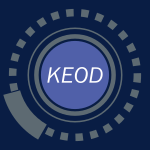 KEOD-2014-Aalst #mining #people #process
KEOD-2014-Aalst #mining #people #process- No Knowledge Without Processes — Process Mining as a Tool to Find Out What People and Organizations Really Do (WMPvdA), pp. 1–11.
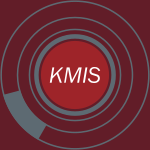 KMIS-2014-ToureMM14a #information management #modelling #towards
KMIS-2014-ToureMM14a #information management #modelling #towards- What If We Considered Awareness for Sustainable Knowledge Management? Towards a Model for Self Regulated Knowledge Management Systems Based on Acceptance Models of Technologies and Awareness (CET, CM, JCM), pp. 413–418.
 RecSys-2014-LiuWW
RecSys-2014-LiuWW - Tell me where to go and what to do next, but do not bother me (HL, GW, GW), pp. 375–376.
 SIGIR-2014-NiuLGCG #data analysis #learning #rank #robust
SIGIR-2014-NiuLGCG #data analysis #learning #rank #robust- What makes data robust: a data analysis in learning to rank (SN, YL, JG, XC, XG), pp. 1191–1194.
 MoDELS-2014-ReggioLR #overview #uml
MoDELS-2014-ReggioLR #overview #uml- Who Knows/Uses What of the UML: A Personal Opinion Survey (GR, ML, FR), pp. 149–165.
 SPLC-2014-Hubaux #product line #research
SPLC-2014-Hubaux #product line #research- What research in software product line engineering is not solving in configuration (AH), p. 19.
 PLDI-2014-Palem #question
PLDI-2014-Palem #question- What exactly is inexact computation good for? (KVP), p. 1.
 FSE-2014-Jorgensen #question #re-engineering
FSE-2014-Jorgensen #question #re-engineering- Ten years with evidence-based software engineering. What is it? Has it had any impact? What’s next? (MJ), p. 3.
 SAC-2014-VasconcelosAG #code review #predict
SAC-2014-VasconcelosAG #code review #predict- What makes your opinion popular?: predicting the popularity of micro-reviews in foursquare (MAV, JMA, MAG), pp. 598–603.
 PPoPP-2014-Rubin #compilation #question #research
PPoPP-2014-Rubin #compilation #question #research- Heterogeneous computing: what does it mean for compiler research? (NR), pp. 315–316.
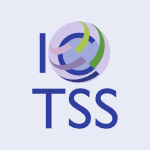 ICTSS-2014-Deak #overview #testing
ICTSS-2014-Deak #overview #testing- What Characterizes a Good Software Tester? — A Survey in Four Norwegian Companies (AD), pp. 161–172.
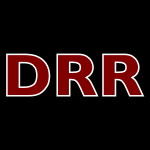 DRR-2013-Smith
DRR-2013-Smith - History of the Tesseract OCR engine: what worked and what didn’t (RWS).
 HT-2013-GuerreiroG #exclamation #quote
HT-2013-GuerreiroG #exclamation #quote- “Tell me what I want to know!”: the effect of relationship closeness on the relevance of profile attributes (JG, DG), pp. 230–235.
 ICDAR-2013-Newell #identification #question
ICDAR-2013-Newell #identification #question- What Should We Be Comparing for Writer Identification? (AJN), pp. 418–422.
 SIGMOD-2013-MullerKLM #named
SIGMOD-2013-MullerKLM #named- WOW: what the world of (data) warehousing can learn from the World of Warcraft (RM, TK, GML, JM), pp. 961–964.
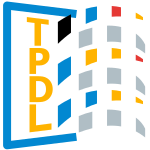 TPDL-2013-AlNoamanyAWN #internet
TPDL-2013-AlNoamanyAWN #internet- Who and What Links to the Internet Archive (YA, AA, MCW, MLN), pp. 346–357.
 TPDL-2013-GoedeWMR
TPDL-2013-GoedeWMR - PoliticalMashup Ngramviewer — Tracking Who Said What and When in Parliament (BdG, JvW, MM, RR), pp. 446–449.
 VLDB-2013-ChirkovaY #question
VLDB-2013-ChirkovaY #question- Big and Useful: What’s in the Data for Me? (RC, JY), pp. 1390–1391.
 CSEET-2013-ChimalakondaN #adaptation #education #learning #personalisation #re-engineering
CSEET-2013-ChimalakondaN #adaptation #education #learning #personalisation #re-engineering- What makes it hard to teach software engineering to end users? some directions from adaptive and personalized learning (SC, KVN), pp. 324–328.
 CSEET-2013-Vallino #question #re-engineering #student
CSEET-2013-Vallino #question #re-engineering #student- What should students learn in their first (and often only) software engineering course? (JV), pp. 335–337.
 CSMR-2013-AnicheOG #case study #industrial #open source #quality #testing
CSMR-2013-AnicheOG #case study #industrial #open source #quality #testing- What Do the Asserts in a Unit Test Tell Us about Code Quality? A Study on Open Source and Industrial Projects (MFA, GAO, MAG), pp. 111–120.
 MSR-2013-AllamanisS #stack overflow #topic #why
MSR-2013-AllamanisS #stack overflow #topic #why- Why, when, and what: analyzing stack overflow questions by topic, type, and code (MA, CAS), pp. 53–56.
 MSR-2013-HamasakiKYCFI #code review #dataset #overview #repository
MSR-2013-HamasakiKYCFI #code review #dataset #overview #repository- Who does what during a code review? datasets of OSS peer review repositories (KH, RGK, NY, AECC, KF, HI), pp. 49–52.
 MSR-2013-Murphy #development #question
MSR-2013-Murphy #development #question- What is software development productivity, anyway? (GCM), p. 1.
 MSR-2013-NadiDTHL #how #linux #question #variability
MSR-2013-NadiDTHL #how #linux #question #variability- Linux variability anomalies: what causes them and how do they get fixed? (SN, CD, RT, RCH, DL), pp. 111–120.
 WCRE-2013-LiXPZ #developer #how #question
WCRE-2013-LiXPZ #developer #how #question- What help do developers seek, when and how? (HL, ZX, XP, WZ), pp. 142–151.
 Haskell-2013-WortmannD #haskell #question
Haskell-2013-WortmannD #haskell #question- Causality of optimized Haskell: what is burning our cycles? (PMW, DJD), pp. 141–152.
 DiGRA-2013-Marquez
DiGRA-2013-Marquez - What Happens when a Cyberworld Ends? The case of There.com (IVM).
 CHI-2013-BardzellB #design #question
CHI-2013-BardzellB #design #question- What is “critical” about critical design? (JB, SB), pp. 3297–3306.
 CHI-2013-GrahamSPBD #architecture #distributed #game studies
CHI-2013-GrahamSPBD #architecture #distributed #game studies- Villains, architects and micro-managers: what tabula rasa teaches us about game orchestration (TCNG, IS, MP, QB, RD), pp. 705–714.
 CHI-2013-JacobsBSGPG
CHI-2013-JacobsBSGPG - A conversation between trees: what data feels like in the forest (RJ, SB, MS, MG, DP, GG), pp. 129–138.
 CHI-2013-KhovanskayaBCVG #approach #design #quote
CHI-2013-KhovanskayaBCVG #approach #design #quote- “Everybody knows what you’re doing”: a critical design approach to personal informatics (VDK, EPSB, DC, SV, GG), pp. 3403–3412.
 CHI-2013-KukkaOKGO #interactive #visual notation
CHI-2013-KukkaOKGO #interactive #visual notation- What makes you click: exploring visual signals to entice interaction on public displays (HK, HO, VK, JG, TO), pp. 1699–1708.
 CHI-2013-PaneelsOBC #exclamation #usability
CHI-2013-PaneelsOBC #exclamation #usability- Listen to it yourself!: evaluating usability of what’s around me? for the blind (SAP, AO, JRB, JRC), pp. 2107–2116.
 CHI-2013-ParkerMGACJM #health #online
CHI-2013-ParkerMGACJM #health #online- I am what i eat: identity & critical thinking in an online health forum for kids (AGP, IM, CG, VA, WC, VJ, EDM), pp. 2437–2446.
 CSCW-2013-HarperLTBGSOW #question
CSCW-2013-HarperLTBGSOW #question- What is a file? (RHRH, SEL, ET, RB, PG, GS, WO, EW), pp. 1125–1136.
 CSCW-2013-HemphillOS #question #twitter
CSCW-2013-HemphillOS #question #twitter- What’s congress doing on twitter? (LH, JO, MS), pp. 877–886.
 CSCW-2013-PageKK #social #social media #web
CSCW-2013-PageKK #social #social media #web- What a tangled web we weave: lying backfires in location-sharing social media (XP, BPK, AK), pp. 273–284.
 CSCW-2013-PanLCL #process #social
CSCW-2013-PanLCL #process #social- To answer or not: what non-qa social activities can tell (YP, LL, CYC, QL), pp. 1253–1263.
 DHM-SET-2013-SaparovaBLKMY #health #how #information management #problem #question #usability
DHM-SET-2013-SaparovaBLKMY #health #how #information management #problem #question #usability- Usability Problems in Patient- and Clinician-Oriented Health Information Systems: What Are They and How Do They Differ? (DS, JB, YL, FK, YM, BY), pp. 276–285.
 DUXU-PMT-2013-Matthiessen #design #education #experience #industrial #interactive
DUXU-PMT-2013-Matthiessen #design #education #experience #industrial #interactive- Interactive Design and the Human Experience: What Can Industrial Design Teach Us (NM), pp. 100–106.
 HIMI-HSM-2013-CastronovoMM #interface
HIMI-HSM-2013-CastronovoMM #interface- What, Where, and When? Intelligent Presentation Management for Automotive Human Machine Interfaces and Its Application (SC, AM, CAM), pp. 460–469.
 HIMI-HSM-2013-MoodyW #mobile #security
HIMI-HSM-2013-MoodyW #mobile #security- Security, But at What Cost? — An Examination of Security Notifications within a Mobile Application (GM, DW), pp. 391–399.
 OCSC-2013-SaY #motivation #people #social
OCSC-2013-SaY #motivation #people #social- What Motivates People Use Social Tagging (NS, XY), pp. 86–93.
 ICEIS-J-2013-KahkonenMS #enterprise #integration #question
ICEIS-J-2013-KahkonenMS #enterprise #integration #question- What Do We Know About ERP Integration? (TK, AM, KS), pp. 51–67.
 ICEIS-v3-2013-BuchdidB #human-computer #word
ICEIS-v3-2013-BuchdidB #human-computer #word- HCI in Context — What the Words Reveal about It (SBB, MCCB), pp. 134–142.
 CIKM-2013-KamathC #learning #predict
CIKM-2013-KamathC #learning #predict- Spatio-temporal meme prediction: learning what hashtags will be popular where (KYK, JC), pp. 1341–1350.
 CIKM-2013-MoffatTS #effectiveness #metric #modelling
CIKM-2013-MoffatTS #effectiveness #metric #modelling- Users versus models: what observation tells us about effectiveness metrics (AM, PT, FS), pp. 659–668.
 KDD-2013-YuanCMSM #topic #twitter
KDD-2013-YuanCMSM #topic #twitter- Who, where, when and what: discover spatio-temporal topics for twitter users (QY, GC, ZM, AS, NMT), pp. 605–613.
 KDIR-KMIS-2013-GirdauskieneS
KDIR-KMIS-2013-GirdauskieneS - Assessing Environmental Dimensions for Creativity and Knowledge Creation — What Features of Task, Group and Time do make an Impact on Creativity and Knowledge Creation in a Creative Organization (LG, AS), pp. 532–538.
 RecSys-2013-BabasCT #personalisation #recommendation
RecSys-2013-BabasCT #personalisation #recommendation- You are what you consume: a bayesian method for personalized recommendations (KB, GC, ET), pp. 221–228.
 RecSys-2013-PeraN #personalisation #recommendation
RecSys-2013-PeraN #personalisation #recommendation- What to read next?: making personalized book recommendations for K-12 users (MSP, YKN), pp. 113–120.
 SEKE-2013-BurnayJF #matter #problem #requirements #why
SEKE-2013-BurnayJF #matter #problem #requirements #why- Context Factors: What they are and why they matter for Requirements Problems (CB, IJ, SF), pp. 30–35.
 SIGIR-2013-McCreadieMO
SIGIR-2013-McCreadieMO - News vertical search: when and what to display to users (RM, CM, IO), pp. 253–262.
 SIGIR-2013-Rodriguez-VaamondeTF #documentation #image #using #web
SIGIR-2013-Rodriguez-VaamondeTF #documentation #image #using #web- What can pictures tell us about web pages?: improving document search using images (SRV, LT, AWF), pp. 849–852.
 PLEASE-2013-ChimalakondaN #education #product line #question
PLEASE-2013-ChimalakondaN #education #product line #question- What makes it hard to apply software product lines to educational technologies? (SC, KVN), pp. 17–20.
 ECOOP-2013-TemperoYN #inheritance #java
ECOOP-2013-TemperoYN #inheritance #java- What Programmers Do with Inheritance in Java (EDT, HYY, JN), pp. 577–601.
 Onward-2013-RossoJ #analysis #concept #design #git
Onward-2013-RossoJ #analysis #concept #design #git- What’s wrong with git?: a conceptual design analysis (SPDR, DJ), pp. 37–52.
 ER-BR-2013-Finkelstein #re-engineering
ER-BR-2013-Finkelstein #re-engineering- The Next 10 Years: the shape of software to come and what if means for software engineering (AF).
 REFSQ-2013-DanevaBH #architecture #case study #experience #quality #question #requirements
REFSQ-2013-DanevaBH #architecture #case study #experience #quality #question #requirements- Software Architects’ Experiences of Quality Requirements: What We Know and What We Do Not Know? (MD, LB, AH), pp. 1–17.
 ICSE-2013-PolikarpovaF0WM #question #specification
ICSE-2013-PolikarpovaF0WM #question #specification- What good are strong specifications? (NP, CAF, YP, YW, BM), pp. 262–271.
 DATE-2013-Vigouroux #design #question
DATE-2013-Vigouroux #design #question- What designs for coming supercomputers? (XV), p. 469.
 SOSP-2013-ElphinstoneH #kernel #question
SOSP-2013-ElphinstoneH #kernel #question- From L3 to seL4 what have we learnt in 20 years of L4 microkernels? (KE, GH), pp. 133–150.
 CSL-2013-ChatterjeeCT #decidability #markov #process
CSL-2013-ChatterjeeCT #decidability #markov #process- What is Decidable about Partially Observable Markov Decision Processes with ω-Regular Objectives (KC, MC, MT), pp. 165–180.
 PODS-2012-Chaudhuri #big data #data transformation #research
PODS-2012-Chaudhuri #big data #data transformation #research- What next?: a half-dozen data management research goals for big data and the cloud (SC), pp. 1–4.
 TPDL-2012-KhooH #library #modelling
TPDL-2012-KhooH #library #modelling- What Would “Google” Do? Users’ Mental Models of a Digital Library Search Engine (MK, CH), pp. 1–12.
 VLDB-2012-DasTADY #analysis #framework
VLDB-2012-DasTADY #analysis #framework- Who Tags What? An Analysis Framework (MD, ST, SAY, GD, CY), pp. 1567–1578.
 ITiCSE-2012-FidotenS #overview
ITiCSE-2012-FidotenS #overview- What do computer scientists do?: a survey of CS and non-CS liberal arts faculty (HF, JS), pp. 279–284.
 ITiCSE-2012-SharonK #student
ITiCSE-2012-SharonK #student- Grade inflation, what students value, and the necessity of suffering (TS, PK), pp. 116–121.
 SIGITE-2012-Saulsberry #question #student
SIGITE-2012-Saulsberry #question #student- Dwindling number of female students: what are we missing? (DS), pp. 221–226.
 ICSM-2012-NasehiSMB #case study #programming #stack overflow
ICSM-2012-NasehiSMB #case study #programming #stack overflow- What makes a good code example?: A study of programming Q&A in StackOverflow (SMN, JS, FM, CB), pp. 25–34.
 ICSM-2012-ZhangPXZ #developer #why
ICSM-2012-ZhangPXZ #developer #why- Cloning practices: Why developers clone and what can be changed (GZ, XP, ZX, WZ), pp. 285–294.
 ICSM-2012-ZouG #algorithm #automation #case study #detection #industrial #why
ICSM-2012-ZouG #algorithm #automation #case study #detection #industrial #why- An industrial case study of Coman’s automated task detection algorithm: What Worked, What Didn’t, and Why (LZ, MWG), pp. 6–14.
 MSR-2012-BirdN #development #distributed #open source #scalability
MSR-2012-BirdN #development #distributed #open source #scalability- Who? Where? What? Examining distributed development in two large open source projects (CB, NN), pp. 237–246.
 MSR-2012-TianALLL #community #microblog #question #re-engineering
MSR-2012-TianALLL #community #microblog #question #re-engineering- What does software engineering community microblog about? (YT, PA, INL, DL, EPL), pp. 247–250.
 SCAM-2012-VinjuG #complexity #control flow #metric
SCAM-2012-VinjuG #complexity #control flow #metric- What Does Control Flow Really Look Like? Eyeballing the Cyclomatic Complexity Metric (JJV, MWG), pp. 154–163.
 WCRE-2012-CleveH #question
WCRE-2012-CleveH #question- What Do Foreign Keys Actually Mean? (AC, JLH), pp. 299–307.
 FM-2012-Wassyng #question
FM-2012-Wassyng #question- Who Are We, and What Are We Doing Here? (AW), pp. 7–9.
 FDG-2012-BergstromJC #difference
FDG-2012-BergstromJC #difference- What's 'choice' got to do with it?: avatar selection differences between novice and expert players of World of Warcraft and Rift (KB, JJ, SdC), pp. 97–104.
 CHI-2012-FitchettC #named #predict
CHI-2012-FitchettC #named #predict- AccessRank: predicting what users will do next (SF, AC), pp. 2239–2242.
 CHI-2012-Gaver #design #question #research
CHI-2012-Gaver #design #question #research- What should we expect from research through design? (WWG), pp. 937–946.
 CHI-2012-KripleanTMBK #web
CHI-2012-KripleanTMBK #web- Is this what you meant?: promoting listening on the web with reflect (TK, MT, JTM, AB, AK), pp. 1559–1568.
 CHI-2012-PetrieP #comparison #interactive #problem #usability
CHI-2012-PetrieP #comparison #interactive #problem #usability- What do users really care about?: a comparison of usability problems found by users and experts on highly interactive websites (HP, CP), pp. 2107–2116.
 CSCW-2012-Baba #question
CSCW-2012-Baba #question- Science, technology and society revisited: what is happening to anthropology and ethnography? (MLB), pp. 5–6.
 CSCW-2012-FugelstadDMKMTS #community #online #predict
CSCW-2012-FugelstadDMKMTS #community #online #predict- What makes users rate (share, tag, edit...)?: predicting patterns of participation in online communities (PF, PD, JFM, JK, CAM, LGT, MS), pp. 969–978.
 CSCW-2012-Nagar #community #online #process
CSCW-2012-Nagar #community #online #process- What do you think?: the structuring of an online community as a collective-sensemaking process (YN), pp. 393–402.
 CSCW-2012-XuB #case study #community #interactive #online #scalability
CSCW-2012-XuB #case study #community #interactive #online #scalability- What do you think?: a case study of benefit, expectation, and interaction in a large online critique community (AX, BPB), pp. 295–304.
 CIKM-2012-BiyaniCSM #exclamation #online #thread
CIKM-2012-BiyaniCSM #exclamation #online #thread- I want what i need!: analyzing subjectivity of online forum threads (PB, CC, AS, PM), pp. 2495–2498.
 CIKM-2012-Diaz-AvilesDGSN #online #recommendation #topic #twitter
CIKM-2012-Diaz-AvilesDGSN #online #recommendation #topic #twitter- What is happening right now ... that interests me?: online topic discovery and recommendation in twitter (EDA, LD, ZG, LST, WN), pp. 1592–1596.
 CIKM-2012-MeccaPRS #data transformation #question
CIKM-2012-MeccaPRS #data transformation #question- What is the IQ of your data transformation system? (GM, PP, SR, DS), pp. 872–881.
 ICPR-2012-Gao
ICPR-2012-Gao - What entropy tells about man-made structures (JG), pp. 250–253.
 RecSys-2012-Lamere #question
RecSys-2012-Lamere #question- I’ve got 10 million songs in my pocket: now what? (PL), pp. 207–208.
 SIGIR-2012-HongLYZZ #automation #novel
SIGIR-2012-HongLYZZ #automation #novel- What reviews are satisfactory: novel features for automatic helpfulness voting (YH, JL, JMY, QZ, GZ), pp. 495–504.
 SIGIR-2012-Sakai #evaluation #information retrieval #mobile #towards
SIGIR-2012-Sakai #evaluation #information retrieval #mobile #towards- Towards zero-click mobile IR evaluation: knowing what and knowing when (TS), pp. 1157–1158.
 MoDELS-2012-ArandaDB #modelling #question
MoDELS-2012-ArandaDB #modelling #question- Transition to Model-Driven Engineering — What Is Revolutionary, What Remains the Same? (JA, DD, AB), pp. 692–708.
 RE-2012-GrossD #exclamation #requirements #specification
RE-2012-GrossD #exclamation #requirements #specification- What you need is what you get!: The vision of view-based requirements specifications (AG, JD), pp. 171–180.
 RE-2012-MaglyasNS #question
RE-2012-MaglyasNS #question- What do practitioners mean when they talk about product management? (AM, UN, KS), pp. 261–266.
 ASE-2012-ThungLLJRD #debugging #detection #empirical #fault #tool support
ASE-2012-ThungLLJRD #debugging #detection #empirical #fault #tool support- To what extent could we detect field defects? an empirical study of false negatives in static bug finding tools (FT, L, DL, LJ, FR, PTD), pp. 50–59.
 ICSE-2012-Braithwaite #how #programming
ICSE-2012-Braithwaite #how #programming- Software as an engineering material: How the affordances of programming have changed and what to do about it (KB), p. 998.
 ICSE-2012-BudgenDBH #education #question
ICSE-2012-BudgenDBH #education #question- What scope is there for adopting evidence-informed teaching in SE? (DB, SD, PB, NH), pp. 1205–1214.
 ICSE-2012-Wolff #architecture #industrial #question
ICSE-2012-Wolff #architecture #industrial #question- Software architecture — What does it mean in industry? (EW), p. 999.
 ICSE-2012-ZhouM #community
ICSE-2012-ZhouM #community- What make long term contributors: Willingness and opportunity in OSS community (MZ, AM), pp. 518–528.
 SAC-2012-Zaytsev #bnf
SAC-2012-Zaytsev #bnf- BNF was here: what have we done about the unnecessary diversity of notation for syntactic definitions (VZ), pp. 1910–1915.
 CASE-2012-HoNNH #question
CASE-2012-HoNNH #question- What can be inferred from a tactile arrayed sensor in autonomous in-hand manipulation? (VAH, TN, AN, SH), pp. 461–468.
 DAC-2012-PalemA #exclamation
DAC-2012-PalemA #exclamation- What to do about the end of Moore’s law, probably! (KVP, LA), pp. 924–929.
 ESOP-2012-AtigBBM #decidability #memory management #modelling #question
ESOP-2012-AtigBBM #decidability #memory management #modelling #question- What’s Decidable about Weak Memory Models? (MFA, AB, SB, MM), pp. 26–46.
 ICST-2012-ChenLYS #question #testing #user interface
ICST-2012-ChenLYS #question #testing #user interface- When a GUI Regression Test Failed, What Should be Blamed? (JC, ML, KY, BS), pp. 467–470.
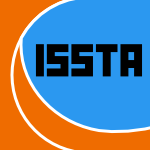 ISSTA-2012-CoughlinCDS #source code
ISSTA-2012-CoughlinCDS #source code- Measuring enforcement windows with symbolic trace interpretation: what well-behaved programs say (DC, BYEC, AD, JGS), pp. 276–286.
 LICS-2012-Levin #internet
LICS-2012-Levin #internet- Turing’s Password: What Internet Cannot Leak (LAL), p. 11.
 JCDL-2011-HallZ #comparison
JCDL-2011-HallZ #comparison- What do you call it?: a comparison of library-created and user-created tags (CH, MAZ), pp. 53–56.
 VLDB-2011-IdreosMKG #adaptation #in memory
VLDB-2011-IdreosMKG #adaptation #in memory- Merging What’s Cracked, Cracking What’s Merged: Adaptive Indexing in Main-Memory Column-Stores (SI, SM, HAK, GG), pp. 585–597.
 ITiCSE-2011-AmbrosioM #education #matter
ITiCSE-2011-AmbrosioM #education #matter- What matters most when teaching CS1 (APA, SWM), p. 385.
 ITiCSE-2011-Hu
ITiCSE-2011-Hu - Computational thinking: what it might mean and what we might do about it (CH), pp. 223–227.
 SIGITE-2011-GuthrieYS #how #question #women
SIGITE-2011-GuthrieYS #how #question #women- How did mathemathematics and accounting get so many women majors?: what can IT disciplines learn? (RAG, EKY, LLS), pp. 15–20.
 ICSM-2011-Kemmerer #how
ICSM-2011-Kemmerer #how- How to steal a botnet and what can happen when you do (RAK), p. 1.
 MSR-2011-BernardiSZDP #question #topic
MSR-2011-BernardiSZDP #question #topic- What topics do Firefox and Chrome contributors discuss? (MLB, CS, QZ, DD, MDP), pp. 234–237.
 MSR-2011-Whitehead #data mining #game studies #mining
MSR-2011-Whitehead #data mining #game studies #mining- Fantasy, farms, and freemium: what game data mining teaches us about retention, conversion, and virality (JW), p. 1.
 SCAM-2011-SfayhiS #analysis #interactive #visualisation
SCAM-2011-SfayhiS #analysis #interactive #visualisation- What You See is What You Asked for: An Effort-Based Transformation of Code Analysis Tasks into Interactive Visualization Scenarios (AS, HAS), pp. 195–203.
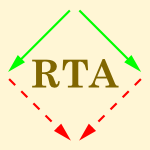 RTA-2011-Tison #automaton #constraints #question #similarity #term rewriting
RTA-2011-Tison #automaton #constraints #question #similarity #term rewriting- Tree Automata, (Dis-)Equality Constraints and Term Rewriting: What’s New? (ST), pp. 1–2.
 TLCA-2011-Tison #automaton #constraints #question #similarity #term rewriting
TLCA-2011-Tison #automaton #constraints #question #similarity #term rewriting- Tree Automata, (Dis-)Equality Constraints and Term Rewriting — What’s New? (ST), pp. 3–5.
 DiGRA-2011-VermeulenLGC #design #game studies #gender #interactive
DiGRA-2011-VermeulenLGC #design #game studies #gender #interactive- You Are What You Play? A Quantitative Study into Game Design Preferences across Gender and Their Interaction with Gaming Habits (LV, JVL, FDG, CC).
 DiGRA-2011-Zabban #design #game studies #how #online
DiGRA-2011-Zabban #design #game studies #how #online- What Keeps Designers and Players Apart? Thinking How an Online Game World is Shared (VZ).
 CHI-2011-JunuzovicIHZTB #multimodal #overview #using
CHI-2011-JunuzovicIHZTB #multimodal #overview #using- What did i miss?: in-meeting review using multimodal accelerated instant replay (air) conferencing (SJ, KI, RH, ZZ, JCT, CB), pp. 513–522.
 CHI-2011-MaratheS #question
CHI-2011-MaratheS #question- What drives customization?: control or identity? (SM, SSS), pp. 781–790.
 CHI-2011-ZadehBKC #challenge #design
CHI-2011-ZadehBKC #challenge #design- What’s in a move?: normal disruption and a design challenge (RZ, ADB, SBK, JNC), pp. 2897–2906.
 CSCW-2011-BalakrishnanKCZ #integration #matter #research #why
CSCW-2011-BalakrishnanKCZ #integration #matter #research #why- Research team integration: what it is and why it matters (ADB, SBK, JNC, RZ), pp. 523–532.
 CSCW-2011-GergleC #collaboration #eye tracking #mobile #using
CSCW-2011-GergleC #collaboration #eye tracking #mobile #using- See what I’m saying?: using Dyadic Mobile Eye tracking to study collaborative reference (DG, ATC), pp. 435–444.
 CSCW-2011-MinamikawaY #estimation
CSCW-2011-MinamikawaY #estimation- Blog tells what kind of personality you have: egogram estimation from Japanese weblog (AM, HY), pp. 217–220.
 DHM-2011-WelkePRJ #analysis #how #modelling #validation
DHM-2011-WelkePRJ #analysis #how #modelling #validation- What Is Human? How the Analysis of Brain Dynamics Can Help to Improve and Validate Driver Models (SW, JP, MR, TJ), pp. 513–522.
 DUXU-v1-2011-BedekarK #research
DUXU-v1-2011-BedekarK #research- What Sustainability Brings to the Research Table (NB, SLK), pp. 363–367.
 DUXU-v1-2011-PrabhalaLG #people #question #word
DUXU-v1-2011-PrabhalaLG #people #question #word- Ethnography, Ethnography or Ethnography? What Happens When the Same Word Means Different Things to Different People? (SP, DL, SG), pp. 102–110.
 DUXU-v2-2011-Zeller #design
DUXU-v2-2011-Zeller #design- What You See Is What You Don’t Get: Addressing Implications of Information Technology through Design Fiction (LZ), pp. 329–336.
 HCI-ITE-2011-UllahLORM #case study #collaboration #distributed #interactive
HCI-ITE-2011-UllahLORM #case study #collaboration #distributed #interactive- What You Feel Is What I Do: A Study of Dynamic Haptic Interaction in Distributed Collaborative Virtual Environment (SU, XL, SO, PR, MM), pp. 140–147.
 HCI-MIIE-2011-WangZYZSP
HCI-MIIE-2011-WangZYZSP - Believe What You Hear, Not What You See — Vision Interferes with Auditory Route Guidance in Complex Environment (YW, HZ, LY, KZ, XS, TP), pp. 346–354.
 HCI-UA-2011-EverardJM #learning #question #student
HCI-UA-2011-EverardJM #learning #question #student- Are MIS Students Learning What They Need to Land a Job? (AE, BMJ, SM), pp. 235–236.
 HCI-UA-2011-FangZ #game studies #question
HCI-UA-2011-FangZ #game studies #question- Extraversion and Computer Game Play: Who Plays What Games? (XF, MZ), pp. 659–667.
 HCI-UA-2011-Furukawa #design #injection #question
HCI-UA-2011-Furukawa #design #injection #question- What Label Design of Ampule for Injection, Do You Want? (HF), pp. 159–166.
 HIMI-v2-2011-ChellaliB #locality #question
HIMI-v2-2011-ChellaliB #locality #question- What Maps and What Displays for Remote Situation Awareness and ROV Localization? (RC, KB), pp. 364–372.
 HIMI-v2-2011-TakadamaOSMOIHS #order #question
HIMI-v2-2011-TakadamaOSMOIHS #order #question- What Kinds of Human Negotiation Skill Can Be Acquired by Changing Negotiation Order of Bargaining Agents? (KT, AO, KS, HM, MO, YI, KH, HS), pp. 335–344.
 OCSC-2011-AhmadL11a #question
OCSC-2011-AhmadL11a #question- Interpreting User-Generated Content: What Makes a Blog Believeable? (RA, WGL), pp. 81–89.
 CAiSE-2011-MohanA #comprehension
CAiSE-2011-MohanA #comprehension- What Methodology Attributes Are Critical for Potential Users? Understanding the Effect of Human Needs (KM, FA), pp. 314–328.
 CIKM-2011-AgrawalBA #information management #network #social
CIKM-2011-AgrawalBA #information management #network #social- Information diffusion in social networks: observing and affecting what society cares about (DA, CB, AEA), pp. 2609–2610.
 CIKM-2011-PandeyABHCRZ #behaviour #learning
CIKM-2011-PandeyABHCRZ #behaviour #learning- Learning to target: what works for behavioral targeting (SP, MA, AB, AOH, PC, AR, MZ), pp. 1805–1814.
 CIKM-2011-Pasca #query #using #web
CIKM-2011-Pasca #query #using #web- Asking what no one has asked before: using phrase similarities to generate synthetic web search queries (MP), pp. 1347–1352.
 CIKM-2011-TorresW #how #web
CIKM-2011-TorresW #how #web- What and how children search on the web (SDT, IW), pp. 393–402.
 ECIR-2011-ElsweilerBR #case study #email
ECIR-2011-ElsweilerBR #case study #email- What Makes Re-finding Information Difficult? A Study of Email Re-finding (DE, MB, IR), pp. 568–579.
 KDD-2011-MampaeyTV
KDD-2011-MampaeyTV - Tell me what i need to know: succinctly summarizing data with itemsets (MM, NT, JV), pp. 573–581.
 KDIR-2011-NissanH #generative #information retrieval
KDIR-2011-NissanH #generative #information retrieval- Information Retrieval in the Service of Generating Narrative Explanation — What we Want from Gallura (EN, YHK), pp. 487–492.
 KMIS-2011-VirtaW #information management
KMIS-2011-VirtaW #information management- Sharing What You Know, Building Expertise — Information Sharing between Generations in a Business Organization (MV, GW), pp. 129–135.
 SIGIR-2011-CuiWLOYS #predict #ranking #social
SIGIR-2011-CuiWLOYS #predict #ranking #social- Who should share what?: item-level social influence prediction for users and posts ranking (PC, FW, SL, MO, SY, LS), pp. 185–194.
 SIGIR-2011-GossenLN #difference #web
SIGIR-2011-GossenLN #difference #web- What are the real differences of children’s and adults’ web search (TG, TL, AN), pp. 1115–1116.
 SIGIR-2011-ThomasJH #quality
SIGIR-2011-ThomasJH #quality- What deliberately degrading search quality tells us about discount functions (PT, TJ, DH), pp. 1107–1108.
 Onward-2011-Derk #perspective #programming language
Onward-2011-Derk #perspective #programming language- What makes a programming language popular?: an essay from a historical perspective (MD), pp. 163–166.
 OOPSLA-2011-SonMS #named #security
OOPSLA-2011-SonMS #named #security- RoleCast: finding missing security checks when you do not know what checks are (SS, KSM, VS), pp. 1069–1084.
 RE-2011-Waldmann #agile #constraints #development #requirements
RE-2011-Waldmann #agile #constraints #development #requirements- There’s never enough time: Doing requirements under resource constraints, and what requirements engineering can learn from agile development (BW), pp. 301–305.
 RE-2011-WeverM #analysis #effectiveness #question
RE-2011-WeverM #analysis #effectiveness #question- What are the day-to-day factors that are preventing business analysts from effective business analysis? (AW, NAMM), pp. 293–298.
 REFSQ-2011-BakalovaDHW #agile #requirements
REFSQ-2011-BakalovaDHW #agile #requirements- Agile Requirements Prioritization: What Happens in Practice and What Is Described in Literature (ZB, MD, AH, RW), pp. 181–195.
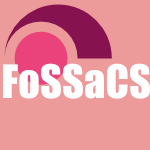 FoSSaCS-2011-AxelsenG #question #source code
FoSSaCS-2011-AxelsenG #question #source code- What Do Reversible Programs Compute? (HBA, RG), pp. 42–56.
 CADE-2011-Ranta #logic
CADE-2011-Ranta #logic- Translating between Language and Logic: What Is Easy and What Is Difficult (AR), pp. 5–25.
 LICS-2011-BresolinMSS #decidability #logic
LICS-2011-BresolinMSS #decidability #logic- What’s Decidable about Halpern and Shoham’s Interval Logic? The Maximal Fragment ABBL (DB, AM, PS, GS), pp. 387–396.
 JCDL-2010-AudenaertF #how
JCDL-2010-AudenaertF #how- What humanists want: how scholars use source materials (NA, RF), pp. 283–292.
 JCDL-2010-MakriBC #behaviour #why
JCDL-2010-MakriBC #behaviour #why- This is what I’m doing and why: reflections on a think-aloud study of dl users’ information behaviour (SM, AB, ALC), pp. 349–352.
 VLDB-2010-AbadiCCGPR #database #question
VLDB-2010-AbadiCCGPR #database #question- Cloud Databases: What’s New? (DA, MJC, SC, HGM, JMP, RR), p. 1657.
 ITiCSE-2010-GurselG #student
ITiCSE-2010-GurselG #student- What do promising high school students think about studying computing (DAG, BG), p. 325.
 ITiCSE-2010-MainFH #quantum #student
ITiCSE-2010-MainFH #quantum #student- What did qubits ever do for me: an answer for CS2 students (MM, RF, YH), pp. 209–213.
 MSR-2010-RahmanBD #named #question #smell
MSR-2010-RahmanBD #named #question #smell- Clones: What is that smell? (FR, CB, PTD), pp. 72–81.
 ICALP-v2-2010-HofmannKS #functional #question
ICALP-v2-2010-HofmannKS #functional #question- What Is a Pure Functional? (MH, AK, HS), pp. 199–210.
 FDG-2010-LewisWW #debugging #game studies #taxonomy #video
FDG-2010-LewisWW #debugging #game studies #taxonomy #video- What went wrong: a taxonomy of video game bugs (CL0, JW, NWF), pp. 108–115.
 FDG-2010-TaylorW #education #game studies #how
FDG-2010-TaylorW #education #game studies #how- This is how we play it: what a mega-LAN can teach us about games (TLT, EW), pp. 195–202.
 CHI-2010-BaileyH #case study #idea #pipes and filters #scalability
CHI-2010-BaileyH #case study #idea #pipes and filters #scalability- What’s your idea?: a case study of a grassroots innovation pipeline within a large software company (BPB, EH), pp. 2065–2074.
 CHI-2010-HartmannMBK #error message #fault
CHI-2010-HartmannMBK #error message #fault- What would other programmers do: suggesting solutions to error messages (BH, DM, JB, SRK), pp. 1019–1028.
 CHI-2010-LiNLDC #process #reuse #web
CHI-2010-LiNLDC #process #reuse #web- Here’s what i did: sharing and reusing web activity with ActionShot (IL, JN, TAL, CD, AC), pp. 723–732.
 CHI-2010-MorrisTP #behaviour #network #overview #people #social #why
CHI-2010-MorrisTP #behaviour #network #overview #people #social #why- What do people ask their social networks, and why?: a survey study of status message q&a behavior (MRM, JT, KP), pp. 1739–1748.
 CHI-2010-SauroL #question #testing #usability
CHI-2010-SauroL #question #testing #usability- Average task times in usability tests: what to report? (JS, JRL), pp. 2347–2350.
 CHI-2010-Thom-SantelliCG #collaboration
CHI-2010-Thom-SantelliCG #collaboration- What do you know?: experts, novices and territoriality in collaborative systems (JTS, DC, GG), pp. 1685–1694.
 CHI-2010-ViewegHSP #microblog #twitter
CHI-2010-ViewegHSP #microblog #twitter- Microblogging during two natural hazards events: what twitter may contribute to situational awareness (SV, ALH, KS, LP), pp. 1079–1088.
 CSCW-2010-SetlockF #cost analysis #tool support
CSCW-2010-SetlockF #cost analysis #tool support- What’s it worth to you?: the costs and affordances of CMC tools to asian and american users (LDS, SRF), pp. 341–350.
 CSCW-2010-StarbirdPHV #microblog #social
CSCW-2010-StarbirdPHV #microblog #social- Chatter on the red: what hazards threat reveals about the social life of microblogged information (KS, LP, ALH, SV), pp. 241–250.
 EDOC-2010-VoelzG #quality #question
EDOC-2010-VoelzG #quality #question- What is Different in Quality Management for SOA? (DV, AG), pp. 47–56.
 CIKM-2010-PiwowarskiFLR #information retrieval #quantum
CIKM-2010-PiwowarskiFLR #information retrieval #quantum- What can quantum theory bring to information retrieval (BP, IF, ML, KvR), pp. 59–68.
 RecSys-2010-ZhaoZYZZF #recommendation #social
RecSys-2010-ZhaoZYZZF #recommendation #social- Who is talking about what: social map-based recommendation for content-centric social websites (SZ, MXZ, QY, XZ, WZ, RF), pp. 143–150.
 OOPSLA-2010-ReichenbachISAG #garbage collection
OOPSLA-2010-ReichenbachISAG #garbage collection- What can the GC compute efficiently?: a language for heap assertions at GC time (CR, NI, YS, EA, SZG), pp. 256–269.
 AdaEurope-2010-Baker #manycore #question #realtime #reliability
AdaEurope-2010-Baker #manycore #question #realtime #reliability- What to Make of Multicore Processors for Reliable Real-Time Systems? (TPB), pp. 1–18.
 RE-2010-Beatty #question
RE-2010-Beatty #question- My Company Can’t Afford RE Training Right Now, What Do We Do? (JB), p. 387.
 ICSE-2010-MusilSWB #education #game studies #prototype
ICSE-2010-MusilSWB #education #game studies #prototype- Synthesized essence: what game jams teach about prototyping of new software products (JM, AS, DW, SB), pp. 183–186.
 DAC-2010-GajskiAS #question #synthesis
DAC-2010-GajskiAS #question #synthesis- What input-language is the best choice for high level synthesis (HLS)? (DG, TMA, SS), pp. 857–858.
 DAC-2010-HarmsCDHUWY #design #experience #question
DAC-2010-HarmsCDHUWY #design #experience #question- What will make your next design experience a much better one? (TH, JAC, RD, RAH, DU, GW, JY), p. 730.
 DAC-2010-Hiskens #grid #question #smarttech
DAC-2010-Hiskens #grid #question #smarttech- What’s smart about the smart grid? (IAH), pp. 937–939.
 DAC-2010-NsBNPSGB #design #future of #power management #question
DAC-2010-NsBNPSGB #design #future of #power management #question- What’s cool for the future of ultra low power designs? (NN, JB, KN, VP, TS, AG, SB), pp. 523–524.
 DATE-2010-Cota #embedded #problem #question #testing
DATE-2010-Cota #embedded #problem #question #testing- Embedded software testing: What kind of problem is this? (ÉFC), p. 1486.
 ICST-2010-WeyukerBO #debugging #question
ICST-2010-WeyukerBO #debugging #question- We’re Finding Most of the Bugs, but What are We Missing? (EJW, RMB, TJO), pp. 313–322.
 HT-2009-MeissDGRM #behaviour #web
HT-2009-MeissDGRM #behaviour #web- What’s in a session: tracking individual behavior on the web (MM, JD, BG, JJR, FM), pp. 173–182.
 JCDL-2009-KulesCBS #interface #question
JCDL-2009-KulesCBS #interface #question- What do exploratory searchers look at in a faceted search interface? (BK, RC, MB, TS), pp. 313–322.
 JCDL-2009-McCownN #facebook #question
JCDL-2009-McCownN #facebook #question- What happens when facebook is gone? (FM, MLN), pp. 251–254.
 SIGMOD-2009-AngelKSS #question
SIGMOD-2009-AngelKSS #question- What’s on the grapevine? (AA, NK, NS, DS), pp. 1047–1050.
 SIGMOD-2009-MuellerT #database #named #question
SIGMOD-2009-MuellerT #database #named #question- FPGA: what’s in it for a database? (RM, JT), pp. 999–1004.
 EDM-2009-MostowB #how #lessons learnt #why
EDM-2009-MostowB #how #lessons learnt #why- Why, What, and How to Log? Lessons from LISTEN (JM, JB), pp. 269–278.
 ITiCSE-2009-MitchellPH #question
ITiCSE-2009-MitchellPH #question- Computing science: what do pupils think? (AM, HCP, JH), p. 353.
 ITiCSE-2009-PargasB #question
ITiCSE-2009-PargasB #question- What were they thinking? (RPP, SPB), pp. 134–138.
 ICSM-2009-HindleGH #analysis #developer #topic
ICSM-2009-HindleGH #analysis #developer #topic- What’s hot and what’s not: Windowed developer topic analysis (AH, MWG, RCH), pp. 339–348.
 ICSM-2009-Wang #developer #motivation #source code
ICSM-2009-Wang #developer #motivation #source code- What motivate software engineers to refactor source code? evidences from professional developers (YW), pp. 413–416.
 MSR-2009-RastkarM #interactive #on the #question #recommendation
MSR-2009-RastkarM #interactive #on the #question #recommendation- On what basis to recommend: Changesets or interactions? (SR, GCM), pp. 155–158.
 FM-2009-BonzanniFFK #biology #formal method #question
FM-2009-BonzanniFFK #biology #formal method #question- What Can Formal Methods Bring to Systems Biology? (NB, KAF, WF, EK), pp. 16–22.
 DiGRA-2009-Johansson #game studies #online #question
DiGRA-2009-Johansson #game studies #online #question- What Makes Online Collectible Card Games Fun to Play? (SJJ).
 DiGRA-2009-KafaiBF #education #game studies
DiGRA-2009-KafaiBF #education #game studies- What Videogame Making Can Teach Us About Access and Ethics in Participatory Culture (YBK, WQB, DAF).
 DiGRA-2009-MacCallum-Stewart #game studies #how #online
DiGRA-2009-MacCallum-Stewart #game studies #how #online- 'What sort of Fish was it?' How Players Understand their Narrative in Online Games (EMS).
 DiGRA-2009-Niedenthal #game studies
DiGRA-2009-Niedenthal #game studies- What We Talk About When We Talk About Game Aesthetics (SN).
 CHI-2009-BaoG #using
CHI-2009-BaoG #using- What’s “this” you say?: the use of local references on distant displays (PB, DG), pp. 1029–1032.
 CHI-2009-BuscherCM #eye tracking #predict #using #web
CHI-2009-BuscherCM #eye tracking #predict #using #web- What do you see when you’re surfing?: using eye tracking to predict salient regions of web pages (GB, EC, MRM), pp. 21–30.
 CHI-2009-GaverBKBJ #design #how
CHI-2009-GaverBKBJ #design #how- Anatomy of a failure: how we knew when our design went wrong, and what we learned from it (WWG, JB, TK, AB, NJ), pp. 2213–2222.
 CHI-2009-KitturCS #topic #using #wiki
CHI-2009-KitturCS #topic #using #wiki- What’s in Wikipedia?: mapping topics and conflict using socially annotated category structure (AK, EHC, BS), pp. 1509–1512.
 CHI-2009-Ljungblad
CHI-2009-Ljungblad - Passive photography from a creative perspective: “If I would just shoot the same thing for seven days, it’s like... What’s the point?” (SL), pp. 829–838.
 CHI-2009-SchechterER #approach #authentication #social
CHI-2009-SchechterER #approach #authentication #social- It’s not what you know, but who you know: a social approach to last-resort authentication (SES, SE, RWR), pp. 1983–1992.
 CHI-2009-ShenLD #video
CHI-2009-ShenLD #video- What’s next?: emergent storytelling from video collection (EYTS, HL, GD), pp. 809–818.
 CHI-2009-Thom-SantelliCG #authoring #collaboration
CHI-2009-Thom-SantelliCG #authoring #collaboration- What’s mine is mine: territoriality in collaborative authoring (JTS, DC, GG), pp. 1481–1484.
 DHM-2009-Marshall
DHM-2009-Marshall - What the Eyes Reveal: Measuring the Cognitive Workload of Teams (SPM), pp. 265–274.
 HCD-2009-Go #design #question #usability
HCD-2009-Go #design #question #usability- What Properties Make Scenarios Useful in Design for Usability? (KG), pp. 193–201.
 HCI-NT-2009-GuoPS
HCI-NT-2009-GuoPS - What Do Users Want to See? A Content Preparation Study for Consumer Electronics (YG, RWP, GS), pp. 413–420.
 HCI-NT-2009-Lew #experience
HCI-NT-2009-Lew #experience- What Do Users Really Do? Experience Sampling in the 21st Century (GSL), pp. 314–319.
 IDGD-2009-EugeneHMBRL #authentication #design #process
IDGD-2009-EugeneHMBRL #authentication #design #process- This Is Who I Am and This Is What I Do: Demystifying the Process of Designing Culturally Authentic Technology (WE, LH, KM, QB, YAR, SL), pp. 19–28.
 CIKM-2009-BeckerBGJP #web
CIKM-2009-BeckerBGJP #web- What happens after an ad click?: quantifying the impact of landing pages in web advertising (HB, AZB, EG, VJ, BP), pp. 57–66.
 CIKM-2009-KementsietsidisW #evaluation #query #question
CIKM-2009-KementsietsidisW #evaluation #query #question- Provenance query evaluation: what’s so special about it? (AK, MW), pp. 681–690.
 CIKM-2009-QianLLXSS #community #development #topic
CIKM-2009-QianLLXSS #community #development #topic- What’s behind topic formation and development: a perspective of community core groups (TQ, QL, BL, HX, JS, PCYS), pp. 1843–1846.
 CIKM-2009-SunLL #case study #category theory #classification #performance #predict
CIKM-2009-SunLL #case study #category theory #classification #performance #predict- What makes categories difficult to classify?: a study on predicting classification performance for categories (AS, EPL, YL), pp. 1891–1894.
 ECIR-2009-Rijke #question
ECIR-2009-Rijke #question- Searching User Generated Content: What’s Next? (MdR), p. 2.
 ECIR-2009-SandersonTAC
ECIR-2009-SandersonTAC - What Else Is There? Search Diversity Examined (MS, JT, TA, PDC), pp. 562–569.
 KEOD-2009-Kop #concept #ontology #owl #question
KEOD-2009-Kop #concept #ontology #owl #question- What are Main Concepts in an OWL Domain Ontology? (CK), pp. 404–407.
 SIGIR-2009-KapteinMK
SIGIR-2009-KapteinMK - Who said what to whom?: capturing the structure of debates (RK, MM, JK), pp. 831–832.
 SIGIR-2009-ZhangL #query #question #web
SIGIR-2009-ZhangL #query #question #web- What queries are likely to recur in web search? (DZ, JL), pp. 827–828.
 MoDELS-2009-Mellor #modelling #question
MoDELS-2009-Mellor #modelling #question- Models. Models. Models. So What? (SJM), p. 1.
 MoDELS-2009-Mellor #modelling #question
MoDELS-2009-Mellor #modelling #question- Models. Models. Models. So What? (SJM), p. 1.
 ECOOP-2009-Jones #haskell #why
ECOOP-2009-Jones #haskell #why- Classes, Jim, But Not as We Know Them — Type Classes in Haskell: What, Why, and Whither (SLPJ), p. 1.
 RE-2009-WnukRK #comprehension #industrial #scalability #visualisation
RE-2009-WnukRK #comprehension #industrial #scalability #visualisation- What Happened to Our Features? Visualization and Understanding of Scope Change Dynamics in a Large-Scale Industrial Setting (KW, BR, LK), pp. 89–98.
 SLE-2009-Bezivin #problem #question
SLE-2009-Bezivin #problem #question- If MDE Is the Solution, Then What Is the Problem? (JB), p. 2.
 ESOP-2009-Eber #contract #design #programming language #question #specification #tool support
ESOP-2009-Eber #contract #design #programming language #question #specification #tool support- The Financial Crisis, a Lack of Contract Specification Tools: What Can Finance Learn from Programming Language Design? (JME), pp. 205–206.
 ECDL-2008-KeeganC #difference
ECDL-2008-KeeganC #difference- What a Difference a Default Setting Makes (TTK, SJC), pp. 264–267.
 ECDL-2008-RazikinGCL #question #social
ECDL-2008-RazikinGCL #question #social- Can Social Tags Help You Find What You Want? (KR, DHLG, AYKC, CSL), pp. 50–61.
 HT-2008-JatowtKOT #documentation #interactive #modelling #towards
HT-2008-JatowtKOT #documentation #interactive #modelling #towards- What can history tell us?: towards different models of interaction with document histories (AJ, YK, HO, KT), pp. 5–14.
 SIGMOD-2008-HarizopoulosAMS
SIGMOD-2008-HarizopoulosAMS - OLTP through the looking glass, and what we found there (SH, DJA, SM, MS), pp. 981–992.
 VLDB-2008-BlottW #question #similarity
VLDB-2008-BlottW #question #similarity- What’s wrong with high-dimensional similarity search? (SB, RW), p. 3.
 ITiCSE-2008-CaspersenCDPST #education #question
ITiCSE-2008-CaspersenCDPST #education #question- What is masters level education in informatics? (MEC, LNC, GD, AP, SS, HT), p. 341.
 ITiCSE-2008-ChinnV #gender #student
ITiCSE-2008-ChinnV #gender #student- What students say about gender in hiring software professionals (DC, TV), p. 344.
 ITiCSE-2008-DorgeS #question
ITiCSE-2008-DorgeS #question- What are information technology’s key qualifications? (CD, CS), pp. 296–300.
 ITiCSE-2008-Hall #web #why
ITiCSE-2008-Hall #web #why- What is web science and why is it important to CSE (WH), pp. 1–2.
 ICPC-2008-AlaliKM #commit #open source #repository
ICPC-2008-AlaliKM #commit #open source #repository- What’s a Typical Commit? A Characterization of Open Source Software Repositories (AA, HHK, JIM), pp. 182–191.
 MSR-2008-HindleGH #commit #scalability
MSR-2008-HindleGH #commit #scalability- What do large commits tell us?: a taxonomical study of large commits (AH, DMG, RCH), pp. 99–108.
 CHI-2008-ChauMF
CHI-2008-ChauMF - What to do when search fails: finding information by association (DHC, BAM, AF), pp. 999–1008.
 CHI-2008-NovNY
CHI-2008-NovNY - What drives content tagging: the case of photos on Flickr (ON, MN, CY), pp. 1097–1100.
 CHI-2008-PetrelliWB #named #physics #question
CHI-2008-PetrelliWB #named #physics #question- AutoTypography: what can physical mementos tell us about digital memories? (DP, SW, JB), pp. 53–62.
 CHI-2008-SubrahmaniyanBGBWNBDF #debugging #testing
CHI-2008-SubrahmaniyanBGBWNBDF #debugging #testing- Testing vs. code inspection vs. what else?: male and female end users’ debugging strategies (NS, LB, VG, MMB, SW, VN, KB, RD, XZF), pp. 617–626.
 CSCW-2008-PriedhorskyT #how #why
CSCW-2008-PriedhorskyT #how #why- The computational geowiki: what, why, and how (RP, LGT), pp. 267–276.
 CSCW-2008-TolmieCRB #quote
CSCW-2008-TolmieCRB #quote- “Are you watching this film or what?”: interruption and the juggling of cohorts (PT, AC, TR, SB), pp. 257–266.
 ICEIS-DISI-2008-PennesiHRWS #why
ICEIS-DISI-2008-PennesiHRWS #why- WWW++ — Adding Why to What, When and Where (PP, MH, CR, CYW, SS), pp. 304–309.
 ICEIS-SAIC-2008-BninaCNA #question #trust
ICEIS-SAIC-2008-BninaCNA #question #trust- What Can Context Do for Trust in Manets? (EBB, OC, CTN, HKBA), pp. 133–141.
 ECIR-2008-Belkin #challenge #information retrieval
ECIR-2008-Belkin #challenge #information retrieval- Some(What) Grand Challenges for Information Retrieval (NJB), p. 1.
 ICML-2008-LiLW #framework #learning #self
ICML-2008-LiLW #framework #learning #self- Knows what it knows: a framework for self-aware learning (LL, MLL, TJW), pp. 568–575.
 KR-2008-HinrichsG #finite #how #injection #logic
KR-2008-HinrichsG #finite #how #injection #logic- Injecting the How into the What: Investigating a Finite Classical Logic (TLH, MRG), pp. 92–192.
 RE-2008-SimAA #experience #requirements
RE-2008-SimAA #experience #requirements- Marginal Notes on Amethodical Requirements Engineering: What Experts Learned from Experience (SES, TAA, BAA), pp. 105–114.
 FSE-2008-BettenburgJSWPZ #debugging #question
FSE-2008-BettenburgJSWPZ #debugging #question- What makes a good bug report? (NB, SJ, AS, CW, RP, TZ), pp. 308–318.
 SAC-2008-AnagnostopoulosAH #adaptation #data type #multi
SAC-2008-AnagnostopoulosAH #adaptation #data type #multi- Deciding what to observe next: adaptive variable selection for regression in multivariate data streams (CA, NMA, DJH), pp. 961–965.
 DAC-2008-HaritanHYPWNWM #challenge #design #exclamation #manycore #question
DAC-2008-HaritanHYPWNWM #challenge #design #exclamation #manycore #question- Multicore design is the challenge! what is the solution? (EH, TH, HY, PGP, WW, AN, DW, MM), pp. 128–130.
 DAC-2008-SparksWBLCPHR #industrial
DAC-2008-SparksWBLCPHR #industrial- Election year: what the electronics industry needs---and can expect---from the incoming administration (TS, PW, LB, RL, TC, CP, VH, CR), pp. 76–77.
 FASE-2008-ClassenHS #perspective #requirements
FASE-2008-ClassenHS #perspective #requirements- What’s in a Feature: A Requirements Engineering Perspective (AC, PH, PYS), pp. 16–30.
 FoSSaCS-2008-HabermehlIV #array #decidability #integer #question
FoSSaCS-2008-HabermehlIV #array #decidability #integer #question- What Else Is Decidable about Integer Arrays? (PH, RI, TV), pp. 474–489.
 TAP-2008-WeyukerO #fault #predict #question
TAP-2008-WeyukerO #fault #predict #question- What Can Fault Prediction Do for YOU? (EJW, TJO), pp. 18–29.
 ECSA-2007-Papazoglou #question
ECSA-2007-Papazoglou #question- What’s in a Service? (MPP), pp. 11–28.
 WICSA-2007-Muccini #architecture #testing
WICSA-2007-Muccini #architecture #testing- What Makes Software Architecture-Based Testing Distinguishable (HM), p. 29.
 HT-2007-schraefel #question #semantics #web #why
HT-2007-schraefel #question #semantics #web #why- What is an analogue for the semantic web and why is having one important? (MMCS), pp. 123–132.
 JCDL-2007-LeeTS
JCDL-2007-LeeTS - Defining what digital curators do and what they need to know: the digccurr project (CAL, HRT, JCS), pp. 49–50.
 PODS-2007-WhiteRGD #question
PODS-2007-WhiteRGD #question- What is “next” in event processing? (WMW, MR, JG, AJD), pp. 263–272.
 VLDB-2007-Amer-YahiaH #database #question #web
VLDB-2007-Amer-YahiaH #database #question #web- What does Web 2.0 have to do with databases? (SAY, AYH), p. 1443.
 VLDB-2007-IvesDR #adaptation #how #query #question #why
VLDB-2007-IvesDR #adaptation #how #query #question #why- Adaptive query processing: Why, How, When, and What Next? (ZGI, AD, VR), pp. 1426–1427.
 ITiCSE-2007-LarssonAKE #evaluation #question
ITiCSE-2007-LarssonAKE #evaluation #question- What impacts course evaluation? (EL, MA, DK, PE), p. 333.
 MSR-2007-RigbyH #analysis #developer
MSR-2007-RigbyH #analysis #developer- What Can OSS Mailing Lists Tell Us? A Preliminary Psychometric Text Analysis of the Apache Developer Mailing List (PCR, AEH), p. 23.
 DLT-2007-Kunc #equation #question
DLT-2007-Kunc #equation #question- What Do We Know About Language Equations? (MK), pp. 23–27.
 DiGRA-2007-PepplerK #education #game studies #learning
DiGRA-2007-PepplerK #education #game studies #learning- What Videogame Making Can Teach Us About Literacy and Learning: Alternative Pathways into Participatory Culture (KAP, YBK).
 CHI-2007-AndreasenNSS #empirical #testing #usability
CHI-2007-AndreasenNSS #empirical #testing #usability- What happened to remote usability testing?: an empirical study of three methods (MSA, HVN, SOS, JS), pp. 1405–1414.
 CHI-2007-CutrellG #web
CHI-2007-CutrellG #web- What are you looking for?: an eye-tracking study of information usage in web search (EC, ZG), pp. 407–416.
 CHI-2007-LindgaardC #question #testing #usability
CHI-2007-LindgaardC #question #testing #usability- Usability testing: what have we overlooked? (GL, JC), pp. 1415–1424.
 CHI-2007-ShehanE #human-computer #network #question
CHI-2007-ShehanE #human-computer #network #question- Home networking and HCI: what hath god wrought? (ES, WKE), pp. 547–556.
 HCI-AS-2007-Furukawa #challenge #effectiveness #fault #injection #question
HCI-AS-2007-Furukawa #challenge #effectiveness #fault #injection #question- Challenge for Preventing Medication Errors -Learn from Errors- : What Is the Most Effective Label Display to Prevent Medication Error for Injectable Drug ? (HF), pp. 437–442.
 HCI-AS-2007-LiuLS #behaviour #comprehension #design #game studies #online
HCI-AS-2007-LiuLS #behaviour #comprehension #design #game studies #online- What Makes Game Players Want to Play More? A Mathematical and Behavioral Understanding of Online Game Design (DL, XL, RS), pp. 284–293.
 HCI-IDU-2007-EschenbrennerN #identification #information management
HCI-IDU-2007-EschenbrennerN #identification #information management- What Makes Them So Special?: Identifying Attributes of Highly Competent Information System Users (BE, FFHN), pp. 736–745.
 HCI-IDU-2007-HwangS #detection #problem #usability
HCI-IDU-2007-HwangS #detection #problem #usability- What Makes Evaluators to Find More Usability Problems?: A Meta-analysis for Individual Detection Rates (WH, GS), pp. 499–507.
 HCI-IPT-2007-DengZTDW #documentation
HCI-IPT-2007-DengZTDW #documentation- Improving Document Icon to Re-find Efficiently What You Need (CD, MZ, FT, GD, HW), pp. 49–52.
 HIMI-IIE-2007-VuGNSCCP #online #privacy #question
HIMI-IIE-2007-VuGNSCCP #online #privacy #question- Examining User Privacy Practices While Shopping Online: What Are Users Looking for? (KPLV, FPG, DN, JS, BC, VC, RWP), pp. 792–801.
 OCSC-2007-Bickmore #lessons learnt #smarttech #social
OCSC-2007-Bickmore #lessons learnt #smarttech #social- What Would Jiminy Cricket Do? Lessons from the First Social Wearable (TWB), pp. 12–21.
 ICEIS-AIDSS-2007-SotoVPP #information management #question
ICEIS-AIDSS-2007-SotoVPP #information management #question- Knowledge Management Systems with Reputation and Intuition — What for? (JPS, AV, JPR, MP), pp. 498–503.
 ICEIS-HCI-2007-MelguizoBDBB #memory management #recommendation
ICEIS-HCI-2007-MelguizoBDBB #memory management #recommendation- What a Proactive Recommendation System Needs — Relevance, Non-Intrusiveness, and a New Long-Term Memory (MCPM, TB, AD, LB, AvdB), pp. 86–91.
 CIKM-2007-JonesKPT #privacy #query #quote
CIKM-2007-JonesKPT #privacy #query #quote- “I know what you did last summer”: query logs and user privacy (RJ, RK, BP, AT), pp. 909–914.
 ICML-2007-Werner #algorithm #consistency #question
ICML-2007-Werner #algorithm #consistency #question- What is decreased by the max-sum arc consistency algorithm? (TW), pp. 1007–1014.
 SIGIR-2007-LinYC #question
SIGIR-2007-LinYC #question- What emotions do news articles trigger in their readers? (KHYL, CY, HHC), pp. 733–734.
 ASE-2007-Selic #automation
ASE-2007-Selic #automation- The embarrassing truth about software automation and what should be done about it (BS), p. 3.
 DATE-2007-Wingen #design #question
DATE-2007-Wingen #design #question- What if you could design tomorrow’s system today? (NW), pp. 835–840.
 ESOP-2007-MantelR #classification #security
ESOP-2007-MantelR #classification #security- Controlling the What and Where of Declassification in Language-Based Security (HM, AR), pp. 141–156.
 ISSTA-2007-ChangPY #approach
ISSTA-2007-ChangPY #approach- Finding what’s not there: a new approach to revealing neglected conditions in software (RYC, AP, JY), pp. 163–173.
 ECDL-2006-ShenVFF #library #question
ECDL-2006-ShenVFF #library #question- What Is a Successful Digital Library? (RS, NSV, WF, EAF), pp. 208–219.
 JCDL-2006-ChoiR
JCDL-2006-ChoiR - What do digital librarians do (YC, EMR), pp. 187–188.
 SIGMOD-2006-DeshpandeHR #adaptation #how #query #why
SIGMOD-2006-DeshpandeHR #adaptation #how #query #why- Adaptive query processing: why, how, when, what next (AD, JMH, VR), pp. 806–807.
 CSEET-2006-FornaroHT #design #student
CSEET-2006-FornaroHT #design #student- What Clients Want — What Students Do: Reflections on Ten Years of Sponsored Senior Design Projects (RJF, MRH, ALT), pp. 226–236.
 ITiCSE-2006-BoyleB #question
ITiCSE-2006-BoyleB #question- What don’t you know? (RDB, JB), p. 343.
 ITiCSE-2006-ChenLMSS #question #student
ITiCSE-2006-ChenLMSS #question #student- What do beginning students know, and what can they do? (TYC, GL, RM, KS, BS), p. 329.
 ICPC-2006-LawrieMFB #case study #identifier
ICPC-2006-LawrieMFB #case study #identifier- What’s in a Name? A Study of Identifiers (DL, CM, HF, DB), pp. 3–12.
 CHI-2006-WallB #feedback #graph #navigation
CHI-2006-WallB #feedback #graph #navigation- Feeling what you hear: tactile feedback for navigation of audio graphs (SAW, SAB), pp. 1123–1132.
 CSCW-2006-Lee #analysis #social
CSCW-2006-Lee #analysis #social- What goes around comes around: an analysis of del.icio.us as social space (KJL), pp. 191–194.
 ICPR-v1-2006-BoschMOM #approach #classification #question
ICPR-v1-2006-BoschMOM #approach #classification #question- Object and Scene Classification: what does a Supervised Approach Provide us? (AB, XM, AO, RM), pp. 773–777.
 SEKE-2006-FarenhorstBDLV #architecture #domain model #question
SEKE-2006-FarenhorstBDLV #architecture #domain model #question- What’s in Constructing a Domain Model for Sharing Architectural Knowledge? (RF, RCdB, RD, PL, HvV), pp. 108–113.
 SIGIR-2006-CarmelYDP #query #question
SIGIR-2006-CarmelYDP #query #question- What makes a query difficult? (DC, EYT, AD, DP), pp. 390–397.
 SIGIR-2006-FrankowskiCSTR #privacy #risk management
SIGIR-2006-FrankowskiCSTR #privacy #risk management- You are what you say: privacy risks of public mentions (DF, DC, SS, LGT, JR), pp. 565–572.
 RE-2006-AkkermansG #question #requirements
RE-2006-AkkermansG #question #requirements- What is This Science Called Requirements Engineering? (HA, JG), pp. 266–271.
 ICSE-2006-MikulovicH #communication #development #distributed #how #quote #requirements
ICSE-2006-MikulovicH #communication #development #distributed #how #quote #requirements- “How do I know what I have to do?”: the role of the inquiry culture in requirements communication for distributed software development projects (VM, MH), pp. 921–925.
 SAC-2006-SauvagnatHB #question #retrieval #using #xml
SAC-2006-SauvagnatHB #question #retrieval #using #xml- XML retrieval: what about using contextual relevance? (KS, LH, MB), pp. 1114–1115.
 DAC-2006-SingerMBHK #question
DAC-2006-SingerMBHK #question- The IC nanometer race — what will it take to win? (GS, PM, DB, FCH, HKK), pp. 77–78.
 DATE-2006-DasBDC #design #model checking #question
DATE-2006-DasBDC #design #model checking #question- What lies between design intent coverage and model checking? (SD, PB, PD, PPC), pp. 1217–1222.
 VMCAI-2006-BradleyMS #array #decidability #question
VMCAI-2006-BradleyMS #array #decidability #question- What’s Decidable About Arrays? (ARB, ZM, HBS), pp. 427–442.
 WICSA-2005-Koschke #architecture #reverse engineering
WICSA-2005-Koschke #architecture #reverse engineering- What Architects Should Know About Reverse Engineering and Rengineering (RK), pp. 4–10.
 WICSA-2005-LungZG #architecture
WICSA-2005-LungZG #architecture- Reflection on Software Architecture Practices — What Works, What Remains to Be Seen, and What Are the Gaps (CHL, MZ, NG), pp. 221–222.
 HT-2005-Moulthrop #hypermedia #problem
HT-2005-Moulthrop #hypermedia #problem- What the geeks know: hypertext and the problem of literacy (SM), pp. 227–231.
 HT-2005-YamamotoNNAM #authoring #hypermedia
HT-2005-YamamotoNNAM #authoring #hypermedia- What is the space for?: the role of space in authoring hypertext representations (YY, KN, YN, MA, RM), pp. 117–125.
 ICDAR-2005-AblameykoBP
ICDAR-2005-AblameykoBP - . What Should the User Do? Inference Structures and Line Drawing Interpretation (SA, VB, TPP), pp. 760–764.
 JCDL-2005-ZhuangWG #crawling #documentation #library
JCDL-2005-ZhuangWG #crawling #documentation #library- What’s there and what’s not?: focused crawling for missing documents in digital libraries (ZZ, RW, CLG), pp. 301–310.
 CSEET-2005-Selic #developer
CSEET-2005-Selic #developer- What I Wish I Had Learned in School: Reflections on 30+ Years as a Software Developer (BS), p. 5.
 ITiCSE-2005-AlmstrumL #question #women
ITiCSE-2005-AlmstrumL #question #women- What attracts women to CS? (VLA, MZL), p. 378.
 ITiCSE-2005-MurphyT #data type #student
ITiCSE-2005-MurphyT #data type #student- Do computer science students know what they know?: a calibration study of data structure knowledge (LM, JDT), pp. 148–152.
 ICSM-2005-Demeyer #morphism #performance #polymorphism #question
ICSM-2005-Demeyer #morphism #performance #polymorphism #question- Refactor Conditionals into Polymorphism: What’s the Performance Cost of Introducing Virtual Calls? (SD), pp. 627–630.
 IWPC-2005-HouWH #framework #question
IWPC-2005-HouWH #framework #question- What Can Programmer Questions Tell Us About Frameworks? (DH, KW, HJH), pp. 87–96.
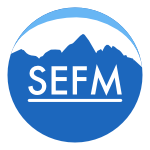 SEFM-2005-Chalin #logic #question
SEFM-2005-Chalin #logic #question- Logical Foundations of Program Assertions: What do Practitioners Want? (PC), pp. 383–393.
 DiGRA-2005-BeckerJ #game studies #learning #question
DiGRA-2005-BeckerJ #game studies #learning #question- Games for Learning: Are Schools Ready for What's to Come? (KB, MJ).
 DiGRA-2005-Bojin #experience #game studies
DiGRA-2005-Bojin #experience #game studies- What Do We Learn When We Change the Way We Play? Augmenting the Computer Gameplay Experience (NB).
 DiGRA-2005-Esposito05a #game studies
DiGRA-2005-Esposito05a #game studies- A Short and Simple Definition of What a Videogame Is (NE).
 DiGRA-2005-HoshinoSB #game studies #question
DiGRA-2005-HoshinoSB #game studies #question- The Dawn of Game Studies in Japan: What Held Japanese Game Studies Back? (RH, KS, AB).
 DiGRA-2005-NeulightK #case study #experience #learning #multi
DiGRA-2005-NeulightK #case study #experience #learning #multi- What happens if you catch Whypox? Children's learning experiences of infectious disease in a multi-user virtual environment (NN, YBK).
 DiGRA-2005-Thomas
DiGRA-2005-Thomas - 2, 443 Quenkers and counting, or What in us really wants to grind? Examining the grind in Star Wars Galaxies: An Empire Divided (DT).
 CHI-2005-ConsolvoSMLTP #people #social #why
CHI-2005-ConsolvoSMLTP #people #social #why- Location disclosure to social relations: why, when, & what people want to share (SC, IES, TM, AL, JT, PP), pp. 81–90.
 CHI-2005-OviattLC #difference #integration #multimodal #question #why
CHI-2005-OviattLC #difference #integration #multimodal #question #why- Individual differences in multimodal integration patterns: what are they and why do they exist? (SLO, RL, RC), pp. 241–249.
 CHI-2005-PatilL #configuration management #privacy
CHI-2005-PatilL #configuration management #privacy- Who gets to know what when: configuring privacy permissions in an awareness application (SP, JL), pp. 101–110.
 MoDELS-2005-MiliE #design pattern #problem #question #representation
MoDELS-2005-MiliE #design pattern #problem #question #representation- Representing and Applying Design Patterns: What Is the Problem? (HM, GEB), pp. 186–200.
 MoDELS-2005-MiliE #design pattern #problem #question #representation
MoDELS-2005-MiliE #design pattern #problem #question #representation- Representing and Applying Design Patterns: What Is the Problem? (HM, GEB), pp. 186–200.
 RE-2005-AlexanderRM #industrial #process #requirements
RE-2005-AlexanderRM #industrial #process #requirements- What Influences the Requirements Process in Industry? A Report on Industrial Practice (IFA, SR, NAMM), pp. 411–415.
 ICSE-2005-MaurerM #agile
ICSE-2005-MaurerM #agile- What you always wanted to know about agile methods but did not dare to ask (FM, GM), pp. 731–732.
 ICSE-2005-ShawHO #design #education #re-engineering
ICSE-2005-ShawHO #design #education #re-engineering- Deciding what to design: closing a gap in software engineering education (MS, JDH, IO), pp. 607–608.
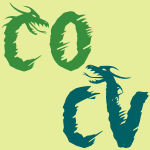 COCV-J-2005-Langmaack #question #reasoning
COCV-J-2005-Langmaack #question #reasoning- What Level of Mathematical Reasoning can Computer Science Demand of a Software Implementer? (HL), pp. 5–32.
 DAC-2005-NassifZMMPV #exclamation
DAC-2005-NassifZMMPV #exclamation- The Titanic: what went wrong! (SRN, PSZ, CM, MM, SDP, WV), pp. 349–350.
 CADE-2005-Dowek #consistency #question
CADE-2005-Dowek #consistency #question- What Do We Know When We Know That a Theory Is Consistent? (GD), pp. 1–6.
 HT-2004-Wardrip-Fruin #hypermedia
HT-2004-Wardrip-Fruin #hypermedia- What hypertext is (NWF), pp. 126–127.
 ITiCSE-2004-Ben-AriBBH #education #question #research
ITiCSE-2004-Ben-AriBBH #education #question #research- What do we mean by theoretically sound research in computer science education? (MBA, AB, SB, CH), pp. 230–231.
 ITiCSE-2004-VeenML #education #question
ITiCSE-2004-VeenML #education #question- What is lacking in curriculum schemes for computing/informatics? (MvV, FM, KL), pp. 186–190.
 SIGITE-2004-McMahon #c# #case study #dot-net #education #framework #how #learning
SIGITE-2004-McMahon #c# #case study #dot-net #education #framework #how #learning- How can you teach what you don’t know?: a case study of learning and teaching microsoft .NET framework and C# (REM), p. 269.
 SIGITE-2004-MiertschinW #mobile #question
SIGITE-2004-MiertschinW #mobile #question- Mobile computing in the freshman computer literacy course what impact? (SLM, CLW), pp. 149–152.
 ICALP-2004-Hofmann #logic #question #type system
ICALP-2004-Hofmann #logic #question #type system- What Do Program Logics and Type Systems Have in Common? (MH0), pp. 4–7.
 CHI-2004-BellottiDGFBD #design #towards
CHI-2004-BellottiDGFBD #design #towards- What a to-do: studies of task management towards the design of a personal task list manager (VB, BD, NG, PF, DGB, ND), pp. 735–742.
 ICEIS-v3-2004-Nobre04a
ICEIS-v3-2004-Nobre04a - Computer Ethics: What are we Talking About? Possible Contributions from Philosophy of Action, Critical Realism and Modern Hermeneutics (ÂLN), pp. 683–687.
 KR-2004-CalvaneseGLLR #query
KR-2004-CalvaneseGLLR #query- What to Ask to a Peer: Ontolgoy-based Query Reformulation (DC, GDG, DL, ML, RR), pp. 469–478.
 KR-2004-Denecker #analysis #logic programming
KR-2004-Denecker #analysis #logic programming- What’s in a Model? Epistemological Analysis of Logic Programming (MD), pp. 106–113.
 KR-2004-Patel-Schneider #owl #question #why
KR-2004-Patel-Schneider #owl #question #why- What Is OWL (and Why Should I Care)? (PFPS), pp. 735–737.
 SIGIR-2004-LarsonF #information retrieval
SIGIR-2004-LarsonF #information retrieval- Geographic information retrieval (GIR): searching where and what (RRL, PF), p. 600.
 SPLC-2004-Krueger #product line
SPLC-2004-Krueger #product line- Product Line Binding Times: What You Don?t Know Can Hurt You (CWK), pp. 305–306.
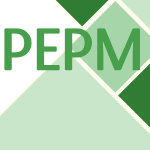 PEPM-2004-Morrisett #question
PEPM-2004-Morrisett #question- Invited talk: what’s the future for proof-carrying code? (JGM), p. 203.
 PPDP-2004-Morrisett #question
PPDP-2004-Morrisett #question- Invited talk: what’s the future for proof-carrying code? (JGM), p. 5.
 DAC-2004-BacchiniDBBNIY #named #verification
DAC-2004-BacchiniDBBNIY #named #verification- Verification: what works and what doesn’t (FB, RFD, BB, KB, KN, MI, EY), p. 274.
 DAC-2004-DeoZBCGLRRS #question
DAC-2004-DeoZBCGLRRS #question- What happened to ASIC?: Go (recon)figure? (ND, BZ, IB, JC, BG, PL, CBR, CR, RS), p. 185.
 DAC-2004-LiuPP #library #power management #question
DAC-2004-LiuPP #library #power management #question- Practical repeater insertion for low power: what repeater library do we need? (XL, YP, MCP), pp. 30–35.
 DATE-v2-2004-RajskiT #design #question #requirements
DATE-v2-2004-RajskiT #design #question #requirements- Nanometer Design: What are the Requirements for Manufacturing Test? (JR, KT), pp. 930–937.
 HT-2003-Nurnberg #hypermedia #question
HT-2003-Nurnberg #hypermedia #question- What is hypertext? (PJN), pp. 220–221.
 PODS-2003-CormodeM
PODS-2003-CormodeM - What’s hot and what’s not: tracking most frequent items dynamically (GC, SM), pp. 296–306.
 CSEET-2003-Cowling #question
CSEET-2003-Cowling #question- What Should Graduating Software Engineers Be Able To Do? (AJC), pp. 88–98.
 CSEET-2003-GermainR #process #question #student
CSEET-2003-GermainR #process #question #student- What Cognitive Activities Are Performed in Student Projects? (ÉG, PNR), p. 224–?.
 ITiCSE-2003-MurrayHKMWST #case study #education #experience #ide #java
ITiCSE-2003-MurrayHKMWST #case study #education #experience #ide #java- Experiences with IDEs and Java teaching: what works and what doesn’t (KAM, JMH, MK, TM, PJW, NCS, JAT), pp. 215–216.
 ITiCSE-2003-SheardD #question #student
ITiCSE-2003-SheardD #question #student- Influences on cheating practice of graduate students in IT courses: what are the factors? (JS, MD), pp. 45–49.
 CHI-2003-FriedmanKH #hardware #online
CHI-2003-FriedmanKH #hardware #online- Hardware companions?: what online AIBO discussion forums reveal about the human-robotic relationship (BF, PHKJ, JH), pp. 273–280.
 CHI-2003-Ho-ChingML #design #evaluation
CHI-2003-Ho-ChingML #design #evaluation- Can you see what i hear?: the design and evaluation of a peripheral sound display for the deaf (FWlHC, JM, JAL), pp. 161–168.
 CHI-2003-JackoSSBEEKMZ #feedback #multimodal #performance #question #visual notation
CHI-2003-JackoSSBEEKMZ #feedback #multimodal #performance #question #visual notation- Older adults and visual impairment: what do exposure times and accuracy tell us about performance gains associated with multimodal feedback? (JAJ, IUS, FS, LB, PJE, VKE, TK, KPM, BSZ), pp. 33–40.
 ICEIS-v4-2003-Cox #communication #design
ICEIS-v4-2003-Cox #communication #design- What Is the Value of Emotion in Communication? Implications for User Centred Design (RC), pp. 418–425.
 ECIR-2003-HeeschR #feedback #image #question #retrieval
ECIR-2003-HeeschR #feedback #image #question #retrieval- Relevance Feedback for Content-Based Image Retrieval: What Can Three Mouse Clicks Achieve? (DH, SMR), pp. 363–376.
 SIGIR-2003-KampsMRS #question #retrieval #xml
SIGIR-2003-KampsMRS #question #retrieval #xml- XML retrieval: what to retrieve? (JK, MM, MdR, BS), pp. 409–410.
 SIGIR-2003-SakaiK #performance #question #retrieval
SIGIR-2003-SakaiK #performance #question #retrieval- Evaluating retrieval performance for Japanese question answering: what are best passages? (TS, TK), pp. 429–430.
 UML-2003-Fowler #question #uml
UML-2003-Fowler #question #uml- What Is the Point of the UML? (MF), p. 325.
 ASE-2003-MemonBN #effectiveness #question #testing #user interface
ASE-2003-MemonBN #effectiveness #question #testing #user interface- What Test Oracle Should I Use for Effective GUI Testing? (AMM, IB, AN), pp. 164–173.
 ICSE-2003-Szyperski #component #how #question
ICSE-2003-Szyperski #component #how #question- Component Technology — What, Where, and How? (CAS), pp. 684–693.
 ESOP-2003-Meadows #analysis #encryption #evolution #protocol #requirements #specification
ESOP-2003-Meadows #analysis #encryption #evolution #protocol #requirements #specification- What Makes a Cryptographic Protocol Secure? The Evolution of Requirements Specification in Formal Cryptographic Protocol Analysis (CM), pp. 10–21.
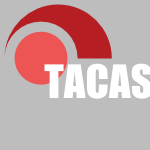 TACAS-2003-Lee #case study #experience
TACAS-2003-Lee #case study #experience- What Are We Trying to Prove? Reflections on Experiences with Proof-Carrying Code (PL0), p. 1.
 JCDL-2002-AllenBCC #case study #collaboration #experience #library
JCDL-2002-AllenBCC #case study #collaboration #experience #library- You mean I have to do what with whom: statewide museum/library DIGI collaborative digitization projects — the experiences of California, Colorado & North Carolina (NA, LB, RLC, KC), p. 359.
 PODS-2002-ChuHG #optimisation #query #question
PODS-2002-ChuHG #optimisation #query #question- Least Expected Cost Query Optimization: What Can We Expect? (FCC, JYH, JG), pp. 293–302.
 ITiCSE-2002-CarboneS #education #learning #question #student
ITiCSE-2002-CarboneS #education #learning #question #student- A studio-based teaching and learning model in IT: what do first year students think? (AC, JS), pp. 213–217.
 CSCW-2002-HandelH #chat #question
CSCW-2002-HandelH #chat #question- What is chat doing in the workplace? (MH, JDH), pp. 1–10.
 ICPR-v2-2002-KakD #question
ICPR-v2-2002-KakD #question- Robotic Vision: What Happened to the Visions of Yesterday? (ACK, GND), pp. 839–847.
 KDD-2002-UgurelKG #automation #classification #source code
KDD-2002-UgurelKG #automation #classification #source code- What’s the code?: automatic classification of source code archives (SU, RK, CLG), pp. 639–644.
 RE-2002-Kovitz #ambiguity
RE-2002-Kovitz #ambiguity- Ambiguity and What to Do about It (BK), p. 213.
 ASE-2002-OwenMC #finite #modelling #question
ASE-2002-OwenMC #finite #modelling #question- What Makes Finite-State Models More (or Less) Testable? (DO, TM, BC), pp. 237–240.
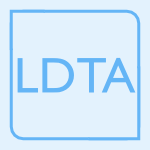 LDTA-2002-Consel #domain-specific language #how #why
LDTA-2002-Consel #domain-specific language #how #why- Domain-Specific Languages: What, Why, How (CC), p. 1.
 DAC-2002-BrodersenHKKLK #design #question
DAC-2002-BrodersenHKKLK #design #question- Nanometer design: what hurts next...? (RWB, AMH, JK, DK, MAL, MK), p. 242.
 DAC-2002-RabaeyKBCSLH #question
DAC-2002-RabaeyKBCSLH #question- What’s the next EDA driver? (JMR, JK, DB, RC, DS, LL, RH), p. 652.
 DATE-2002-LewisBLWGT #configuration management #question
DATE-2002-LewisBLWGT #configuration management #question- Reconfigurable SoC — What Will it Look Like? (JBL, IB, RL, CW, BG, YT), pp. 660–662.
 ECDL-2001-FreestonH #development #question
ECDL-2001-FreestonH #development #question- What’s Holding Up the Development of Georeferenced DLs? (MF, LLH), p. 458.
 PASTE-2001-Webber #invariant #question
PASTE-2001-Webber #invariant #question- What is a class invariant? (ABW), pp. 86–89.
 CHI-2001-FoggMLOVFPRSST #scalability #web
CHI-2001-FoggMLOVFPRSST #scalability #web- What makes Web sites credible?: a report on a large quantitative study (BJF, JM, OL, AO, CV, NF, JP, AR, JS, PS, MT), pp. 61–68.
 CIKM-2001-Rosenthal #documentation #question #security
CIKM-2001-Rosenthal #documentation #question #security- What Can Researches Do to Improve Security of Data and Documents? (AR), p. 593.
 KDD-2001-PadmanabhanZK #personalisation #semistructured data
KDD-2001-PadmanabhanZK #personalisation #semistructured data- Personalization from incomplete data: what you don’t know can hurt (BP, Z(Z, SOK), pp. 154–163.
 SEKE-2001-Vegas #question #testing
SEKE-2001-Vegas #question #testing- What Information is Relevant when Selecting Testing Techniques? (SV), pp. 45–52.
 TOOLS-USA-2001-Thompson #named #question
TOOLS-USA-2001-Thompson #named #question- SOAP: What Is It and What Is It Good For? (PT), p. 364.
 POPL-2001-BhargavanCMG #automaton #monitoring #network
POPL-2001-BhargavanCMG #automaton #monitoring #network- What packets may come: automata for network monitoring (KB, SC, PJM, CAG), pp. 206–219.
 SAS-2001-Schneider #security #why
SAS-2001-Schneider #security #why- Language-Based Security: What’s Needed and Why (FBS), p. 374.
 RE-2001-Gonzales #question
RE-2001-Gonzales #question- Systems or Software: What Should the “S” in SRE Stand for? (RG), p. 281.
 RE-2001-Greenspan #question #requirements
RE-2001-Greenspan #question #requirements- Extreme RE: What If There Is No Time for Requirements Engineering? (SJG), pp. 282–285.
 RE-2001-Hooks #requirements
RE-2001-Hooks #requirements- What Happens With Good Requirements Practices (IH), p. 268.
 RE-2001-WesselsD #question #requirements
RE-2001-WesselsD #question #requirements- What Happens before Requirements Engineering? (BW, JED), pp. 298–299.
 ICSE-2001-ModesittBW #overview #re-engineering #source code
ICSE-2001-ModesittBW #overview #re-engineering #source code- Academic Software Engineering: What Is and What Could Be? Results of the First Annual Survey for International SE Programs (KLM, DJB, LHW), pp. 643–652.
 DATE-2001-YeungHMMZ #integration #question #standard
DATE-2001-YeungHMMZ #integration #question #standard- Standard bus vs. bus wrapper: what is the best solution for future SoC integration? (CY, AH, GM, JM, JZ), pp. 776–777.
 PDP-2001-Appelt #analysis
PDP-2001-Appelt #analysis- What Groupware Functionality Do Users Really Use? Analysis of the Usage of the BSCW System (WA), p. 337–?.
 ESOP-2001-AmtoftKP #question
ESOP-2001-AmtoftKP #question- What Are Polymorphically-Typed Ambients? (TA, AJK, SMPG), pp. 206–220.
 CBSE-2000-Hall #case study #component #education #question
CBSE-2000-Hall #case study #component #education #question- Educational Case Study–What is the Model of an Ideal Component? Must it be an Object? (PH), p. 8.
 HT-2000-Larsen #flexibility #hypermedia
HT-2000-Larsen #flexibility #hypermedia- Providing flexibility within hypertext systems: what we’ve learned at HT workshops, CyberMountain, and elsewhere (DL), pp. 268–269.
 VLDB-2000-HinneburgAK #nearest neighbour #question
VLDB-2000-HinneburgAK #nearest neighbour #question- What Is the Nearest Neighbor in High Dimensional Spaces? (AH, CCA, DAK), pp. 506–515.
 VLDB-2000-ManegoldBK #cpu #memory management #optimisation
VLDB-2000-ManegoldBK #cpu #memory management #optimisation- What Happens During a Join? Dissecting CPU and Memory Optimization Effects (SM, PAB, MLK), pp. 339–350.
 ITiCSE-2000-Carter #student
ITiCSE-2000-Carter #student- What the students said about plagiarsim (JC), p. 186.
 CSMR-2000-JohnstoneSW #assembly #challenge #compilation #control flow
CSMR-2000-JohnstoneSW #assembly #challenge #compilation #control flow- What Assembly Language Programmers Get Up To: Control Flow Challenges in Reverse Compilation (AJ, ES, TW), pp. 83–92.
 ICSM-2000-Chapin00a #maintenance #question
ICSM-2000-Chapin00a #maintenance #question- Do We Know What Preventive Maintenance Is? (NC), pp. 15–17.
 ICSM-2000-Kajko-Mattsson #exclamation #maintenance #question
ICSM-2000-Kajko-Mattsson #exclamation #maintenance #question- Preventive Maintenance! Do We Know What It Is? (MKM), pp. 12–14.
 ICSM-2000-Vehvilainen #maintenance #question
ICSM-2000-Vehvilainen #maintenance #question- What Is Preventive Software Maintenance? (RV), p. 18–?.
 CHI-2000-LeeKM #design #internet
CHI-2000-LeeKM #design #internet- What makes Internet users visit cyber stores again? key design factors for customer loyalty (JL, JK, JYM), pp. 305–312.
 CHI-2000-WhittakerDHM #interface #named
CHI-2000-WhittakerDHM #interface #named- Jotmail: a voicemail interface that enables you to see what was said (SW, RD, JH, UM), pp. 89–96.
 ICEIS-2000-MooreICMS #adaptation #workflow
ICEIS-2000-MooreICMS #adaptation #workflow- Who Does What? Matching Agents to Tasks in Adaptive Workflow (JPM, RI, PWHC, AM, JS), pp. 181–185.
 TOOLS-EUROPE-2000-Reenskaug #collaboration #how #uml #why
TOOLS-EUROPE-2000-Reenskaug #collaboration #how #uml #why- The What, Why and How of the UML Collaboration (TR), p. 476.
 PEPM-2000-LiuS #optimisation #question #recursion
PEPM-2000-LiuS #optimisation #question #recursion- From Recursion to Iteration: What are the Optimizations? (YAL, SDS), pp. 73–82.
 ICRE-2000-AntonA #certification #requirements
ICRE-2000-AntonA #certification #requirements- What Do You Mean I’ve Been Practicing without a License? Certification and Licensing of Requirements Engineering Professionals (AIA, JMA), p. 151.
 ICRE-2000-Gause #question #requirements
ICRE-2000-Gause #question #requirements- Requirements Engineering: What Have We Accomplished? Where Are We Now? Where Are We Going? (DCG), pp. 195–196.
 ICRE-2000-Mead00a #certification #requirements
ICRE-2000-Mead00a #certification #requirements- What Do You Mean I’m Practicing without a License? Certification and Licensing of Requirements Engineering Professionals (NRM), p. 152.
 FASE-2000-Kondoh #question #re-engineering
FASE-2000-Kondoh #question #re-engineering- What is “Mathematicalness” in Software Engineering? (HK), pp. 163–177.
 HT-1999-NurnbergA #hypermedia #research #web
HT-1999-NurnbergA #hypermedia #research #web- What Was the Question? Reconciling Open Hypermedia and World Wide Web Research (PJN, HA), pp. 83–90.
 SIGMOD-1999-CareyCNVDRSM #question
SIGMOD-1999-CareyCNVDRSM #question- O-O, What’s Happening to DB2? (MJC, DDC, SN, BV, DD, SR, RS, NMM), pp. 511–512.
 VLDB-1999-CareyCNVDRSM #question
VLDB-1999-CareyCNVDRSM #question- O-O, What Have They Done to DB2? (MJC, DDC, SN, BV, DD, SR, RS, NMM), pp. 542–553.
 VLDB-1999-DeRose #question #xml
VLDB-1999-DeRose #question #xml- What Do Those Weird XML Types Want, Anyway? (SJD), pp. 721–724.
 VLDB-1999-JagadishLS #question
VLDB-1999-JagadishLS #question- What can Hierarchies do for Data Warehouses? (HVJ, LVSL, DS), pp. 530–541.
 CSEET-1999-McMillanR #re-engineering #student
CSEET-1999-McMillanR #re-engineering #student- What Leading Practitioners Say Should be Emphasized in Students’ Software Engineering Projects (WWM, SR), pp. 177–185.
 ITiCSE-1999-Carter #collaboration #student
ITiCSE-1999-Carter #collaboration #student- Collaboration or plagiarism: what happens when students work together (JC), pp. 52–55.
 ITiCSE-1999-CarterJ #gender #programming #question
ITiCSE-1999-CarterJ #gender #programming #question- Gender and programming: what’s going on? (JC, TJ), pp. 1–4.
 HCI-CCAD-1999-WhiteC #question #web
HCI-CCAD-1999-WhiteC #question #web- What are you looking at on the web: information or applications? (DW, YYC), pp. 76–79.
 HCI-EI-1999-Canamero #human-computer #question
HCI-EI-1999-Canamero #human-computer #question- What Emotions are Necessary for HCI? (DC), pp. 838–842.
 HCI-EI-1999-HansenS #question
HCI-EI-1999-HansenS #question- 200, 000, 000, 000 Call Records — Now What Do We Do? (RSH, RKS), pp. 1158–1161.
 ICEIS-1999-JarvisSMMC #adaptation #workflow
ICEIS-1999-JarvisSMMC #adaptation #workflow- What Right Do You Have To Do That?-Infusing Adaptive Workflow Technology with Knowledfe about the Organisational and Autority Context of a Task (PJ, JS, AM, JPM, PWHC), pp. 240–247.
 ICEIS-1999-ReisM #network
ICEIS-1999-ReisM #network- What’s in a Node?-Nodes and Agents in Logistic Networks (JR, NJM), pp. 285–291.
 CIKM-1999-Giles #question #web
CIKM-1999-Giles #question #web- Searching the Web: Can You Find What You Want? (CLG), pp. 1–2.
 KDD-1999-Sahar
KDD-1999-Sahar - Interestingness via What is Not Interesting (SS), pp. 332–336.
 TOOLS-EUROPE-1999-Henderson-SellersB #question
TOOLS-EUROPE-1999-Henderson-SellersB #question- What is This Thing Called Aggregation? (BHS, FB), pp. 236–250.
 PLDI-1999-CraryHP #question #recursion
PLDI-1999-CraryHP #question #recursion- What is a Recursive Module? (KC, RH, SP), pp. 50–63.
 SIGAda-1999-PautetT #distributed #question
SIGAda-1999-PautetT #distributed #question- What future for the distributed systems annex? (LP, ST), pp. 77–82.
 DAC-1999-DeHonW #automation #configuration management #design #why
DAC-1999-DeHonW #automation #configuration management #design #why- Reconfigurable Computing: What, Why, and Implications for Design Automation (AD, JW), pp. 610–615.
 HPDC-1999-Weissman #fault tolerance #grid #question
HPDC-1999-Weissman #fault tolerance #grid #question- Fault Tolerant Computing on the Grid: What are My Options? (JBW), pp. 351–352.
 STOC-1999-CanettiO #question
STOC-1999-CanettiO #question- Secure Computation with Honest-Looking Parties: What If Nobody Is Truly Honest? (RC, RO), pp. 255–264.
 ECDL-1998-Houstis #how #question #repository #scalability #towards
ECDL-1998-Houstis #how #question #repository #scalability #towards- Federated Scientific Data Repositories for the Environment Towards Global Scalable Management of Environmental Information: How Useful Will They Be? What Is Their Potential Impact? Shall We Save the Environment? (CEH), pp. 741–742.
 SIGMOD-1998-LacroixSC #exclamation #web
SIGMOD-1998-LacroixSC #exclamation #web- User-oriented smart-cache for the Web: What You Seek is What You Get! (ZL, AS, RC), pp. 572–574.
 VLDB-1998-BlottKS #communication #how #question
VLDB-1998-BlottKS #communication #how #question- Information, Communication, and Money: For What Can We Charge and How Can We Meter It? (SB, HFK, AS), p. 697.
 CSEET-1998-CarterBCR #industrial
CSEET-1998-CarterBCR #industrial- What Industry Wants in Its New Hires (DC, MFB, RC, GR), pp. 126–127.
 CHI-1998-WalkerFFMH #email #interface
CHI-1998-WalkerFFMH #email #interface- What can I say? Evaluating a Spoken Language Interface to Email (MAW, JF, GDF, CM, DH), pp. 582–589.
 ICPR-1998-Gimelfarb #interactive #modelling #question #segmentation
ICPR-1998-Gimelfarb #interactive #modelling #question #segmentation- Supervised segmentation by pairwise interactions: do Gibbs models learn what we expect? (GLG), pp. 817–819.
 KR-1998-Levesque98a
KR-1998-Levesque98a - What Robots Can Do (HJL), p. 651.
 OOPSLA-1998-DrossopoulouWE #java #question
OOPSLA-1998-DrossopoulouWE #java #question- What is Java Binary Compatibility? (SD, DW, SE), pp. 341–361.
 ICSE-1998-RothermelLDB #source code #testing #visual notation
ICSE-1998-RothermelLDB #source code #testing #visual notation- What You See Is What You Test: A Methodology for Testing Form-Based Visual Programs (GR, LL, CD, MMB), pp. 198–207.
 DAC-1998-Dill #question #simulation #verification
DAC-1998-Dill #question #simulation #verification- What’s Between Simulation and Formal Verification? (DLD), pp. 328–329.
 FASE-1998-Jones
FASE-1998-Jones - Some Mistakes I Have and What I Have Learned from Them (CBJ), pp. 7–20.
 ISSTA-1998-Hamlet #question #testing
ISSTA-1998-Hamlet #question #testing- What Can We Learn by Testing a Program? (RGH), pp. 50–52.
 HT-1997-Chuat #hypermedia #using
HT-1997-Chuat #hypermedia #using- Using Hypertext for Textual Genetics, or, What is Suitable in a Hypertext System for an Information Gardening Application (CC), pp. 230–231.
 HT-1997-Golovchinsky #hypermedia #information retrieval #integration #query
HT-1997-Golovchinsky #hypermedia #information retrieval #integration #query- What the Query Told the Link: The Integration of Hypertext and Information Retrieval (GG), pp. 67–74.
 HT-1997-LaddCS #question #web
HT-1997-LaddCS #question #web- The World Wide Web: What Cost Simplicity? (BCL, MVC, PDS), pp. 210–211.
 ITiCSE-1997-Moser #game studies #learning #why
ITiCSE-1997-Moser #game studies #learning #why- A fantasy adventure game as a learning environment: why learning to program is so difficult and what can be done about it (RM), pp. 114–116.
 ITiCSE-WGR-1997-LawheadABCCDDFS #distance #learning #web
ITiCSE-WGR-1997-LawheadABCCDDFS #distance #learning #web- The Web and distance learning: what is appropriate and what is not (report of the ITiCSE 1997 working group on the web and distance learning) (PBL, EA, CGB, LC, DC, JD, MD, ERF, KS), pp. 27–37.
 HCI-CC-1997-Blanchard #how #human-computer #interactive #question #standard
HCI-CC-1997-Blanchard #how #human-computer #interactive #question #standard- International Standards on Human-Computer Interaction: What is Out There and How Will it be Implemented? (HEB), pp. 599–602.
 HCI-CC-1997-SalimM #named #question
HCI-CC-1997-SalimM #named #question- Groupware: What You See Is What You Need? (SSS, LAM), pp. 53–56.
 HCI-SEC-1997-BlanchonF
HCI-SEC-1997-BlanchonF - Asking Users About What They Mean: Two Experiments & Results (HB, LF), pp. 609–612.
 EDOC-1997-Kindel #black box #encapsulation #interface #multi #named
EDOC-1997-Kindel #black box #encapsulation #interface #multi #named- COM: what makes it work, black-box encapsulation through multiple, immutable interfaces (CK), pp. 68–77.
 RE-1997-Hall #question #requirements #using
RE-1997-Hall #question #requirements #using- What’s the Use of Requirements Engineering? (AH), p. 2–?.
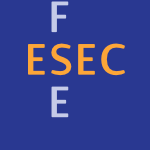 ESEC-FSE-1997-Maibaum #education #question
ESEC-FSE-1997-Maibaum #education #question- What We Teach Software Engineers in the University: Do We Take Engineering Seriously? (TSEM), pp. 40–50.
 ESEC-FSE-1997-Uhl #industrial
ESEC-FSE-1997-Uhl #industrial- What we Expect from Software Engineers in the Industry (JU), p. 51.
 TAPSOFT-1997-Sanella #question
TAPSOFT-1997-Sanella #question- What Does the Future Hold for Theoretical Computer Science? (DS), pp. 15–19.
 VLDB-1996-GuptaM #problem
VLDB-1996-GuptaM #problem- What is the Data Warehousing Problem? (Are Materialized Views the Answer?) (AG, ISM), p. 602.
 ITiCSE-1996-ProulxRF #education #how #question
ITiCSE-1996-ProulxRF #education #how #question- Foundations of computer science: what are they and how do we teach them? (VKP, RR, HJF), pp. 42–48.
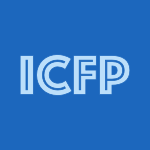 ICFP-1996-LawallM #cost analysis #question #λ-calculus
ICFP-1996-LawallM #cost analysis #question #λ-calculus- Optimality and Inefficiency: What Isn’t a Cost Model of the λ Calculus? (JLL, HGM), pp. 92–101.
 CSCW-1996-Bazzigaluppi #question
CSCW-1996-Bazzigaluppi #question- Groupware at Work: It’s Here Now, But Do We Know What It Is Yet? (GB), pp. 438–440.
 AKDDM-1996-MatheusPM
AKDDM-1996-MatheusPM - Selecting and reporting What Is Interesting (CJM, GPS, DM), pp. 495–515.
 ICPR-1996-FlorouM #3d #metric #question
ICPR-1996-FlorouM #3d #metric #question- What accuracy for 3D measurements with cameras? (GF, RM), pp. 354–358.
 KR-1996-Fikes #named #ontology #question #research
KR-1996-Fikes #named #ontology #question #research- Ontologies: What Are They, and Where’s The Research? (RF), pp. 652–653.
 KR-1996-Mark #named #ontology #question #research
KR-1996-Mark #named #ontology #question #research- Ontologies: What Are They, and Where’s The Research? (WSM), pp. 654–655.
 POPL-1996-Jim #question
POPL-1996-Jim #question- What Are Principal Typings and What Are They Good For? (TJ), pp. 42–53.
 DAC-1996-KantrowitzN #analysis #correctness #simulation #verification
DAC-1996-KantrowitzN #analysis #correctness #simulation #verification- I’m Done Simulating: Now What? Verification Coverage Analysis and Correctness Checking of the DECchip 21164 Alpha Microprocessor (MK, LMN), pp. 325–330.
 CADE-1996-Scott #automation #deduction #question
CADE-1996-Scott #automation #deduction #question- What Can We Hope to Achieve From Automated Deduction? (DSS), p. 245.
 TLCA-1995-Bierman #category theory #linear #logic #question
TLCA-1995-Bierman #category theory #linear #logic #question- What is a Categorical Model of Intuitionistic Linear Logic? (GMB), pp. 78–93.
 CHI-1995-OlsonOM #design #question #realtime #video
CHI-1995-OlsonOM #design #question #realtime #video- What Mix of Video and Audio is Useful for Small Groups Doing Remote Real-Time Design Work? (JSO, GMO, DKM), pp. 362–368.
 CHI-1995-RoeslerM #data access #online #taxonomy
CHI-1995-RoeslerM #data access #online #taxonomy- What Help Do Users Need?: Taxonomies for On-Line Information Needs and Access Methods (AWR, SGM), pp. 437–441.
 STOC-1995-DiaconisS #algorithm #question
STOC-1995-DiaconisS #algorithm #question- What do we know about the Metropolis algorithm? (PD, LSC), pp. 112–129.
 STOC-1995-HenzingerKPV #automaton #decidability #hybrid #question
STOC-1995-HenzingerKPV #automaton #decidability #hybrid #question- What’s decidable about hybrid automata? (TAH, PWK, AP, PV), pp. 373–382.
 CHI-1994-WhittakerFD94a #communication #how #question
CHI-1994-WhittakerFD94a #communication #how #question- Informal workplace communication: what is it like and how might we support it? (SW, DF, ODJ), pp. 131–137.
 TRI-Ada-1994-SitaramanFFFHMW #education #question
TRI-Ada-1994-SitaramanFFFHMW #education #question- What Changes Are Needed For Undergraduate CS Curricula to Educate “Software Engineers”? (MS, MBF, GAF, WBF, JEH, DFM, BWW), p. 220.
 ICSE-1994-BrodmanJ #case study #experience
ICSE-1994-BrodmanJ #case study #experience- What Small Business and Small Organizations Say About the CMM: Experience Report (JGB, DLJ), pp. 331–340.
 CADE-1994-Platek #proving #question
CADE-1994-Platek #proving #question- What is a Proof? (RP), p. 431.
 SIGMOD-1993-Egenhofer #database #navigation #requirements
SIGMOD-1993-Egenhofer #database #navigation #requirements- What’s Special about Spatial? Database Requirements for Vehicle Navigation in Geographic Space (MJE), pp. 398–402.
 CSM-1993-Caldiera #maintenance #standard
CSM-1993-Caldiera #maintenance #standard- Standards for Software Maintenance — What We Have and What We Need (GC), p. 103.
 ICALP-1993-KannegantiC #higher-order #programming language #question
ICALP-1993-KannegantiC #higher-order #programming language #question- What is a Universal Higher-Order Programming Language? (RK, RC), pp. 682–695.
 INTERCHI-1993-HerbslebK #design
INTERCHI-1993-HerbslebK #design- Preserving knowledge in design projects: what designers need to know (JDH, EK), pp. 7–14.
 TRI-Ada-1993-Brett #ada #compilation #implementation
TRI-Ada-1993-Brett #ada #compilation #implementation- Smart Recompilation: What Is It?, Its Benefits for the User, and Its Implementation in the DEC Ada Compilation System (BRB), pp. 277–287.
 RE-1993-KuwanaH #empirical #representation #requirements
RE-1993-KuwanaH #empirical #representation #requirements- Representing knowledge in requirements engineering: an empirical study of what software engineers need to know (EK, JDH), pp. 273–276.
 STOC-1993-NaorS #question
STOC-1993-NaorS #question- What can be computed locally? (MN, LJS), pp. 184–193.
 SIGMOD-1992-Rosenthal
SIGMOD-1992-Rosenthal - What Can We Do to Strengthen the Connection Between Theory and System Builders (AR), p. 101.
 ICALP-1992-HenzingerMP #question
ICALP-1992-HenzingerMP #question- What Good Are Digital Clocks? (TAH, ZM, AP), pp. 545–558.
 KR-1992-Reiter #reasoning #research
KR-1992-Reiter #reasoning #research- Twelve Years of Nonmonotonic Reasoning Research: Where (and What) Is the Beef (RR), p. 789.
 OOPSLA-1992-LiuGG #learning #object-oriented #question
OOPSLA-1992-LiuGG #learning #object-oriented #question- What Contributes to Successful Object-Oriented Learning? (CL, SG, BG), pp. 77–86.
 TOOLS-USA-1992-Odberg #database #object-oriented #query
TOOLS-USA-1992-Odberg #database #object-oriented #query- What “What” is and isn’t: On Query Languages for Object-Oriented Databases, or: Closing the Gap — Again (EO), pp. 13–24.
 TRI-Ada-C-1992-Beidler #component #education #tool support
TRI-Ada-C-1992-Beidler #component #education #tool support- Building on the Booch Components: What Can Be Learned When Modifying Real World Software Tools for Educational Use (JB), pp. 157–164.
 HT-1991-ThuringHH #how
HT-1991-ThuringHH #how- What’s Eliza Doing in the Chinese Room? Incoherent Hyperdocuments — and How to Avoid Them (MT, JMH, JH), pp. 161–177.
 SEI-1991-RiedlWFKM #re-engineering
SEI-1991-RiedlWFKM #re-engineering- What We Have Learned About Software Engineering Expertise (TRR, JSW, JTF, GAK, JDM), pp. 261–270.
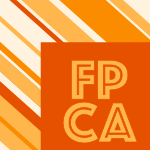 FPCA-1991-FrandsenS #implementation #performance #question #λ-calculus
FPCA-1991-FrandsenS #implementation #performance #question #λ-calculus- What is an Efficient Implementation of the λ-calculus? (GSF, CS), pp. 289–312.
 ECOOP-1991-PalsbergS #question #reuse #type safety
ECOOP-1991-PalsbergS #question #reuse #type safety- What is Type-Safe Code Reuse? (JP, MIS), pp. 325–341.
 KBSE-1991-Sasso91a #question
KBSE-1991-Sasso91a #question- Encouraging the Adoption of KBSE Technology: What Needs to Happen First? (WCS), pp. 237–238.
 CHI-1990-CushmanOD #performance #question #requirements
CHI-1990-CushmanOD #performance #question #requirements- Usable OCR: what are the minimum performance requirements? (WHC, PSO, CMD), pp. 145–152.
 CHI-1990-Jacob #eye tracking #interactive
CHI-1990-Jacob #eye tracking #interactive- What you look at is what you get: eye movement-based interaction techniques (RJKJ), pp. 11–18.
 CHI-1990-Winograd #education #human-computer #interactive
CHI-1990-Winograd #education #human-computer #interactive- What can we teach about human-computer interaction? (plenary address) (TW), pp. 443–448.
 CSCW-1990-MaloneC #coordination #design #how #question
CSCW-1990-MaloneC #coordination #design #how #question- What is Coordination Theory and How Can It Help Design Cooperative Work Systems? (TWM, KC), pp. 357–370.
 SEKE-1990-VolovikMT #re-engineering
SEKE-1990-VolovikMT #re-engineering- What Software Engineering Can Learn From Practitioners (DV, RM, WTT), pp. 216–221.
 OOPSLA-ECOOP-1990-BockerH
OOPSLA-ECOOP-1990-BockerH - What Tracers Are Made Of (HDB, JH), pp. 89–99.
 CLP-1990-Reiter90 #database #question
CLP-1990-Reiter90 #database #question- What Should a Database Know? (RR), p. 765.
 HT-1989-HalaszMMPS #named
HT-1989-HalaszMMPS #named- Confessions — What’s Wrong with Our Systems (FGH, DLM, NKM, AP, BS), p. 399.
 HT-1989-Lesk
HT-1989-Lesk - What To Do When There’s Too Much Information (ML), pp. 305–318.
 CHI-1989-BlackBMC #effectiveness #learning #online #question
CHI-1989-BlackBMC #effectiveness #learning #online #question- On-line tutorials: What kind of inference leads to the most effective learning? (JBB, JSB, MM, JMC), pp. 81–83.
 CHI-1989-Moran #question
CHI-1989-Moran #question- What is EuroParc? (TPM), pp. 51–52.
 KR-1989-Lehmann #knowledge base #question
KR-1989-Lehmann #knowledge base #question- What Does a Conditional Knowledge Base Entail? (DJL), pp. 212–222.
 KR-1989-Poole #reasoning
KR-1989-Poole #reasoning- What the Lottery Paradox Tells Us About Default Reasoning (DP), pp. 333–340.
 ML-1989-RuffD #question
ML-1989-RuffD #question- What Good Are Experiments? (RAR, TGD), pp. 109–112.
 ML-1989-VanLehn #problem
ML-1989-VanLehn #problem- Discovering Problem Solving Strategies: What Humans Do and Machines Don’t (Yet) (KV), pp. 215–217.
 ICSE-1989-Boehm #generative #process
ICSE-1989-Boehm #generative #process- What We Really Need Are Process Model Generators (BWB), p. 397.
 PODS-1988-Reiter #database #question
PODS-1988-Reiter #database #question- What Should A Database Know? (RR), pp. 302–304.
 SEI-1988-Werth #how #tool support #why
SEI-1988-Werth #how #tool support #why- Software Tools at the University: Why, What and How (LHW), pp. 169–186.
 ECOOP-1988-MadsenM #object-oriented #programming
ECOOP-1988-MadsenM #object-oriented #programming- What Object-Oriented Programming May Be — and What It Does Not Have To Be (OLM, BMP), pp. 1–20.
 ECOOP-1988-WegnerZ #incremental #inheritance
ECOOP-1988-WegnerZ #incremental #inheritance- Inheritance as an Incremental Modification Mechanism or What Like Is and Isn’t Like (PW, SBZ), pp. 55–77.
 HCI-CE-1987-Salvendy #development #human-computer #interactive #research
HCI-CE-1987-Salvendy #development #human-computer #interactive #research- What We Know and What We Should Know About Human-Computer Interaction: Strategies for Research and Development (GS), pp. 13–19.
 HCI-CE-1987-Soloway #specification
HCI-CE-1987-Soloway #specification- I Can’t Tell What in the Code Implements What in the Specs (ES), pp. 317–328.
 ECOOP-1987-Stroustrup #object-oriented #programming
ECOOP-1987-Stroustrup #object-oriented #programming- What is “Object-Oriented Programming?” (BS), pp. 51–70.
 CADE-1986-Eisinger #graph
CADE-1986-Eisinger #graph- What You Always Wanted to Know About Clause Graph Resolution (NE), pp. 316–336.
 POPL-1985-Lamport #concurrent #specification #why
POPL-1985-Lamport #concurrent #specification #why- What It Means for a Concurrent Program to Satisfy a Specification: Why No One Has Specified Priority (LL), pp. 78–83.
 DAC-1985-KowalskiT #automation #design #knowledge base
DAC-1985-KowalskiT #automation #design #knowledge base- The VLSI design automation assistant: what’s in a knowledge base (TJK, DET), pp. 252–258.
 POPL-1984-HalpernMT #question #semantics
POPL-1984-HalpernMT #question #semantics- The Semantics of Local Storage, or What Makes the Free-List Free? (JYH, ARM, BAT), pp. 245–257.
 ICSE-1984-MaibaumT #on the
ICSE-1984-MaibaumT #on the- On What Exactly Is Going On When Software Is Developed Step-by-Step (TSEM, WMT), pp. 528–533.
 DAC-1984-Smith #layout #tool support
DAC-1984-Smith #layout #tool support- Basic turorial layout tools — what really is there (RS), p. 219.
 SIGIR-1982-Henrichs #information retrieval #question
SIGIR-1982-Henrichs #information retrieval #question- The Growing Crisis of Traditional Information Retrieval Systems — What is to Follow? (NH), pp. 1–12.
 ILPC-1982-Kurokawa82 #logic programming #re-engineering
ILPC-1982-Kurokawa82 #logic programming #re-engineering- Logic Programming — What Does it Bring to the Software Engineering (TK), pp. 134–138.
 DAC-1981-Burdick #design #formal method #process
DAC-1981-Burdick #design #formal method #process- What to do when the seat of your pants wears out — the formalization of the VLSI design process (EB), pp. 708–709.
 VLDB-1980-BernsteinG #normalisation #question
VLDB-1980-BernsteinG #normalisation #question- What does Boyce-Codd Normal Form Do? (PAB, NG), pp. 245–259.
 DAC-1980-Armstrong
DAC-1980-Armstrong - A CAD user’s perspective what gets done right wrong and not at all (RAA), p. 517.
 VLDB-1978-BrodieS #data type #question
VLDB-1978-BrodieS #data type #question- What is the Use of Abstract Data Types? (MLB, JWS), pp. 140–141.
 VLDB-1978-Johnson #question
VLDB-1978-Johnson #question- What End-User Facilities do we Need? (FEJ), p. 126.
 VLDB-1978-Sharman #metamodelling #question #semantics
VLDB-1978-Sharman #metamodelling #question #semantics- What is a “Good” Semantic or Meta Model? (GS), p. 138.
 POPL-2020-MigeedP #decidability #question
POPL-2020-MigeedP #decidability #question ECSA-2019-GalsterGG #machine learning #perspective #quality
ECSA-2019-GalsterGG #machine learning #perspective #quality EDM-2019-GitinabardBHL #analysis #online #platform #sequence #student
EDM-2019-GitinabardBHL #analysis #online #platform #sequence #student EDM-2019-WhitehillAH #crowdsourcing #learning #predict
EDM-2019-WhitehillAH #crowdsourcing #learning #predict EDM-2019-XuGLB #how #social
EDM-2019-XuGLB #how #social ICPC-2019-Weimer #question
ICPC-2019-Weimer #question ICSME-2019-AlsharifKM #automation #generative #sql #testing
ICSME-2019-AlsharifKM #automation #generative #sql #testing ICSME-2019-JinCX #api #developer #question
ICSME-2019-JinCX #api #developer #question MSR-2019-BangashSCWHA #case study #developer #machine learning #ml #stack overflow
MSR-2019-BangashSCWHA #case study #developer #machine learning #ml #stack overflow MSR-2019-JinS #empirical #stack overflow
MSR-2019-JinS #empirical #stack overflow MSR-2019-ManesB #developer #git #how #question #stack overflow
MSR-2019-ManesB #developer #git #how #question #stack overflow SANER-2019-Whittle
SANER-2019-Whittle  Haskell-2019-SchrijversPWJ #algebra #composition #monad
Haskell-2019-SchrijversPWJ #algebra #composition #monad CoG-2019-AshlockS19a #automation #generative #representation
CoG-2019-AshlockS19a #automation #generative #representation FDG-2019-YiLD
FDG-2019-YiLD  VS-Games-2019-Jercic #game studies #metric #performance #predict #set
VS-Games-2019-Jercic #game studies #metric #performance #predict #set CIKM-2019-BoutetG #privacy
CIKM-2019-BoutetG #privacy CIKM-2019-SunQYCCC #question
CIKM-2019-SunQYCCC #question CIKM-2019-ZhaoLZWJXWM #evaluation #matter #problem
CIKM-2019-ZhaoLZWJXWM #evaluation #matter #problem ICML-2019-ByrdL #learning #question
ICML-2019-ByrdL #learning #question ICML-2019-JangLHS #learning
ICML-2019-JangLHS #learning KDD-2019-ChenZBXL #behaviour #predict
KDD-2019-ChenZBXL #behaviour #predict Onward-2019-Smaragdakis #programming language #question
Onward-2019-Smaragdakis #programming language #question PLATEAU-2019-HaoG #programming #question
PLATEAU-2019-HaoG #programming #question ASE-2019-ZhouSZ #named
ASE-2019-ZhouSZ #named ESEC-FSE-2019-BagherzadehK #big data #developer #scalability
ESEC-FSE-2019-BagherzadehK #big data #developer #scalability ESEC-FSE-2019-ZhouVK #case study #performance #social
ESEC-FSE-2019-ZhouVK #case study #performance #social CASE-2019-MaggipintoSZM #case study #fault #multi #predict #process
CASE-2019-MaggipintoSZM #case study #fault #multi #predict #process CAV-2019-Siegel #on the fly #partial order #reduction
CAV-2019-Siegel #on the fly #partial order #reduction ICST-2019-LiuKB0KT #automation #benchmark #bias #exclamation #fault #locality #metric #program repair
ICST-2019-LiuKB0KT #automation #benchmark #bias #exclamation #fault #locality #metric #program repair EDM-2018-CruesBAPBS #comprehension
EDM-2018-CruesBAPBS #comprehension EDM-2018-PytlarzPPP #network #predict #student #transaction
EDM-2018-PytlarzPPP #network #predict #student #transaction ICPC-2018-0001LYC #comprehension #mobile
ICPC-2018-0001LYC #comprehension #mobile ICPC-2018-TymchukGN #developer #feedback #jit #static analysis
ICPC-2018-TymchukGN #developer #feedback #jit #static analysis ICPC-2018-VivianiJFXM #design #developer #question #topic
ICPC-2018-VivianiJFXM #design #developer #question #topic MSR-2018-ArimaHK08 #case study #commit #how #java #question
MSR-2018-ArimaHK08 #case study #commit #how #java #question MSR-2018-CalciatiKBG #question
MSR-2018-CalciatiKBG #question MSR-2018-GeorgiouKLS #energy #programming language #question
MSR-2018-GeorgiouKLS #energy #programming language #question FDG-2018-KosaS #analysis #game studies
FDG-2018-KosaS #analysis #game studies CIKM-2018-WuQLJ #named
CIKM-2018-WuQLJ #named ICPR-2018-AbateNBM #question #smarttech
ICPR-2018-AbateNBM #question #smarttech ICPR-2018-VinayavekhinCMA #comprehension #learning #using
ICPR-2018-VinayavekhinCMA #comprehension #learning #using KDD-2018-ZhouNH #adaptation #education #memory management
KDD-2018-ZhouNH #adaptation #education #memory management OOPSLA-2018-MathurK0 #concurrent #detection #power of #predict
OOPSLA-2018-MathurK0 #concurrent #detection #power of #predict POPL-2018-ChenCHLW #constraints #decidability #string
POPL-2018-ChenCHLW #constraints #decidability #string ESEC-FSE-2018-ChenSFMXLX #mobile #question
ESEC-FSE-2018-ChenSFMXLX #mobile #question ESEC-FSE-2018-RamSCB #empirical #overview
ESEC-FSE-2018-RamSCB #empirical #overview CAV-2018-AkshayCGKS #functional #question #synthesis
CAV-2018-AkshayCGKS #functional #question #synthesis ICSA-2017-ErnstBON #automation #design #tool support
ICSA-2017-ErnstBON #automation #design #tool support JCDL-2017-PoursardarS
JCDL-2017-PoursardarS  CSEET-2017-GarySL #lessons learnt #online #re-engineering
CSEET-2017-GarySL #lessons learnt #online #re-engineering ICPC-2017-AjamiWF #complexity #question #syntax
ICPC-2017-AjamiWF #complexity #question #syntax ICSME-2017-BlondeauEACCD #case study #developer #scalability #testing
ICSME-2017-BlondeauEACCD #case study #developer #scalability #testing ICSME-2017-SilvaWGSG #how #question
ICSME-2017-SilvaWGSG #how #question SANER-2017-ChatterjeeNDAPK #case study #documentation
SANER-2017-ChatterjeeNDAPK #case study #documentation SANER-2017-MoonSLK #analysis #behaviour #generative #how
SANER-2017-MoonSLK #analysis #behaviour #generative #how CHI-PLAY-2017-Peddycord-LiuCK #game studies #question #student #using
CHI-PLAY-2017-Peddycord-LiuCK #game studies #question #student #using FDG-2017-Schrier #game studies #problem
FDG-2017-Schrier #game studies #problem FDG-2017-Smith #generative #question
FDG-2017-Smith #generative #question FDG-2017-Whitehead #design #question
FDG-2017-Whitehead #design #question ECIR-2017-Anand0P #detection #exclamation #network
ECIR-2017-Anand0P #detection #exclamation #network ICML-2017-BalduzziFLLMM #problem #question
ICML-2017-BalduzziFLLMM #problem #question KDD-2017-Dwork #question
KDD-2017-Dwork #question KDD-2017-JohariKPW #matter #testing #why
KDD-2017-JohariKPW #matter #testing #why KDD-2017-PaulLTYF #analysis #exclamation #named #sentiment #twitter
KDD-2017-PaulLTYF #analysis #exclamation #named #sentiment #twitter ECOOP-2017-HuangR #concurrent #detection #performance #perspective #precise
ECOOP-2017-HuangR #concurrent #detection #performance #perspective #precise OOPSLA-2017-WuC #fault #how #question #student
OOPSLA-2017-WuC #fault #how #question #student ESEC-FSE-2017-IvanovRSYZ #research
ESEC-FSE-2017-IvanovRSYZ #research ASPLOS-2017-DelimitrouK #in the cloud #named
ASPLOS-2017-DelimitrouK #in the cloud #named ASPLOS-2017-NguyenP #memory management #scalability #source code #transaction
ASPLOS-2017-NguyenP #memory management #scalability #source code #transaction ECSA-2016-AngelovMG #agile #architecture #challenge #question
ECSA-2016-AngelovMG #agile #architecture #challenge #question JCDL-2016-NishiokaS #matter #profiling #question #recommendation #twitter
JCDL-2016-NishiokaS #matter #profiling #question #recommendation #twitter CSEET-2016-Bass #education #question #re-engineering
CSEET-2016-Bass #education #question #re-engineering EDM-2016-BaikadiELS #analysis
EDM-2016-BaikadiELS #analysis EDM-2016-StanhopeR16a #education
EDM-2016-StanhopeR16a #education ICSME-2016-AbdouSBN #fault #question
ICSME-2016-AbdouSBN #fault #question SANER-2016-NayebiAR #developer #mobile #question
SANER-2016-NayebiAR #developer #mobile #question CHI-PLAY-2016-TyackW0 #game studies #people
CHI-PLAY-2016-TyackW0 #game studies #people CHI-PLAY-2016-Yee #motivation
CHI-PLAY-2016-Yee #motivation DiGRA-FDG-2016-BergstromCJ #game studies #multi #online #question
DiGRA-FDG-2016-BergstromCJ #game studies #multi #online #question DiGRA-FDG-2016-Jonne #challenge
DiGRA-FDG-2016-Jonne #challenge ECIR-2016-FlaesRW #analysis #multi #sentiment
ECIR-2016-FlaesRW #analysis #multi #sentiment ECIR-2016-XuGWZL #social #social media
ECIR-2016-XuGWZL #social #social media ICPR-2016-Ohn-BarT16b #question
ICPR-2016-Ohn-BarT16b #question ICPR-2016-UchidaS #question
ICPR-2016-UchidaS #question PLATEAU-2016-Ko #programming language #question
PLATEAU-2016-Ko #programming language #question PLATEAU-2016-Salvaneschi #data flow #question
PLATEAU-2016-Salvaneschi #data flow #question ASE-2016-ChristakisB #developer #empirical #program analysis
ASE-2016-ChristakisB #developer #empirical #program analysis ASE-2016-Visser
ASE-2016-Visser  FSE-2016-Burnett
FSE-2016-Burnett  FSE-2016-SorboPASVCG #recommendation
FSE-2016-SorboPASVCG #recommendation ICST-2016-Gao #interactive #question #testing
ICST-2016-Gao #interactive #question #testing TAP-2016-Slama #automation #certification #exclamation #testing
TAP-2016-Slama #automation #certification #exclamation #testing DocEng-2015-AtenciaDG #linked data #open data #question
DocEng-2015-AtenciaDG #linked data #open data #question DocEng-2015-Paoli #documentation
DocEng-2015-Paoli #documentation JCDL-2015-BarthelTKSB #twitter
JCDL-2015-BarthelTKSB #twitter SIGMOD-2015-CSKZYRPAKDRD #big data #industrial #why
SIGMOD-2015-CSKZYRPAKDRD #big data #industrial #why EDM-2015-JiangZLL #analysis #network #question
EDM-2015-JiangZLL #analysis #network #question ICPC-2015-MinelliML #developer #how
ICPC-2015-MinelliML #developer #how ICSME-2015-KhadkaSKSHJDB #analysis #case study #delivery #legacy
ICSME-2015-KhadkaSKSHJDB #analysis #case study #delivery #legacy ICSME-2015-SharmaTL #question #re-engineering #twitter
ICSME-2015-SharmaTL #question #re-engineering #twitter ICSME-2015-TianNLH #android #case study
ICSME-2015-TianNLH #android #case study MSR-2015-WangPWG #comprehension #git #using
MSR-2015-WangPWG #comprehension #git #using SANER-2015-Mirakhorli #architecture #how #question #re-engineering #why
SANER-2015-Mirakhorli #architecture #how #question #re-engineering #why ICALP-v1-2015-BienvenuDS #question #source code
ICALP-v1-2015-BienvenuDS #question #source code CHI-PLAY-2015-HarpsteadZNGCSG #game studies #people
CHI-PLAY-2015-HarpsteadZNGCSG #game studies #people FDG-2015-CookESSTTZ #game studies #question
FDG-2015-CookESSTTZ #game studies #question FDG-2015-KnauerM #artificial reality #game studies #question
FDG-2015-KnauerM #artificial reality #game studies #question FDG-2015-Lu #case study #game studies #video
FDG-2015-Lu #case study #game studies #video CHI-2015-AbbarMW #twitter
CHI-2015-AbbarMW #twitter CHI-2015-AmmariKLS #how #online
CHI-2015-AmmariKLS #how #online CHI-2015-BorstTR #problem
CHI-2015-BorstTR #problem CHI-2015-CramerJ #communication #question #why
CHI-2015-CramerJ #communication #question #why CHI-2015-GanglbauerFG #why
CHI-2015-GanglbauerFG #why CHI-2015-GruningBO #question
CHI-2015-GruningBO #question CHI-2015-HangLH #authentication #exclamation #security #smarttech
CHI-2015-HangLH #authentication #exclamation #security #smarttech CHI-2015-LapidesCCG #question
CHI-2015-LapidesCCG #question CHI-2015-PanS #human-computer #question
CHI-2015-PanS #human-computer #question CHI-2015-ZhangAK #how #question #why
CHI-2015-ZhangAK #how #question #why CSCW-2015-Anya #design #exclamation #question
CSCW-2015-Anya #design #exclamation #question CSCW-2015-MatthewsMCMHB #community
CSCW-2015-MatthewsMCMHB #community CSCW-2015-OlteanuVC #social #social media
CSCW-2015-OlteanuVC #social #social media CSCW-2015-TrainerCKH #community #question
CSCW-2015-TrainerCKH #community #question DUXU-DD-2015-HertleinHVSW #human-computer #usability
DUXU-DD-2015-HertleinHVSW #human-computer #usability DUXU-IXD-2015-CookBGK #quote
DUXU-IXD-2015-CookBGK #quote DUXU-IXD-2015-LinC15a
DUXU-IXD-2015-LinC15a  DUXU-IXD-2015-WalterKWAB #adaptation #question #recommendation
DUXU-IXD-2015-WalterKWAB #adaptation #question #recommendation HCI-DE-2015-BevanCH #question #usability
HCI-DE-2015-BevanCH #question #usability HCI-DE-2015-ChamunZMOS #approach #design #documentation
HCI-DE-2015-ChamunZMOS #approach #design #documentation HCI-IT-2015-JeongS #case study #how #smarttech #user interface
HCI-IT-2015-JeongS #case study #how #smarttech #user interface HCI-UC-2015-ClarkeBK #experience #question #using
HCI-UC-2015-ClarkeBK #experience #question #using HIMI-IKC-2015-AhangamaP15a #empirical
HIMI-IKC-2015-AhangamaP15a #empirical HIMI-IKC-2015-BrunsVGZS #personalisation #recommendation #visual notation
HIMI-IKC-2015-BrunsVGZS #personalisation #recommendation #visual notation HIMI-IKC-2015-GotzeB #comparison
HIMI-IKC-2015-GotzeB #comparison HIMI-IKD-2015-GareauKW #documentation #effectiveness #question #visualisation
HIMI-IKD-2015-GareauKW #documentation #effectiveness #question #visualisation LCT-2015-ValdezBGSZ #complexity #visualisation
LCT-2015-ValdezBGSZ #complexity #visualisation ICEIS-v1-2015-AlmeidaHC #multi #question
ICEIS-v1-2015-AlmeidaHC #multi #question ICEIS-v2-2015-DutraPC #development #performance #question
ICEIS-v2-2015-DutraPC #development #performance #question CIKM-2015-KiselevaKNM #behaviour #how #question
CIKM-2015-KiselevaKNM #behaviour #how #question CIKM-2015-MiyauchiK #algorithm #community #detection #network #novel #quality
CIKM-2015-MiyauchiK #algorithm #community #detection #network #novel #quality CIKM-2015-VolskeBHLS #query
CIKM-2015-VolskeBHLS #query KDD-2015-Koller #named #question
KDD-2015-Koller #named #question SIGIR-2015-Hawking #question
SIGIR-2015-Hawking #question AMT-2015-SalayZC #question #reuse
AMT-2015-SalayZC #question #reuse PLEASE-2015-ChitchyanNG #product line #re-engineering
PLEASE-2015-ChitchyanNG #product line #re-engineering SPLC-2015-BergerLRGS0CC #industrial #product line
SPLC-2015-BergerLRGS0CC #industrial #product line POPL-2015-VafeiadisBCMN #compilation #memory management #optimisation
POPL-2015-VafeiadisBCMN #compilation #memory management #optimisation ASE-2015-GuK #question
ASE-2015-GuK #question ESEC-FSE-2015-GuJSZL #concurrent #thread
ESEC-FSE-2015-GuJSZL #concurrent #thread ICSE-v1-2015-GaoLCMW #interactive #question #testing
ICSE-v1-2015-GaoLCMW #interactive #question #testing ICSE-v1-2015-LiKZ #question
ICSE-v1-2015-LiKZ #question ICSE-v2-2015-PetersM #re-engineering
ICSE-v2-2015-PetersM #re-engineering DAC-2015-WolfF #architecture #continuation #question
DAC-2015-WolfF #architecture #continuation #question FASE-2015-CzechJW #exclamation #verification
FASE-2015-CzechJW #exclamation #verification CSL-2015-Klein0 #game studies #lookahead
CSL-2015-Klein0 #game studies #lookahead WICSA-2014-CostaPDM #architecture #question #rest
WICSA-2014-CostaPDM #architecture #question #rest DocEng-2014-FranzeMW
DocEng-2014-FranzeMW  DocEng-2014-HailpernVD #how #named
DocEng-2014-HailpernVD #how #named JCDL-2014-ChoiLD #automation #classification #using
JCDL-2014-ChoiLD #automation #classification #using JCDL-2014-KanhabuaNN #analysis #memory management #scalability #wiki
JCDL-2014-KanhabuaNN #analysis #memory management #scalability #wiki JCDL-2014-KoopmanW #detection #similarity
JCDL-2014-KoopmanW #detection #similarity PODS-2014-Libkin #how #semistructured data
PODS-2014-Libkin #how #semistructured data VLDB-2014-MottinLVP #query
VLDB-2014-MottinLVP #query EDM-2014-WenYR #analysis #question #sentiment
EDM-2014-WenYR #analysis #question #sentiment ITiCSE-2014-EricssonW #mining
ITiCSE-2014-EricssonW #mining SIGITE-2014-Fulbright
SIGITE-2014-Fulbright  ICPC-2014-StefikHMAYS #design #empirical #programming language
ICPC-2014-StefikHMAYS #design #empirical #programming language ICSME-2014-KononenkoZG #compilation #question
ICSME-2014-KononenkoZG #compilation #question CHI-PLAY-2014-CrenshawN #game studies #online #video
CHI-PLAY-2014-CrenshawN #game studies #online #video DiGRA-2014-Huh #case study #game studies
DiGRA-2014-Huh #case study #game studies DiGRA-2014-SchottMN #experience #game studies #using
DiGRA-2014-SchottMN #experience #game studies #using FDG-2014-Rusch #design #experience #game studies #health
FDG-2014-Rusch #design #experience #game studies #health CHI-2014-AhmaniemiKH #gesture #question
CHI-2014-AhmaniemiKH #gesture #question CHI-2014-BensonK #how #web #why
CHI-2014-BensonK #how #web #why CHI-2014-BrumbyCCF #behaviour #how #question #visual notation
CHI-2014-BrumbyCCF #behaviour #how #question #visual notation CHI-2014-Gilbert #performance #social
CHI-2014-Gilbert #performance #social CHI-2014-HsiehCMN #comprehension
CHI-2014-HsiehCMN #comprehension CHI-2014-MasseyTTW #file system #question
CHI-2014-MasseyTTW #file system #question CHI-2014-MatthewsCWPZBS #community #enterprise #online #question
CHI-2014-MatthewsCWPZBS #community #enterprise #online #question CHI-2014-NorvalAH #network #recommendation #social
CHI-2014-NorvalAH #network #recommendation #social CHI-2014-TewariC #game studies
CHI-2014-TewariC #game studies CSCW-2014-ForteDMA #network #online #social #student
CSCW-2014-ForteDMA #network #online #social #student CSCW-2014-QuerciaOC #question
CSCW-2014-QuerciaOC #question DUXU-DI-2014-Hellweg #development #education #future of #game studies
DUXU-DI-2014-Hellweg #development #education #future of #game studies DUXU-DI-2014-ShafiqICRAAR #analysis #case study #learning #smarttech #usability #user satisfaction
DUXU-DI-2014-ShafiqICRAAR #analysis #case study #learning #smarttech #usability #user satisfaction DUXU-ELAS-2014-DysonJ #interface #question
DUXU-ELAS-2014-DysonJ #interface #question HCI-AIMT-2014-RouxelPAC #gesture
HCI-AIMT-2014-RouxelPAC #gesture HCI-AS-2014-KimC
HCI-AS-2014-KimC  HCI-TMT-2014-SiliMMGP #automation #generative #question #user interface
HCI-TMT-2014-SiliMMGP #automation #generative #question #user interface LCT-TRE-2014-LoureiroSBR #collaboration #question
LCT-TRE-2014-LoureiroSBR #collaboration #question SCSM-2014-SobierajK #communication
SCSM-2014-SobierajK #communication SCSM-2014-TurnerH #network #social
SCSM-2014-TurnerH #network #social CAiSE-2014-EpureHDB #flexibility #mining #process
CAiSE-2014-EpureHDB #flexibility #mining #process ICEIS-v1-2014-KahkonenMS #enterprise #integration #scalability
ICEIS-v1-2014-KahkonenMS #enterprise #integration #scalability CIKM-2014-Deolalikar14b #clustering #documentation
CIKM-2014-Deolalikar14b #clustering #documentation CIKM-2014-LiWH #twitter
CIKM-2014-LiWH #twitter CIKM-2014-QuattroneNKT
CIKM-2014-QuattroneNKT  ICPR-2014-Al-HalahRS #learning #metric #semantics #similarity
ICPR-2014-Al-HalahRS #learning #metric #semantics #similarity KDD-2014-ZhaoGHJWL #microblog #recommendation
KDD-2014-ZhaoGHJWL #microblog #recommendation KEOD-2014-Aalst #mining #people #process
KEOD-2014-Aalst #mining #people #process KMIS-2014-ToureMM14a #information management #modelling #towards
KMIS-2014-ToureMM14a #information management #modelling #towards RecSys-2014-LiuWW
RecSys-2014-LiuWW  SIGIR-2014-NiuLGCG #data analysis #learning #rank #robust
SIGIR-2014-NiuLGCG #data analysis #learning #rank #robust MoDELS-2014-ReggioLR #overview #uml
MoDELS-2014-ReggioLR #overview #uml SPLC-2014-Hubaux #product line #research
SPLC-2014-Hubaux #product line #research PLDI-2014-Palem #question
PLDI-2014-Palem #question FSE-2014-Jorgensen #question #re-engineering
FSE-2014-Jorgensen #question #re-engineering SAC-2014-VasconcelosAG #code review #predict
SAC-2014-VasconcelosAG #code review #predict PPoPP-2014-Rubin #compilation #question #research
PPoPP-2014-Rubin #compilation #question #research ICTSS-2014-Deak #overview #testing
ICTSS-2014-Deak #overview #testing DRR-2013-Smith
DRR-2013-Smith  HT-2013-GuerreiroG #exclamation #quote
HT-2013-GuerreiroG #exclamation #quote ICDAR-2013-Newell #identification #question
ICDAR-2013-Newell #identification #question SIGMOD-2013-MullerKLM #named
SIGMOD-2013-MullerKLM #named TPDL-2013-AlNoamanyAWN #internet
TPDL-2013-AlNoamanyAWN #internet TPDL-2013-GoedeWMR
TPDL-2013-GoedeWMR  VLDB-2013-ChirkovaY #question
VLDB-2013-ChirkovaY #question CSEET-2013-ChimalakondaN #adaptation #education #learning #personalisation #re-engineering
CSEET-2013-ChimalakondaN #adaptation #education #learning #personalisation #re-engineering CSEET-2013-Vallino #question #re-engineering #student
CSEET-2013-Vallino #question #re-engineering #student CSMR-2013-AnicheOG #case study #industrial #open source #quality #testing
CSMR-2013-AnicheOG #case study #industrial #open source #quality #testing MSR-2013-AllamanisS #stack overflow #topic #why
MSR-2013-AllamanisS #stack overflow #topic #why MSR-2013-HamasakiKYCFI #code review #dataset #overview #repository
MSR-2013-HamasakiKYCFI #code review #dataset #overview #repository MSR-2013-Murphy #development #question
MSR-2013-Murphy #development #question MSR-2013-NadiDTHL #how #linux #question #variability
MSR-2013-NadiDTHL #how #linux #question #variability WCRE-2013-LiXPZ #developer #how #question
WCRE-2013-LiXPZ #developer #how #question Haskell-2013-WortmannD #haskell #question
Haskell-2013-WortmannD #haskell #question DiGRA-2013-Marquez
DiGRA-2013-Marquez  CHI-2013-BardzellB #design #question
CHI-2013-BardzellB #design #question CHI-2013-GrahamSPBD #architecture #distributed #game studies
CHI-2013-GrahamSPBD #architecture #distributed #game studies CHI-2013-JacobsBSGPG
CHI-2013-JacobsBSGPG  CHI-2013-KhovanskayaBCVG #approach #design #quote
CHI-2013-KhovanskayaBCVG #approach #design #quote CHI-2013-KukkaOKGO #interactive #visual notation
CHI-2013-KukkaOKGO #interactive #visual notation CHI-2013-PaneelsOBC #exclamation #usability
CHI-2013-PaneelsOBC #exclamation #usability CHI-2013-ParkerMGACJM #health #online
CHI-2013-ParkerMGACJM #health #online CSCW-2013-HarperLTBGSOW #question
CSCW-2013-HarperLTBGSOW #question CSCW-2013-HemphillOS #question #twitter
CSCW-2013-HemphillOS #question #twitter CSCW-2013-PageKK #social #social media #web
CSCW-2013-PageKK #social #social media #web CSCW-2013-PanLCL #process #social
CSCW-2013-PanLCL #process #social DHM-SET-2013-SaparovaBLKMY #health #how #information management #problem #question #usability
DHM-SET-2013-SaparovaBLKMY #health #how #information management #problem #question #usability DUXU-PMT-2013-Matthiessen #design #education #experience #industrial #interactive
DUXU-PMT-2013-Matthiessen #design #education #experience #industrial #interactive HIMI-HSM-2013-CastronovoMM #interface
HIMI-HSM-2013-CastronovoMM #interface HIMI-HSM-2013-MoodyW #mobile #security
HIMI-HSM-2013-MoodyW #mobile #security OCSC-2013-SaY #motivation #people #social
OCSC-2013-SaY #motivation #people #social ICEIS-J-2013-KahkonenMS #enterprise #integration #question
ICEIS-J-2013-KahkonenMS #enterprise #integration #question ICEIS-v3-2013-BuchdidB #human-computer #word
ICEIS-v3-2013-BuchdidB #human-computer #word CIKM-2013-KamathC #learning #predict
CIKM-2013-KamathC #learning #predict CIKM-2013-MoffatTS #effectiveness #metric #modelling
CIKM-2013-MoffatTS #effectiveness #metric #modelling KDD-2013-YuanCMSM #topic #twitter
KDD-2013-YuanCMSM #topic #twitter KDIR-KMIS-2013-GirdauskieneS
KDIR-KMIS-2013-GirdauskieneS  RecSys-2013-BabasCT #personalisation #recommendation
RecSys-2013-BabasCT #personalisation #recommendation RecSys-2013-PeraN #personalisation #recommendation
RecSys-2013-PeraN #personalisation #recommendation SEKE-2013-BurnayJF #matter #problem #requirements #why
SEKE-2013-BurnayJF #matter #problem #requirements #why SIGIR-2013-McCreadieMO
SIGIR-2013-McCreadieMO  SIGIR-2013-Rodriguez-VaamondeTF #documentation #image #using #web
SIGIR-2013-Rodriguez-VaamondeTF #documentation #image #using #web PLEASE-2013-ChimalakondaN #education #product line #question
PLEASE-2013-ChimalakondaN #education #product line #question ECOOP-2013-TemperoYN #inheritance #java
ECOOP-2013-TemperoYN #inheritance #java Onward-2013-RossoJ #analysis #concept #design #git
Onward-2013-RossoJ #analysis #concept #design #git ER-BR-2013-Finkelstein #re-engineering
ER-BR-2013-Finkelstein #re-engineering REFSQ-2013-DanevaBH #architecture #case study #experience #quality #question #requirements
REFSQ-2013-DanevaBH #architecture #case study #experience #quality #question #requirements ICSE-2013-PolikarpovaF0WM #question #specification
ICSE-2013-PolikarpovaF0WM #question #specification DATE-2013-Vigouroux #design #question
DATE-2013-Vigouroux #design #question SOSP-2013-ElphinstoneH #kernel #question
SOSP-2013-ElphinstoneH #kernel #question CSL-2013-ChatterjeeCT #decidability #markov #process
CSL-2013-ChatterjeeCT #decidability #markov #process PODS-2012-Chaudhuri #big data #data transformation #research
PODS-2012-Chaudhuri #big data #data transformation #research TPDL-2012-KhooH #library #modelling
TPDL-2012-KhooH #library #modelling VLDB-2012-DasTADY #analysis #framework
VLDB-2012-DasTADY #analysis #framework ITiCSE-2012-FidotenS #overview
ITiCSE-2012-FidotenS #overview ITiCSE-2012-SharonK #student
ITiCSE-2012-SharonK #student SIGITE-2012-Saulsberry #question #student
SIGITE-2012-Saulsberry #question #student ICSM-2012-NasehiSMB #case study #programming #stack overflow
ICSM-2012-NasehiSMB #case study #programming #stack overflow ICSM-2012-ZhangPXZ #developer #why
ICSM-2012-ZhangPXZ #developer #why ICSM-2012-ZouG #algorithm #automation #case study #detection #industrial #why
ICSM-2012-ZouG #algorithm #automation #case study #detection #industrial #why MSR-2012-BirdN #development #distributed #open source #scalability
MSR-2012-BirdN #development #distributed #open source #scalability MSR-2012-TianALLL #community #microblog #question #re-engineering
MSR-2012-TianALLL #community #microblog #question #re-engineering SCAM-2012-VinjuG #complexity #control flow #metric
SCAM-2012-VinjuG #complexity #control flow #metric WCRE-2012-CleveH #question
WCRE-2012-CleveH #question FM-2012-Wassyng #question
FM-2012-Wassyng #question FDG-2012-BergstromJC #difference
FDG-2012-BergstromJC #difference CHI-2012-FitchettC #named #predict
CHI-2012-FitchettC #named #predict CHI-2012-Gaver #design #question #research
CHI-2012-Gaver #design #question #research CHI-2012-KripleanTMBK #web
CHI-2012-KripleanTMBK #web CHI-2012-PetrieP #comparison #interactive #problem #usability
CHI-2012-PetrieP #comparison #interactive #problem #usability CSCW-2012-Baba #question
CSCW-2012-Baba #question CSCW-2012-FugelstadDMKMTS #community #online #predict
CSCW-2012-FugelstadDMKMTS #community #online #predict CSCW-2012-Nagar #community #online #process
CSCW-2012-Nagar #community #online #process CSCW-2012-XuB #case study #community #interactive #online #scalability
CSCW-2012-XuB #case study #community #interactive #online #scalability CIKM-2012-BiyaniCSM #exclamation #online #thread
CIKM-2012-BiyaniCSM #exclamation #online #thread CIKM-2012-Diaz-AvilesDGSN #online #recommendation #topic #twitter
CIKM-2012-Diaz-AvilesDGSN #online #recommendation #topic #twitter CIKM-2012-MeccaPRS #data transformation #question
CIKM-2012-MeccaPRS #data transformation #question ICPR-2012-Gao
ICPR-2012-Gao  RecSys-2012-Lamere #question
RecSys-2012-Lamere #question SIGIR-2012-HongLYZZ #automation #novel
SIGIR-2012-HongLYZZ #automation #novel SIGIR-2012-Sakai #evaluation #information retrieval #mobile #towards
SIGIR-2012-Sakai #evaluation #information retrieval #mobile #towards MoDELS-2012-ArandaDB #modelling #question
MoDELS-2012-ArandaDB #modelling #question RE-2012-GrossD #exclamation #requirements #specification
RE-2012-GrossD #exclamation #requirements #specification RE-2012-MaglyasNS #question
RE-2012-MaglyasNS #question ASE-2012-ThungLLJRD #debugging #detection #empirical #fault #tool support
ASE-2012-ThungLLJRD #debugging #detection #empirical #fault #tool support ICSE-2012-Braithwaite #how #programming
ICSE-2012-Braithwaite #how #programming ICSE-2012-BudgenDBH #education #question
ICSE-2012-BudgenDBH #education #question ICSE-2012-Wolff #architecture #industrial #question
ICSE-2012-Wolff #architecture #industrial #question ICSE-2012-ZhouM #community
ICSE-2012-ZhouM #community SAC-2012-Zaytsev #bnf
SAC-2012-Zaytsev #bnf CASE-2012-HoNNH #question
CASE-2012-HoNNH #question DAC-2012-PalemA #exclamation
DAC-2012-PalemA #exclamation ESOP-2012-AtigBBM #decidability #memory management #modelling #question
ESOP-2012-AtigBBM #decidability #memory management #modelling #question ICST-2012-ChenLYS #question #testing #user interface
ICST-2012-ChenLYS #question #testing #user interface ISSTA-2012-CoughlinCDS #source code
ISSTA-2012-CoughlinCDS #source code LICS-2012-Levin #internet
LICS-2012-Levin #internet JCDL-2011-HallZ #comparison
JCDL-2011-HallZ #comparison VLDB-2011-IdreosMKG #adaptation #in memory
VLDB-2011-IdreosMKG #adaptation #in memory ITiCSE-2011-AmbrosioM #education #matter
ITiCSE-2011-AmbrosioM #education #matter ITiCSE-2011-Hu
ITiCSE-2011-Hu  SIGITE-2011-GuthrieYS #how #question #women
SIGITE-2011-GuthrieYS #how #question #women ICSM-2011-Kemmerer #how
ICSM-2011-Kemmerer #how MSR-2011-BernardiSZDP #question #topic
MSR-2011-BernardiSZDP #question #topic MSR-2011-Whitehead #data mining #game studies #mining
MSR-2011-Whitehead #data mining #game studies #mining SCAM-2011-SfayhiS #analysis #interactive #visualisation
SCAM-2011-SfayhiS #analysis #interactive #visualisation RTA-2011-Tison #automaton #constraints #question #similarity #term rewriting
RTA-2011-Tison #automaton #constraints #question #similarity #term rewriting TLCA-2011-Tison #automaton #constraints #question #similarity #term rewriting
TLCA-2011-Tison #automaton #constraints #question #similarity #term rewriting DiGRA-2011-VermeulenLGC #design #game studies #gender #interactive
DiGRA-2011-VermeulenLGC #design #game studies #gender #interactive DiGRA-2011-Zabban #design #game studies #how #online
DiGRA-2011-Zabban #design #game studies #how #online CHI-2011-JunuzovicIHZTB #multimodal #overview #using
CHI-2011-JunuzovicIHZTB #multimodal #overview #using CHI-2011-MaratheS #question
CHI-2011-MaratheS #question CHI-2011-ZadehBKC #challenge #design
CHI-2011-ZadehBKC #challenge #design CSCW-2011-BalakrishnanKCZ #integration #matter #research #why
CSCW-2011-BalakrishnanKCZ #integration #matter #research #why CSCW-2011-GergleC #collaboration #eye tracking #mobile #using
CSCW-2011-GergleC #collaboration #eye tracking #mobile #using CSCW-2011-MinamikawaY #estimation
CSCW-2011-MinamikawaY #estimation DHM-2011-WelkePRJ #analysis #how #modelling #validation
DHM-2011-WelkePRJ #analysis #how #modelling #validation DUXU-v1-2011-BedekarK #research
DUXU-v1-2011-BedekarK #research DUXU-v1-2011-PrabhalaLG #people #question #word
DUXU-v1-2011-PrabhalaLG #people #question #word DUXU-v2-2011-Zeller #design
DUXU-v2-2011-Zeller #design HCI-ITE-2011-UllahLORM #case study #collaboration #distributed #interactive
HCI-ITE-2011-UllahLORM #case study #collaboration #distributed #interactive HCI-MIIE-2011-WangZYZSP
HCI-MIIE-2011-WangZYZSP  HCI-UA-2011-EverardJM #learning #question #student
HCI-UA-2011-EverardJM #learning #question #student HCI-UA-2011-FangZ #game studies #question
HCI-UA-2011-FangZ #game studies #question HCI-UA-2011-Furukawa #design #injection #question
HCI-UA-2011-Furukawa #design #injection #question HIMI-v2-2011-ChellaliB #locality #question
HIMI-v2-2011-ChellaliB #locality #question HIMI-v2-2011-TakadamaOSMOIHS #order #question
HIMI-v2-2011-TakadamaOSMOIHS #order #question OCSC-2011-AhmadL11a #question
OCSC-2011-AhmadL11a #question CAiSE-2011-MohanA #comprehension
CAiSE-2011-MohanA #comprehension CIKM-2011-AgrawalBA #information management #network #social
CIKM-2011-AgrawalBA #information management #network #social CIKM-2011-PandeyABHCRZ #behaviour #learning
CIKM-2011-PandeyABHCRZ #behaviour #learning CIKM-2011-Pasca #query #using #web
CIKM-2011-Pasca #query #using #web CIKM-2011-TorresW #how #web
CIKM-2011-TorresW #how #web ECIR-2011-ElsweilerBR #case study #email
ECIR-2011-ElsweilerBR #case study #email KDD-2011-MampaeyTV
KDD-2011-MampaeyTV  KDIR-2011-NissanH #generative #information retrieval
KDIR-2011-NissanH #generative #information retrieval KMIS-2011-VirtaW #information management
KMIS-2011-VirtaW #information management SIGIR-2011-CuiWLOYS #predict #ranking #social
SIGIR-2011-CuiWLOYS #predict #ranking #social SIGIR-2011-GossenLN #difference #web
SIGIR-2011-GossenLN #difference #web SIGIR-2011-ThomasJH #quality
SIGIR-2011-ThomasJH #quality Onward-2011-Derk #perspective #programming language
Onward-2011-Derk #perspective #programming language OOPSLA-2011-SonMS #named #security
OOPSLA-2011-SonMS #named #security RE-2011-Waldmann #agile #constraints #development #requirements
RE-2011-Waldmann #agile #constraints #development #requirements RE-2011-WeverM #analysis #effectiveness #question
RE-2011-WeverM #analysis #effectiveness #question REFSQ-2011-BakalovaDHW #agile #requirements
REFSQ-2011-BakalovaDHW #agile #requirements FoSSaCS-2011-AxelsenG #question #source code
FoSSaCS-2011-AxelsenG #question #source code CADE-2011-Ranta #logic
CADE-2011-Ranta #logic LICS-2011-BresolinMSS #decidability #logic
LICS-2011-BresolinMSS #decidability #logic JCDL-2010-AudenaertF #how
JCDL-2010-AudenaertF #how JCDL-2010-MakriBC #behaviour #why
JCDL-2010-MakriBC #behaviour #why VLDB-2010-AbadiCCGPR #database #question
VLDB-2010-AbadiCCGPR #database #question ITiCSE-2010-GurselG #student
ITiCSE-2010-GurselG #student ITiCSE-2010-MainFH #quantum #student
ITiCSE-2010-MainFH #quantum #student MSR-2010-RahmanBD #named #question #smell
MSR-2010-RahmanBD #named #question #smell ICALP-v2-2010-HofmannKS #functional #question
ICALP-v2-2010-HofmannKS #functional #question FDG-2010-LewisWW #debugging #game studies #taxonomy #video
FDG-2010-LewisWW #debugging #game studies #taxonomy #video FDG-2010-TaylorW #education #game studies #how
FDG-2010-TaylorW #education #game studies #how CHI-2010-BaileyH #case study #idea #pipes and filters #scalability
CHI-2010-BaileyH #case study #idea #pipes and filters #scalability CHI-2010-HartmannMBK #error message #fault
CHI-2010-HartmannMBK #error message #fault CHI-2010-LiNLDC #process #reuse #web
CHI-2010-LiNLDC #process #reuse #web CHI-2010-MorrisTP #behaviour #network #overview #people #social #why
CHI-2010-MorrisTP #behaviour #network #overview #people #social #why CHI-2010-SauroL #question #testing #usability
CHI-2010-SauroL #question #testing #usability CHI-2010-Thom-SantelliCG #collaboration
CHI-2010-Thom-SantelliCG #collaboration CHI-2010-ViewegHSP #microblog #twitter
CHI-2010-ViewegHSP #microblog #twitter CSCW-2010-SetlockF #cost analysis #tool support
CSCW-2010-SetlockF #cost analysis #tool support CSCW-2010-StarbirdPHV #microblog #social
CSCW-2010-StarbirdPHV #microblog #social EDOC-2010-VoelzG #quality #question
EDOC-2010-VoelzG #quality #question CIKM-2010-PiwowarskiFLR #information retrieval #quantum
CIKM-2010-PiwowarskiFLR #information retrieval #quantum RecSys-2010-ZhaoZYZZF #recommendation #social
RecSys-2010-ZhaoZYZZF #recommendation #social OOPSLA-2010-ReichenbachISAG #garbage collection
OOPSLA-2010-ReichenbachISAG #garbage collection AdaEurope-2010-Baker #manycore #question #realtime #reliability
AdaEurope-2010-Baker #manycore #question #realtime #reliability RE-2010-Beatty #question
RE-2010-Beatty #question ICSE-2010-MusilSWB #education #game studies #prototype
ICSE-2010-MusilSWB #education #game studies #prototype DAC-2010-GajskiAS #question #synthesis
DAC-2010-GajskiAS #question #synthesis DAC-2010-HarmsCDHUWY #design #experience #question
DAC-2010-HarmsCDHUWY #design #experience #question DAC-2010-Hiskens #grid #question #smarttech
DAC-2010-Hiskens #grid #question #smarttech DAC-2010-NsBNPSGB #design #future of #power management #question
DAC-2010-NsBNPSGB #design #future of #power management #question DATE-2010-Cota #embedded #problem #question #testing
DATE-2010-Cota #embedded #problem #question #testing ICST-2010-WeyukerBO #debugging #question
ICST-2010-WeyukerBO #debugging #question HT-2009-MeissDGRM #behaviour #web
HT-2009-MeissDGRM #behaviour #web JCDL-2009-KulesCBS #interface #question
JCDL-2009-KulesCBS #interface #question JCDL-2009-McCownN #facebook #question
JCDL-2009-McCownN #facebook #question SIGMOD-2009-AngelKSS #question
SIGMOD-2009-AngelKSS #question SIGMOD-2009-MuellerT #database #named #question
SIGMOD-2009-MuellerT #database #named #question EDM-2009-MostowB #how #lessons learnt #why
EDM-2009-MostowB #how #lessons learnt #why ITiCSE-2009-MitchellPH #question
ITiCSE-2009-MitchellPH #question ITiCSE-2009-PargasB #question
ITiCSE-2009-PargasB #question ICSM-2009-HindleGH #analysis #developer #topic
ICSM-2009-HindleGH #analysis #developer #topic ICSM-2009-Wang #developer #motivation #source code
ICSM-2009-Wang #developer #motivation #source code MSR-2009-RastkarM #interactive #on the #question #recommendation
MSR-2009-RastkarM #interactive #on the #question #recommendation FM-2009-BonzanniFFK #biology #formal method #question
FM-2009-BonzanniFFK #biology #formal method #question DiGRA-2009-Johansson #game studies #online #question
DiGRA-2009-Johansson #game studies #online #question DiGRA-2009-KafaiBF #education #game studies
DiGRA-2009-KafaiBF #education #game studies DiGRA-2009-MacCallum-Stewart #game studies #how #online
DiGRA-2009-MacCallum-Stewart #game studies #how #online DiGRA-2009-Niedenthal #game studies
DiGRA-2009-Niedenthal #game studies CHI-2009-BaoG #using
CHI-2009-BaoG #using CHI-2009-BuscherCM #eye tracking #predict #using #web
CHI-2009-BuscherCM #eye tracking #predict #using #web CHI-2009-GaverBKBJ #design #how
CHI-2009-GaverBKBJ #design #how CHI-2009-KitturCS #topic #using #wiki
CHI-2009-KitturCS #topic #using #wiki CHI-2009-Ljungblad
CHI-2009-Ljungblad  CHI-2009-SchechterER #approach #authentication #social
CHI-2009-SchechterER #approach #authentication #social CHI-2009-ShenLD #video
CHI-2009-ShenLD #video CHI-2009-Thom-SantelliCG #authoring #collaboration
CHI-2009-Thom-SantelliCG #authoring #collaboration DHM-2009-Marshall
DHM-2009-Marshall  HCD-2009-Go #design #question #usability
HCD-2009-Go #design #question #usability HCI-NT-2009-GuoPS
HCI-NT-2009-GuoPS  HCI-NT-2009-Lew #experience
HCI-NT-2009-Lew #experience IDGD-2009-EugeneHMBRL #authentication #design #process
IDGD-2009-EugeneHMBRL #authentication #design #process CIKM-2009-BeckerBGJP #web
CIKM-2009-BeckerBGJP #web CIKM-2009-KementsietsidisW #evaluation #query #question
CIKM-2009-KementsietsidisW #evaluation #query #question CIKM-2009-QianLLXSS #community #development #topic
CIKM-2009-QianLLXSS #community #development #topic CIKM-2009-SunLL #case study #category theory #classification #performance #predict
CIKM-2009-SunLL #case study #category theory #classification #performance #predict ECIR-2009-Rijke #question
ECIR-2009-Rijke #question ECIR-2009-SandersonTAC
ECIR-2009-SandersonTAC  KEOD-2009-Kop #concept #ontology #owl #question
KEOD-2009-Kop #concept #ontology #owl #question SIGIR-2009-KapteinMK
SIGIR-2009-KapteinMK  SIGIR-2009-ZhangL #query #question #web
SIGIR-2009-ZhangL #query #question #web MoDELS-2009-Mellor #modelling #question
MoDELS-2009-Mellor #modelling #question MoDELS-2009-Mellor #modelling #question
MoDELS-2009-Mellor #modelling #question ECOOP-2009-Jones #haskell #why
ECOOP-2009-Jones #haskell #why RE-2009-WnukRK #comprehension #industrial #scalability #visualisation
RE-2009-WnukRK #comprehension #industrial #scalability #visualisation SLE-2009-Bezivin #problem #question
SLE-2009-Bezivin #problem #question ESOP-2009-Eber #contract #design #programming language #question #specification #tool support
ESOP-2009-Eber #contract #design #programming language #question #specification #tool support ECDL-2008-KeeganC #difference
ECDL-2008-KeeganC #difference ECDL-2008-RazikinGCL #question #social
ECDL-2008-RazikinGCL #question #social HT-2008-JatowtKOT #documentation #interactive #modelling #towards
HT-2008-JatowtKOT #documentation #interactive #modelling #towards SIGMOD-2008-HarizopoulosAMS
SIGMOD-2008-HarizopoulosAMS  VLDB-2008-BlottW #question #similarity
VLDB-2008-BlottW #question #similarity ITiCSE-2008-CaspersenCDPST #education #question
ITiCSE-2008-CaspersenCDPST #education #question ITiCSE-2008-ChinnV #gender #student
ITiCSE-2008-ChinnV #gender #student ITiCSE-2008-DorgeS #question
ITiCSE-2008-DorgeS #question ITiCSE-2008-Hall #web #why
ITiCSE-2008-Hall #web #why ICPC-2008-AlaliKM #commit #open source #repository
ICPC-2008-AlaliKM #commit #open source #repository MSR-2008-HindleGH #commit #scalability
MSR-2008-HindleGH #commit #scalability CHI-2008-ChauMF
CHI-2008-ChauMF  CHI-2008-NovNY
CHI-2008-NovNY  CHI-2008-PetrelliWB #named #physics #question
CHI-2008-PetrelliWB #named #physics #question CHI-2008-SubrahmaniyanBGBWNBDF #debugging #testing
CHI-2008-SubrahmaniyanBGBWNBDF #debugging #testing CSCW-2008-PriedhorskyT #how #why
CSCW-2008-PriedhorskyT #how #why CSCW-2008-TolmieCRB #quote
CSCW-2008-TolmieCRB #quote ICEIS-DISI-2008-PennesiHRWS #why
ICEIS-DISI-2008-PennesiHRWS #why ICEIS-SAIC-2008-BninaCNA #question #trust
ICEIS-SAIC-2008-BninaCNA #question #trust ECIR-2008-Belkin #challenge #information retrieval
ECIR-2008-Belkin #challenge #information retrieval ICML-2008-LiLW #framework #learning #self
ICML-2008-LiLW #framework #learning #self KR-2008-HinrichsG #finite #how #injection #logic
KR-2008-HinrichsG #finite #how #injection #logic RE-2008-SimAA #experience #requirements
RE-2008-SimAA #experience #requirements FSE-2008-BettenburgJSWPZ #debugging #question
FSE-2008-BettenburgJSWPZ #debugging #question SAC-2008-AnagnostopoulosAH #adaptation #data type #multi
SAC-2008-AnagnostopoulosAH #adaptation #data type #multi DAC-2008-HaritanHYPWNWM #challenge #design #exclamation #manycore #question
DAC-2008-HaritanHYPWNWM #challenge #design #exclamation #manycore #question DAC-2008-SparksWBLCPHR #industrial
DAC-2008-SparksWBLCPHR #industrial FASE-2008-ClassenHS #perspective #requirements
FASE-2008-ClassenHS #perspective #requirements FoSSaCS-2008-HabermehlIV #array #decidability #integer #question
FoSSaCS-2008-HabermehlIV #array #decidability #integer #question TAP-2008-WeyukerO #fault #predict #question
TAP-2008-WeyukerO #fault #predict #question ECSA-2007-Papazoglou #question
ECSA-2007-Papazoglou #question WICSA-2007-Muccini #architecture #testing
WICSA-2007-Muccini #architecture #testing HT-2007-schraefel #question #semantics #web #why
HT-2007-schraefel #question #semantics #web #why JCDL-2007-LeeTS
JCDL-2007-LeeTS  PODS-2007-WhiteRGD #question
PODS-2007-WhiteRGD #question VLDB-2007-Amer-YahiaH #database #question #web
VLDB-2007-Amer-YahiaH #database #question #web VLDB-2007-IvesDR #adaptation #how #query #question #why
VLDB-2007-IvesDR #adaptation #how #query #question #why ITiCSE-2007-LarssonAKE #evaluation #question
ITiCSE-2007-LarssonAKE #evaluation #question MSR-2007-RigbyH #analysis #developer
MSR-2007-RigbyH #analysis #developer DLT-2007-Kunc #equation #question
DLT-2007-Kunc #equation #question DiGRA-2007-PepplerK #education #game studies #learning
DiGRA-2007-PepplerK #education #game studies #learning CHI-2007-AndreasenNSS #empirical #testing #usability
CHI-2007-AndreasenNSS #empirical #testing #usability CHI-2007-CutrellG #web
CHI-2007-CutrellG #web CHI-2007-LindgaardC #question #testing #usability
CHI-2007-LindgaardC #question #testing #usability CHI-2007-ShehanE #human-computer #network #question
CHI-2007-ShehanE #human-computer #network #question HCI-AS-2007-Furukawa #challenge #effectiveness #fault #injection #question
HCI-AS-2007-Furukawa #challenge #effectiveness #fault #injection #question HCI-AS-2007-LiuLS #behaviour #comprehension #design #game studies #online
HCI-AS-2007-LiuLS #behaviour #comprehension #design #game studies #online HCI-IDU-2007-EschenbrennerN #identification #information management
HCI-IDU-2007-EschenbrennerN #identification #information management HCI-IDU-2007-HwangS #detection #problem #usability
HCI-IDU-2007-HwangS #detection #problem #usability HCI-IPT-2007-DengZTDW #documentation
HCI-IPT-2007-DengZTDW #documentation HIMI-IIE-2007-VuGNSCCP #online #privacy #question
HIMI-IIE-2007-VuGNSCCP #online #privacy #question OCSC-2007-Bickmore #lessons learnt #smarttech #social
OCSC-2007-Bickmore #lessons learnt #smarttech #social ICEIS-AIDSS-2007-SotoVPP #information management #question
ICEIS-AIDSS-2007-SotoVPP #information management #question ICEIS-HCI-2007-MelguizoBDBB #memory management #recommendation
ICEIS-HCI-2007-MelguizoBDBB #memory management #recommendation CIKM-2007-JonesKPT #privacy #query #quote
CIKM-2007-JonesKPT #privacy #query #quote ICML-2007-Werner #algorithm #consistency #question
ICML-2007-Werner #algorithm #consistency #question SIGIR-2007-LinYC #question
SIGIR-2007-LinYC #question ASE-2007-Selic #automation
ASE-2007-Selic #automation DATE-2007-Wingen #design #question
DATE-2007-Wingen #design #question ESOP-2007-MantelR #classification #security
ESOP-2007-MantelR #classification #security ISSTA-2007-ChangPY #approach
ISSTA-2007-ChangPY #approach ECDL-2006-ShenVFF #library #question
ECDL-2006-ShenVFF #library #question JCDL-2006-ChoiR
JCDL-2006-ChoiR  SIGMOD-2006-DeshpandeHR #adaptation #how #query #why
SIGMOD-2006-DeshpandeHR #adaptation #how #query #why CSEET-2006-FornaroHT #design #student
CSEET-2006-FornaroHT #design #student ITiCSE-2006-BoyleB #question
ITiCSE-2006-BoyleB #question ITiCSE-2006-ChenLMSS #question #student
ITiCSE-2006-ChenLMSS #question #student ICPC-2006-LawrieMFB #case study #identifier
ICPC-2006-LawrieMFB #case study #identifier CHI-2006-WallB #feedback #graph #navigation
CHI-2006-WallB #feedback #graph #navigation CSCW-2006-Lee #analysis #social
CSCW-2006-Lee #analysis #social ICPR-v1-2006-BoschMOM #approach #classification #question
ICPR-v1-2006-BoschMOM #approach #classification #question SEKE-2006-FarenhorstBDLV #architecture #domain model #question
SEKE-2006-FarenhorstBDLV #architecture #domain model #question SIGIR-2006-CarmelYDP #query #question
SIGIR-2006-CarmelYDP #query #question SIGIR-2006-FrankowskiCSTR #privacy #risk management
SIGIR-2006-FrankowskiCSTR #privacy #risk management RE-2006-AkkermansG #question #requirements
RE-2006-AkkermansG #question #requirements ICSE-2006-MikulovicH #communication #development #distributed #how #quote #requirements
ICSE-2006-MikulovicH #communication #development #distributed #how #quote #requirements SAC-2006-SauvagnatHB #question #retrieval #using #xml
SAC-2006-SauvagnatHB #question #retrieval #using #xml DAC-2006-SingerMBHK #question
DAC-2006-SingerMBHK #question DATE-2006-DasBDC #design #model checking #question
DATE-2006-DasBDC #design #model checking #question VMCAI-2006-BradleyMS #array #decidability #question
VMCAI-2006-BradleyMS #array #decidability #question WICSA-2005-Koschke #architecture #reverse engineering
WICSA-2005-Koschke #architecture #reverse engineering WICSA-2005-LungZG #architecture
WICSA-2005-LungZG #architecture HT-2005-Moulthrop #hypermedia #problem
HT-2005-Moulthrop #hypermedia #problem HT-2005-YamamotoNNAM #authoring #hypermedia
HT-2005-YamamotoNNAM #authoring #hypermedia ICDAR-2005-AblameykoBP
ICDAR-2005-AblameykoBP  JCDL-2005-ZhuangWG #crawling #documentation #library
JCDL-2005-ZhuangWG #crawling #documentation #library CSEET-2005-Selic #developer
CSEET-2005-Selic #developer ITiCSE-2005-AlmstrumL #question #women
ITiCSE-2005-AlmstrumL #question #women ITiCSE-2005-MurphyT #data type #student
ITiCSE-2005-MurphyT #data type #student ICSM-2005-Demeyer #morphism #performance #polymorphism #question
ICSM-2005-Demeyer #morphism #performance #polymorphism #question IWPC-2005-HouWH #framework #question
IWPC-2005-HouWH #framework #question SEFM-2005-Chalin #logic #question
SEFM-2005-Chalin #logic #question DiGRA-2005-BeckerJ #game studies #learning #question
DiGRA-2005-BeckerJ #game studies #learning #question DiGRA-2005-Bojin #experience #game studies
DiGRA-2005-Bojin #experience #game studies DiGRA-2005-Esposito05a #game studies
DiGRA-2005-Esposito05a #game studies DiGRA-2005-HoshinoSB #game studies #question
DiGRA-2005-HoshinoSB #game studies #question DiGRA-2005-NeulightK #case study #experience #learning #multi
DiGRA-2005-NeulightK #case study #experience #learning #multi DiGRA-2005-Thomas
DiGRA-2005-Thomas  CHI-2005-ConsolvoSMLTP #people #social #why
CHI-2005-ConsolvoSMLTP #people #social #why CHI-2005-OviattLC #difference #integration #multimodal #question #why
CHI-2005-OviattLC #difference #integration #multimodal #question #why CHI-2005-PatilL #configuration management #privacy
CHI-2005-PatilL #configuration management #privacy MoDELS-2005-MiliE #design pattern #problem #question #representation
MoDELS-2005-MiliE #design pattern #problem #question #representation MoDELS-2005-MiliE #design pattern #problem #question #representation
MoDELS-2005-MiliE #design pattern #problem #question #representation RE-2005-AlexanderRM #industrial #process #requirements
RE-2005-AlexanderRM #industrial #process #requirements ICSE-2005-MaurerM #agile
ICSE-2005-MaurerM #agile ICSE-2005-ShawHO #design #education #re-engineering
ICSE-2005-ShawHO #design #education #re-engineering COCV-J-2005-Langmaack #question #reasoning
COCV-J-2005-Langmaack #question #reasoning DAC-2005-NassifZMMPV #exclamation
DAC-2005-NassifZMMPV #exclamation CADE-2005-Dowek #consistency #question
CADE-2005-Dowek #consistency #question HT-2004-Wardrip-Fruin #hypermedia
HT-2004-Wardrip-Fruin #hypermedia ITiCSE-2004-Ben-AriBBH #education #question #research
ITiCSE-2004-Ben-AriBBH #education #question #research ITiCSE-2004-VeenML #education #question
ITiCSE-2004-VeenML #education #question SIGITE-2004-McMahon #c# #case study #dot-net #education #framework #how #learning
SIGITE-2004-McMahon #c# #case study #dot-net #education #framework #how #learning SIGITE-2004-MiertschinW #mobile #question
SIGITE-2004-MiertschinW #mobile #question ICALP-2004-Hofmann #logic #question #type system
ICALP-2004-Hofmann #logic #question #type system CHI-2004-BellottiDGFBD #design #towards
CHI-2004-BellottiDGFBD #design #towards ICEIS-v3-2004-Nobre04a
ICEIS-v3-2004-Nobre04a  KR-2004-CalvaneseGLLR #query
KR-2004-CalvaneseGLLR #query KR-2004-Denecker #analysis #logic programming
KR-2004-Denecker #analysis #logic programming KR-2004-Patel-Schneider #owl #question #why
KR-2004-Patel-Schneider #owl #question #why SIGIR-2004-LarsonF #information retrieval
SIGIR-2004-LarsonF #information retrieval SPLC-2004-Krueger #product line
SPLC-2004-Krueger #product line PEPM-2004-Morrisett #question
PEPM-2004-Morrisett #question PPDP-2004-Morrisett #question
PPDP-2004-Morrisett #question DAC-2004-BacchiniDBBNIY #named #verification
DAC-2004-BacchiniDBBNIY #named #verification DAC-2004-DeoZBCGLRRS #question
DAC-2004-DeoZBCGLRRS #question DAC-2004-LiuPP #library #power management #question
DAC-2004-LiuPP #library #power management #question DATE-v2-2004-RajskiT #design #question #requirements
DATE-v2-2004-RajskiT #design #question #requirements HT-2003-Nurnberg #hypermedia #question
HT-2003-Nurnberg #hypermedia #question PODS-2003-CormodeM
PODS-2003-CormodeM  CSEET-2003-Cowling #question
CSEET-2003-Cowling #question CSEET-2003-GermainR #process #question #student
CSEET-2003-GermainR #process #question #student ITiCSE-2003-MurrayHKMWST #case study #education #experience #ide #java
ITiCSE-2003-MurrayHKMWST #case study #education #experience #ide #java ITiCSE-2003-SheardD #question #student
ITiCSE-2003-SheardD #question #student CHI-2003-FriedmanKH #hardware #online
CHI-2003-FriedmanKH #hardware #online CHI-2003-Ho-ChingML #design #evaluation
CHI-2003-Ho-ChingML #design #evaluation CHI-2003-JackoSSBEEKMZ #feedback #multimodal #performance #question #visual notation
CHI-2003-JackoSSBEEKMZ #feedback #multimodal #performance #question #visual notation ICEIS-v4-2003-Cox #communication #design
ICEIS-v4-2003-Cox #communication #design ECIR-2003-HeeschR #feedback #image #question #retrieval
ECIR-2003-HeeschR #feedback #image #question #retrieval SIGIR-2003-KampsMRS #question #retrieval #xml
SIGIR-2003-KampsMRS #question #retrieval #xml SIGIR-2003-SakaiK #performance #question #retrieval
SIGIR-2003-SakaiK #performance #question #retrieval UML-2003-Fowler #question #uml
UML-2003-Fowler #question #uml ASE-2003-MemonBN #effectiveness #question #testing #user interface
ASE-2003-MemonBN #effectiveness #question #testing #user interface ICSE-2003-Szyperski #component #how #question
ICSE-2003-Szyperski #component #how #question ESOP-2003-Meadows #analysis #encryption #evolution #protocol #requirements #specification
ESOP-2003-Meadows #analysis #encryption #evolution #protocol #requirements #specification TACAS-2003-Lee #case study #experience
TACAS-2003-Lee #case study #experience JCDL-2002-AllenBCC #case study #collaboration #experience #library
JCDL-2002-AllenBCC #case study #collaboration #experience #library PODS-2002-ChuHG #optimisation #query #question
PODS-2002-ChuHG #optimisation #query #question ITiCSE-2002-CarboneS #education #learning #question #student
ITiCSE-2002-CarboneS #education #learning #question #student CSCW-2002-HandelH #chat #question
CSCW-2002-HandelH #chat #question ICPR-v2-2002-KakD #question
ICPR-v2-2002-KakD #question KDD-2002-UgurelKG #automation #classification #source code
KDD-2002-UgurelKG #automation #classification #source code RE-2002-Kovitz #ambiguity
RE-2002-Kovitz #ambiguity ASE-2002-OwenMC #finite #modelling #question
ASE-2002-OwenMC #finite #modelling #question LDTA-2002-Consel #domain-specific language #how #why
LDTA-2002-Consel #domain-specific language #how #why DAC-2002-BrodersenHKKLK #design #question
DAC-2002-BrodersenHKKLK #design #question DAC-2002-RabaeyKBCSLH #question
DAC-2002-RabaeyKBCSLH #question DATE-2002-LewisBLWGT #configuration management #question
DATE-2002-LewisBLWGT #configuration management #question ECDL-2001-FreestonH #development #question
ECDL-2001-FreestonH #development #question PASTE-2001-Webber #invariant #question
PASTE-2001-Webber #invariant #question CHI-2001-FoggMLOVFPRSST #scalability #web
CHI-2001-FoggMLOVFPRSST #scalability #web CIKM-2001-Rosenthal #documentation #question #security
CIKM-2001-Rosenthal #documentation #question #security KDD-2001-PadmanabhanZK #personalisation #semistructured data
KDD-2001-PadmanabhanZK #personalisation #semistructured data SEKE-2001-Vegas #question #testing
SEKE-2001-Vegas #question #testing TOOLS-USA-2001-Thompson #named #question
TOOLS-USA-2001-Thompson #named #question POPL-2001-BhargavanCMG #automaton #monitoring #network
POPL-2001-BhargavanCMG #automaton #monitoring #network SAS-2001-Schneider #security #why
SAS-2001-Schneider #security #why RE-2001-Gonzales #question
RE-2001-Gonzales #question RE-2001-Greenspan #question #requirements
RE-2001-Greenspan #question #requirements RE-2001-Hooks #requirements
RE-2001-Hooks #requirements RE-2001-WesselsD #question #requirements
RE-2001-WesselsD #question #requirements ICSE-2001-ModesittBW #overview #re-engineering #source code
ICSE-2001-ModesittBW #overview #re-engineering #source code DATE-2001-YeungHMMZ #integration #question #standard
DATE-2001-YeungHMMZ #integration #question #standard PDP-2001-Appelt #analysis
PDP-2001-Appelt #analysis ESOP-2001-AmtoftKP #question
ESOP-2001-AmtoftKP #question CBSE-2000-Hall #case study #component #education #question
CBSE-2000-Hall #case study #component #education #question HT-2000-Larsen #flexibility #hypermedia
HT-2000-Larsen #flexibility #hypermedia VLDB-2000-HinneburgAK #nearest neighbour #question
VLDB-2000-HinneburgAK #nearest neighbour #question VLDB-2000-ManegoldBK #cpu #memory management #optimisation
VLDB-2000-ManegoldBK #cpu #memory management #optimisation ITiCSE-2000-Carter #student
ITiCSE-2000-Carter #student CSMR-2000-JohnstoneSW #assembly #challenge #compilation #control flow
CSMR-2000-JohnstoneSW #assembly #challenge #compilation #control flow ICSM-2000-Chapin00a #maintenance #question
ICSM-2000-Chapin00a #maintenance #question ICSM-2000-Kajko-Mattsson #exclamation #maintenance #question
ICSM-2000-Kajko-Mattsson #exclamation #maintenance #question ICSM-2000-Vehvilainen #maintenance #question
ICSM-2000-Vehvilainen #maintenance #question CHI-2000-LeeKM #design #internet
CHI-2000-LeeKM #design #internet CHI-2000-WhittakerDHM #interface #named
CHI-2000-WhittakerDHM #interface #named ICEIS-2000-MooreICMS #adaptation #workflow
ICEIS-2000-MooreICMS #adaptation #workflow TOOLS-EUROPE-2000-Reenskaug #collaboration #how #uml #why
TOOLS-EUROPE-2000-Reenskaug #collaboration #how #uml #why PEPM-2000-LiuS #optimisation #question #recursion
PEPM-2000-LiuS #optimisation #question #recursion ICRE-2000-AntonA #certification #requirements
ICRE-2000-AntonA #certification #requirements ICRE-2000-Gause #question #requirements
ICRE-2000-Gause #question #requirements ICRE-2000-Mead00a #certification #requirements
ICRE-2000-Mead00a #certification #requirements FASE-2000-Kondoh #question #re-engineering
FASE-2000-Kondoh #question #re-engineering HT-1999-NurnbergA #hypermedia #research #web
HT-1999-NurnbergA #hypermedia #research #web SIGMOD-1999-CareyCNVDRSM #question
SIGMOD-1999-CareyCNVDRSM #question VLDB-1999-CareyCNVDRSM #question
VLDB-1999-CareyCNVDRSM #question VLDB-1999-DeRose #question #xml
VLDB-1999-DeRose #question #xml VLDB-1999-JagadishLS #question
VLDB-1999-JagadishLS #question CSEET-1999-McMillanR #re-engineering #student
CSEET-1999-McMillanR #re-engineering #student ITiCSE-1999-Carter #collaboration #student
ITiCSE-1999-Carter #collaboration #student ITiCSE-1999-CarterJ #gender #programming #question
ITiCSE-1999-CarterJ #gender #programming #question HCI-CCAD-1999-WhiteC #question #web
HCI-CCAD-1999-WhiteC #question #web HCI-EI-1999-Canamero #human-computer #question
HCI-EI-1999-Canamero #human-computer #question HCI-EI-1999-HansenS #question
HCI-EI-1999-HansenS #question ICEIS-1999-JarvisSMMC #adaptation #workflow
ICEIS-1999-JarvisSMMC #adaptation #workflow ICEIS-1999-ReisM #network
ICEIS-1999-ReisM #network CIKM-1999-Giles #question #web
CIKM-1999-Giles #question #web KDD-1999-Sahar
KDD-1999-Sahar  TOOLS-EUROPE-1999-Henderson-SellersB #question
TOOLS-EUROPE-1999-Henderson-SellersB #question PLDI-1999-CraryHP #question #recursion
PLDI-1999-CraryHP #question #recursion SIGAda-1999-PautetT #distributed #question
SIGAda-1999-PautetT #distributed #question DAC-1999-DeHonW #automation #configuration management #design #why
DAC-1999-DeHonW #automation #configuration management #design #why HPDC-1999-Weissman #fault tolerance #grid #question
HPDC-1999-Weissman #fault tolerance #grid #question STOC-1999-CanettiO #question
STOC-1999-CanettiO #question ECDL-1998-Houstis #how #question #repository #scalability #towards
ECDL-1998-Houstis #how #question #repository #scalability #towards SIGMOD-1998-LacroixSC #exclamation #web
SIGMOD-1998-LacroixSC #exclamation #web VLDB-1998-BlottKS #communication #how #question
VLDB-1998-BlottKS #communication #how #question CSEET-1998-CarterBCR #industrial
CSEET-1998-CarterBCR #industrial CHI-1998-WalkerFFMH #email #interface
CHI-1998-WalkerFFMH #email #interface ICPR-1998-Gimelfarb #interactive #modelling #question #segmentation
ICPR-1998-Gimelfarb #interactive #modelling #question #segmentation KR-1998-Levesque98a
KR-1998-Levesque98a  OOPSLA-1998-DrossopoulouWE #java #question
OOPSLA-1998-DrossopoulouWE #java #question ICSE-1998-RothermelLDB #source code #testing #visual notation
ICSE-1998-RothermelLDB #source code #testing #visual notation DAC-1998-Dill #question #simulation #verification
DAC-1998-Dill #question #simulation #verification FASE-1998-Jones
FASE-1998-Jones  ISSTA-1998-Hamlet #question #testing
ISSTA-1998-Hamlet #question #testing HT-1997-Chuat #hypermedia #using
HT-1997-Chuat #hypermedia #using HT-1997-Golovchinsky #hypermedia #information retrieval #integration #query
HT-1997-Golovchinsky #hypermedia #information retrieval #integration #query HT-1997-LaddCS #question #web
HT-1997-LaddCS #question #web ITiCSE-1997-Moser #game studies #learning #why
ITiCSE-1997-Moser #game studies #learning #why ITiCSE-WGR-1997-LawheadABCCDDFS #distance #learning #web
ITiCSE-WGR-1997-LawheadABCCDDFS #distance #learning #web HCI-CC-1997-Blanchard #how #human-computer #interactive #question #standard
HCI-CC-1997-Blanchard #how #human-computer #interactive #question #standard HCI-CC-1997-SalimM #named #question
HCI-CC-1997-SalimM #named #question HCI-SEC-1997-BlanchonF
HCI-SEC-1997-BlanchonF  EDOC-1997-Kindel #black box #encapsulation #interface #multi #named
EDOC-1997-Kindel #black box #encapsulation #interface #multi #named RE-1997-Hall #question #requirements #using
RE-1997-Hall #question #requirements #using ESEC-FSE-1997-Maibaum #education #question
ESEC-FSE-1997-Maibaum #education #question ESEC-FSE-1997-Uhl #industrial
ESEC-FSE-1997-Uhl #industrial TAPSOFT-1997-Sanella #question
TAPSOFT-1997-Sanella #question VLDB-1996-GuptaM #problem
VLDB-1996-GuptaM #problem ITiCSE-1996-ProulxRF #education #how #question
ITiCSE-1996-ProulxRF #education #how #question ICFP-1996-LawallM #cost analysis #question #λ-calculus
ICFP-1996-LawallM #cost analysis #question #λ-calculus CSCW-1996-Bazzigaluppi #question
CSCW-1996-Bazzigaluppi #question AKDDM-1996-MatheusPM
AKDDM-1996-MatheusPM  ICPR-1996-FlorouM #3d #metric #question
ICPR-1996-FlorouM #3d #metric #question KR-1996-Fikes #named #ontology #question #research
KR-1996-Fikes #named #ontology #question #research KR-1996-Mark #named #ontology #question #research
KR-1996-Mark #named #ontology #question #research POPL-1996-Jim #question
POPL-1996-Jim #question DAC-1996-KantrowitzN #analysis #correctness #simulation #verification
DAC-1996-KantrowitzN #analysis #correctness #simulation #verification CADE-1996-Scott #automation #deduction #question
CADE-1996-Scott #automation #deduction #question TLCA-1995-Bierman #category theory #linear #logic #question
TLCA-1995-Bierman #category theory #linear #logic #question CHI-1995-OlsonOM #design #question #realtime #video
CHI-1995-OlsonOM #design #question #realtime #video CHI-1995-RoeslerM #data access #online #taxonomy
CHI-1995-RoeslerM #data access #online #taxonomy STOC-1995-DiaconisS #algorithm #question
STOC-1995-DiaconisS #algorithm #question STOC-1995-HenzingerKPV #automaton #decidability #hybrid #question
STOC-1995-HenzingerKPV #automaton #decidability #hybrid #question CHI-1994-WhittakerFD94a #communication #how #question
CHI-1994-WhittakerFD94a #communication #how #question TRI-Ada-1994-SitaramanFFFHMW #education #question
TRI-Ada-1994-SitaramanFFFHMW #education #question ICSE-1994-BrodmanJ #case study #experience
ICSE-1994-BrodmanJ #case study #experience CADE-1994-Platek #proving #question
CADE-1994-Platek #proving #question SIGMOD-1993-Egenhofer #database #navigation #requirements
SIGMOD-1993-Egenhofer #database #navigation #requirements CSM-1993-Caldiera #maintenance #standard
CSM-1993-Caldiera #maintenance #standard ICALP-1993-KannegantiC #higher-order #programming language #question
ICALP-1993-KannegantiC #higher-order #programming language #question INTERCHI-1993-HerbslebK #design
INTERCHI-1993-HerbslebK #design TRI-Ada-1993-Brett #ada #compilation #implementation
TRI-Ada-1993-Brett #ada #compilation #implementation RE-1993-KuwanaH #empirical #representation #requirements
RE-1993-KuwanaH #empirical #representation #requirements STOC-1993-NaorS #question
STOC-1993-NaorS #question SIGMOD-1992-Rosenthal
SIGMOD-1992-Rosenthal  ICALP-1992-HenzingerMP #question
ICALP-1992-HenzingerMP #question KR-1992-Reiter #reasoning #research
KR-1992-Reiter #reasoning #research OOPSLA-1992-LiuGG #learning #object-oriented #question
OOPSLA-1992-LiuGG #learning #object-oriented #question TOOLS-USA-1992-Odberg #database #object-oriented #query
TOOLS-USA-1992-Odberg #database #object-oriented #query TRI-Ada-C-1992-Beidler #component #education #tool support
TRI-Ada-C-1992-Beidler #component #education #tool support HT-1991-ThuringHH #how
HT-1991-ThuringHH #how SEI-1991-RiedlWFKM #re-engineering
SEI-1991-RiedlWFKM #re-engineering FPCA-1991-FrandsenS #implementation #performance #question #λ-calculus
FPCA-1991-FrandsenS #implementation #performance #question #λ-calculus ECOOP-1991-PalsbergS #question #reuse #type safety
ECOOP-1991-PalsbergS #question #reuse #type safety KBSE-1991-Sasso91a #question
KBSE-1991-Sasso91a #question CHI-1990-CushmanOD #performance #question #requirements
CHI-1990-CushmanOD #performance #question #requirements CHI-1990-Jacob #eye tracking #interactive
CHI-1990-Jacob #eye tracking #interactive CHI-1990-Winograd #education #human-computer #interactive
CHI-1990-Winograd #education #human-computer #interactive CSCW-1990-MaloneC #coordination #design #how #question
CSCW-1990-MaloneC #coordination #design #how #question SEKE-1990-VolovikMT #re-engineering
SEKE-1990-VolovikMT #re-engineering OOPSLA-ECOOP-1990-BockerH
OOPSLA-ECOOP-1990-BockerH  CLP-1990-Reiter90 #database #question
CLP-1990-Reiter90 #database #question HT-1989-HalaszMMPS #named
HT-1989-HalaszMMPS #named HT-1989-Lesk
HT-1989-Lesk  CHI-1989-BlackBMC #effectiveness #learning #online #question
CHI-1989-BlackBMC #effectiveness #learning #online #question CHI-1989-Moran #question
CHI-1989-Moran #question KR-1989-Lehmann #knowledge base #question
KR-1989-Lehmann #knowledge base #question KR-1989-Poole #reasoning
KR-1989-Poole #reasoning ML-1989-RuffD #question
ML-1989-RuffD #question ML-1989-VanLehn #problem
ML-1989-VanLehn #problem ICSE-1989-Boehm #generative #process
ICSE-1989-Boehm #generative #process PODS-1988-Reiter #database #question
PODS-1988-Reiter #database #question SEI-1988-Werth #how #tool support #why
SEI-1988-Werth #how #tool support #why ECOOP-1988-MadsenM #object-oriented #programming
ECOOP-1988-MadsenM #object-oriented #programming ECOOP-1988-WegnerZ #incremental #inheritance
ECOOP-1988-WegnerZ #incremental #inheritance HCI-CE-1987-Salvendy #development #human-computer #interactive #research
HCI-CE-1987-Salvendy #development #human-computer #interactive #research HCI-CE-1987-Soloway #specification
HCI-CE-1987-Soloway #specification ECOOP-1987-Stroustrup #object-oriented #programming
ECOOP-1987-Stroustrup #object-oriented #programming CADE-1986-Eisinger #graph
CADE-1986-Eisinger #graph POPL-1985-Lamport #concurrent #specification #why
POPL-1985-Lamport #concurrent #specification #why DAC-1985-KowalskiT #automation #design #knowledge base
DAC-1985-KowalskiT #automation #design #knowledge base POPL-1984-HalpernMT #question #semantics
POPL-1984-HalpernMT #question #semantics ICSE-1984-MaibaumT #on the
ICSE-1984-MaibaumT #on the DAC-1984-Smith #layout #tool support
DAC-1984-Smith #layout #tool support SIGIR-1982-Henrichs #information retrieval #question
SIGIR-1982-Henrichs #information retrieval #question ILPC-1982-Kurokawa82 #logic programming #re-engineering
ILPC-1982-Kurokawa82 #logic programming #re-engineering DAC-1981-Burdick #design #formal method #process
DAC-1981-Burdick #design #formal method #process VLDB-1980-BernsteinG #normalisation #question
VLDB-1980-BernsteinG #normalisation #question DAC-1980-Armstrong
DAC-1980-Armstrong  VLDB-1978-BrodieS #data type #question
VLDB-1978-BrodieS #data type #question VLDB-1978-Johnson #question
VLDB-1978-Johnson #question VLDB-1978-Sharman #metamodelling #question #semantics
VLDB-1978-Sharman #metamodelling #question #semantics











